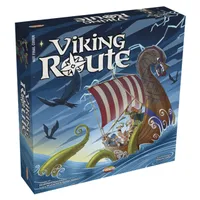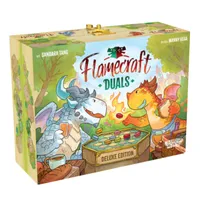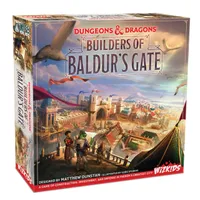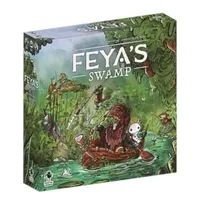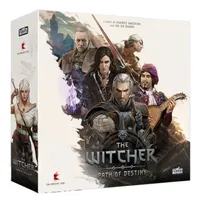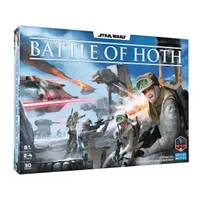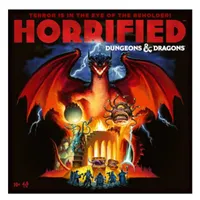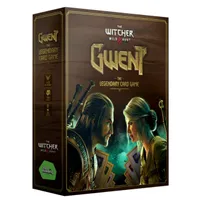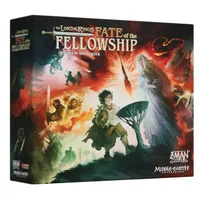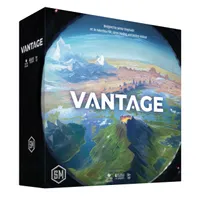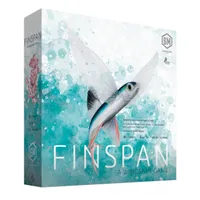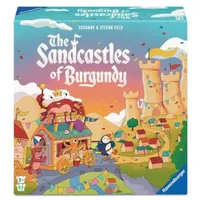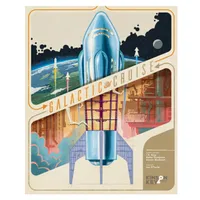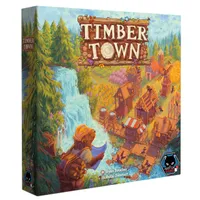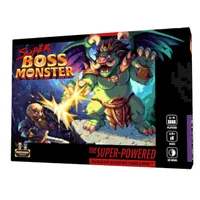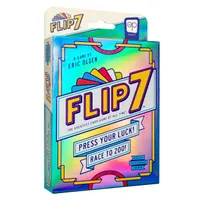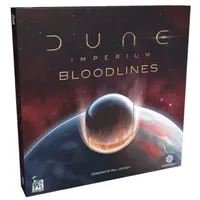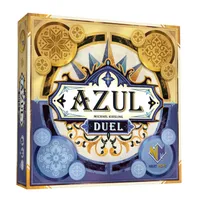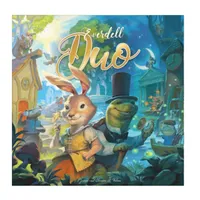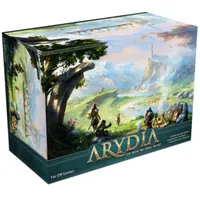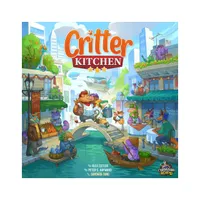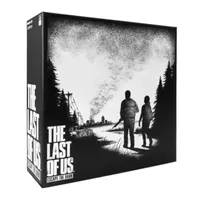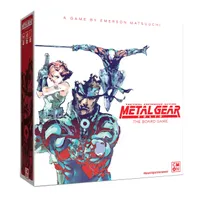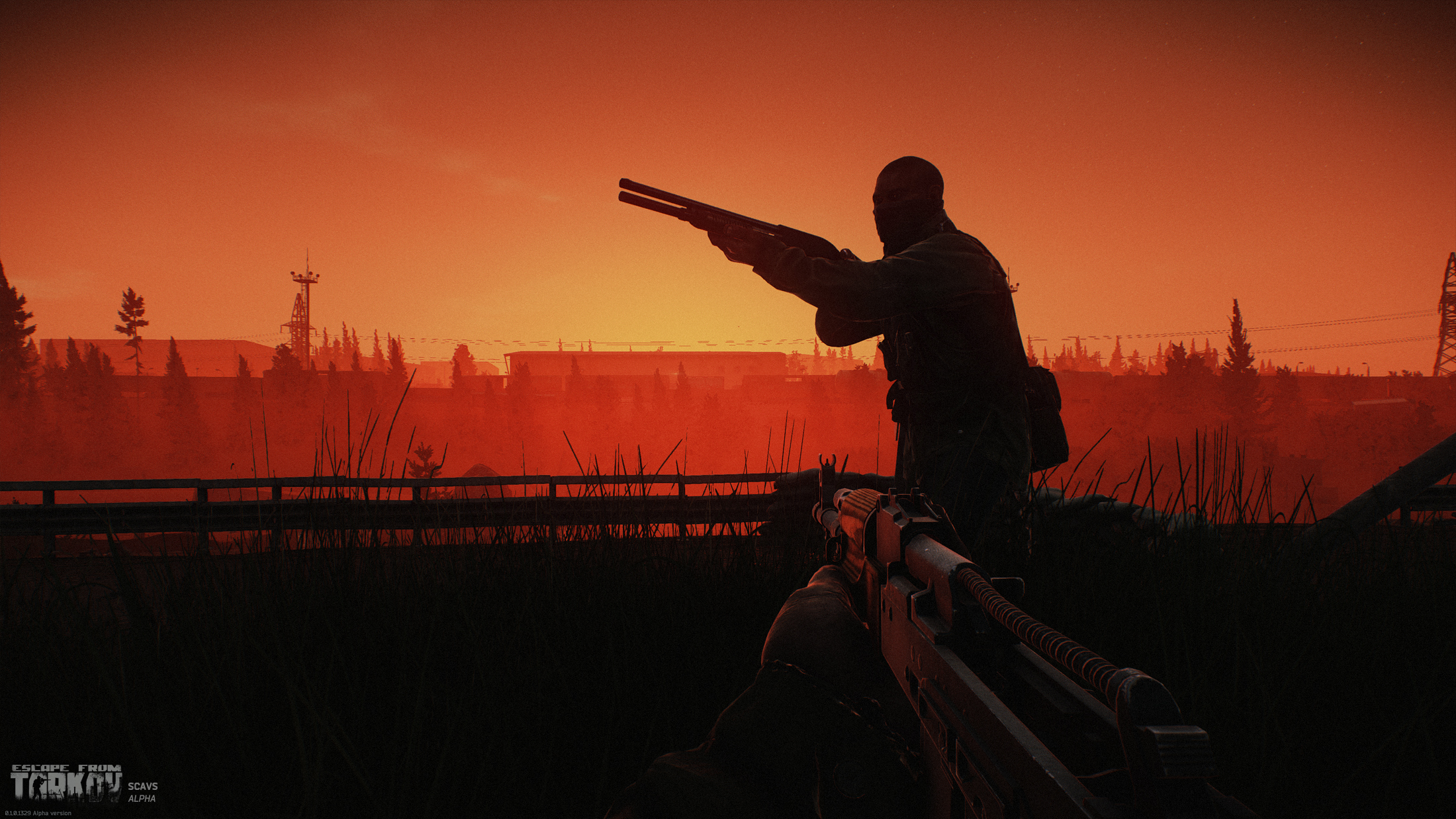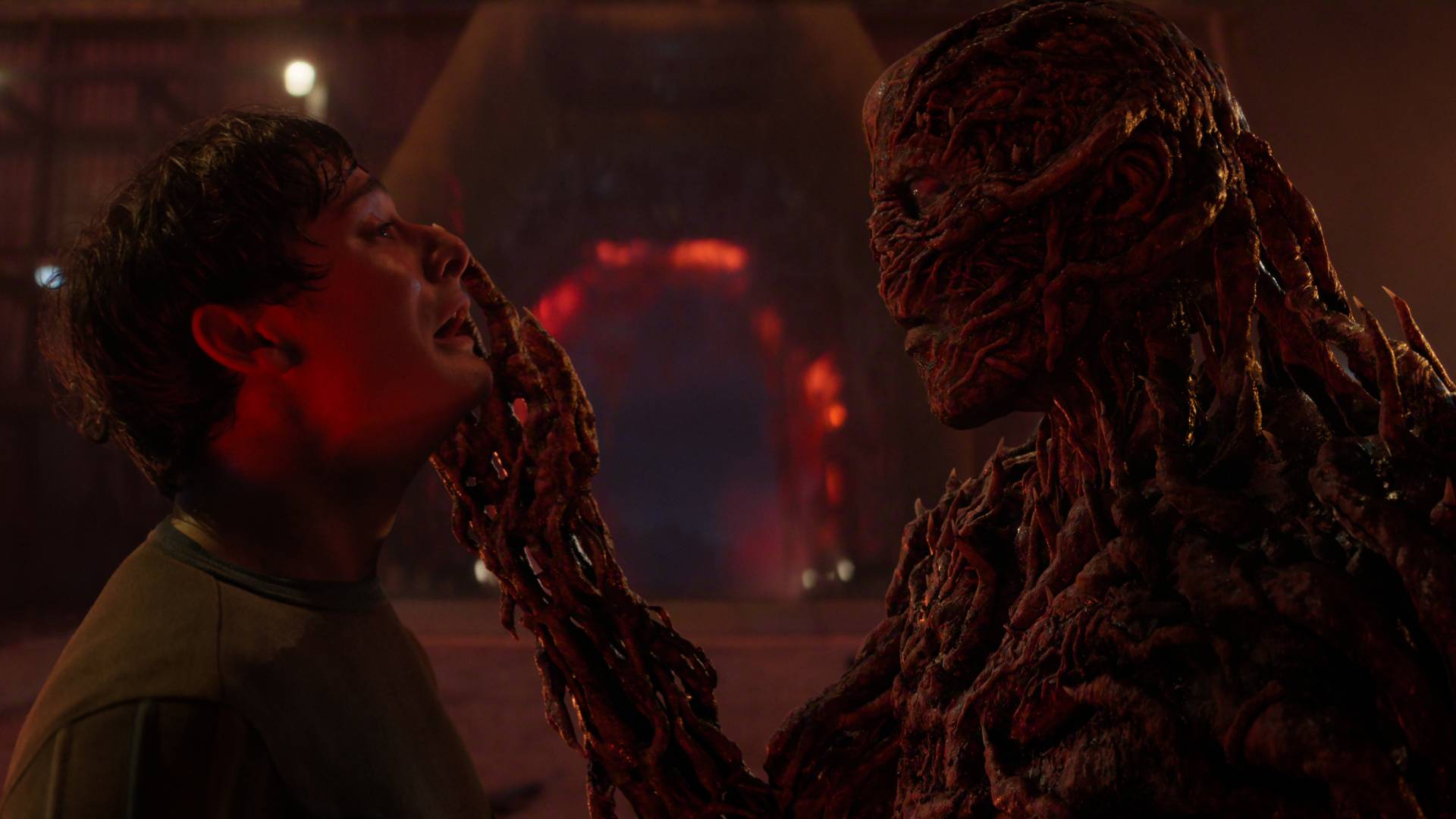The best board games 2025, with over 25 recommendations tested, reviewed, and rated by experts
These essential board games deserve a spot in your collection
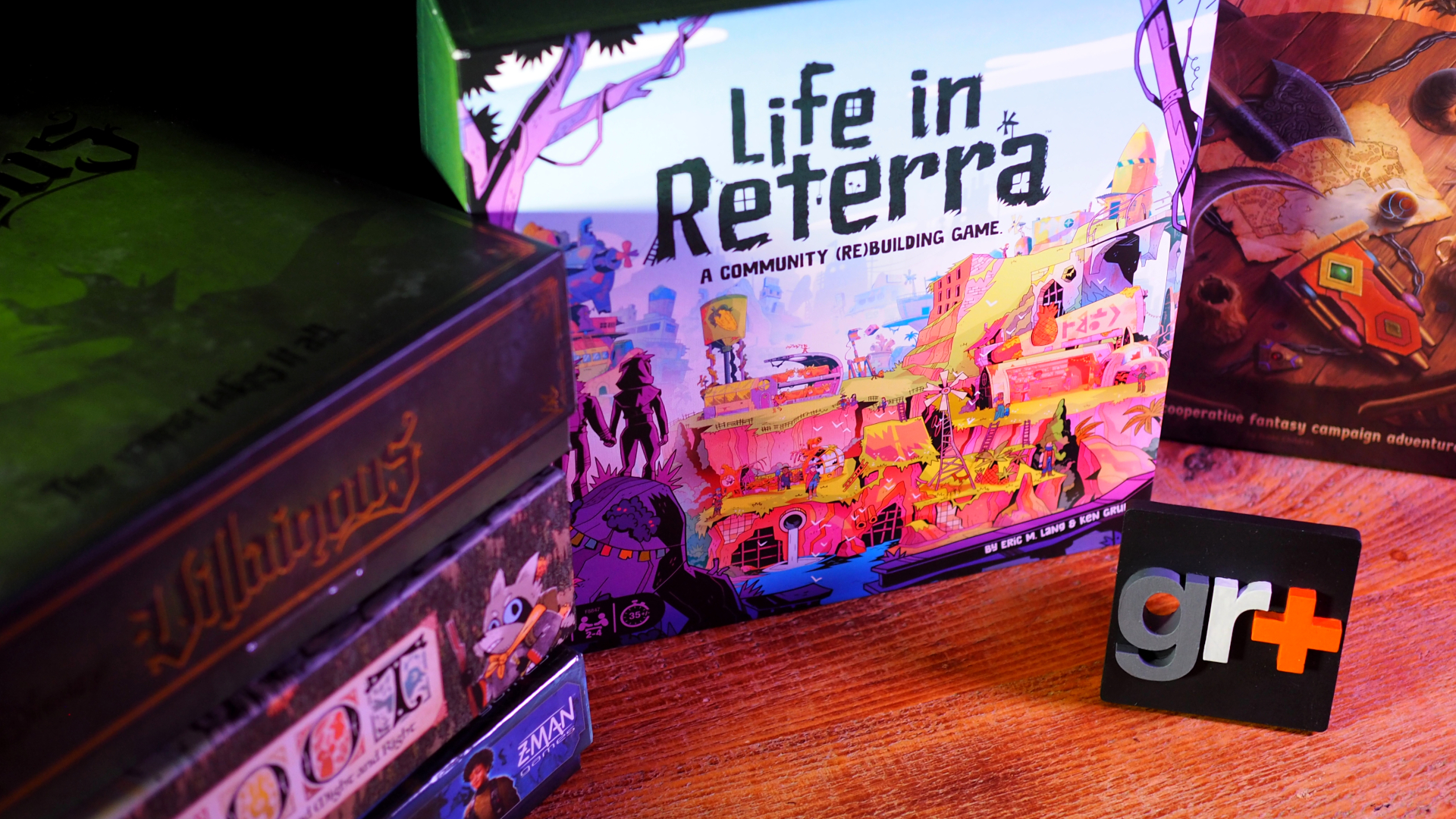
✅ Every product reviewed by experts
✅ Hundreds of board games tested
✅ Years of industry experience
Sweater season is officially here and the Holidays aren't far behind, which means it's time to break out the best board games for some cozy nights in. Where should you start, though? Considering how much choice there is right now (to say nothing of the highly-acclaimed board games that launched in 2025 like Fate of the Fellowship or Old King's Crown), deciding what's worth your precious time isn't easy.
That's why the GamesRadar+ team and I have rustled up what we think are the very best board games here. No matter what you're into, your experience level, or your budget, there will be something to suit you below. As an example, our top choice - Catan - is the perfect gateway game for newcomers but also serves as a board game night essential for more experienced players due to trend-setting mechanics. You don't even need to worry if you can't decide what you're in the mood for. Just head over to our guide on how to choose board games further down the page.
These suggestions aren't picked simply because they're popular, either. We review the best board games professionally, cover industry news, and conduct interviews with designers each week as part of our job. We also play them in our spare time as fans (something you can find out more about in the 'how we test' section). In other words? We won't ever recommend a product we don't truly believe in.
November 27, 2025: This guide has been updated with a new strategy recommendation, Brass: Birmingham, based on our very positive review.
October 30, 2025: Alongside a general seasonal refresh of this page's copy that brings it up to date with the latest industry developments, additions include references to recent game expansions, competitors, and updates. A new 'currently testing' section has also been made, complete with a grid showcasing the latest scores. Finally, fresh entries have been added to the 'best of 2025' section.
August 29, 2025: A new entry has been added to the best board games for adults section (Fate of the Fellowship), with an in-depth breakdown of why it deserves a place on your shelf alongside an expert opinion from the reviewer.

Benjamin has covered the board game industry on GamesRadar+ since 2018, and has written professionally for well over a decade. He began playing board games as soon as he was able to roll dice, and early favorites included the pirate-themed Buccaneer along with Talisman. He's currently enjoying the newly-released Hobbit: There and Back Again by Reiner Knizia.
Quick list
Want to get stuck in? Here's a bitesize roundup of our choices. If you'd like more detail, you can also jump to a full review of why each one deserves a place on this list of the best board games.
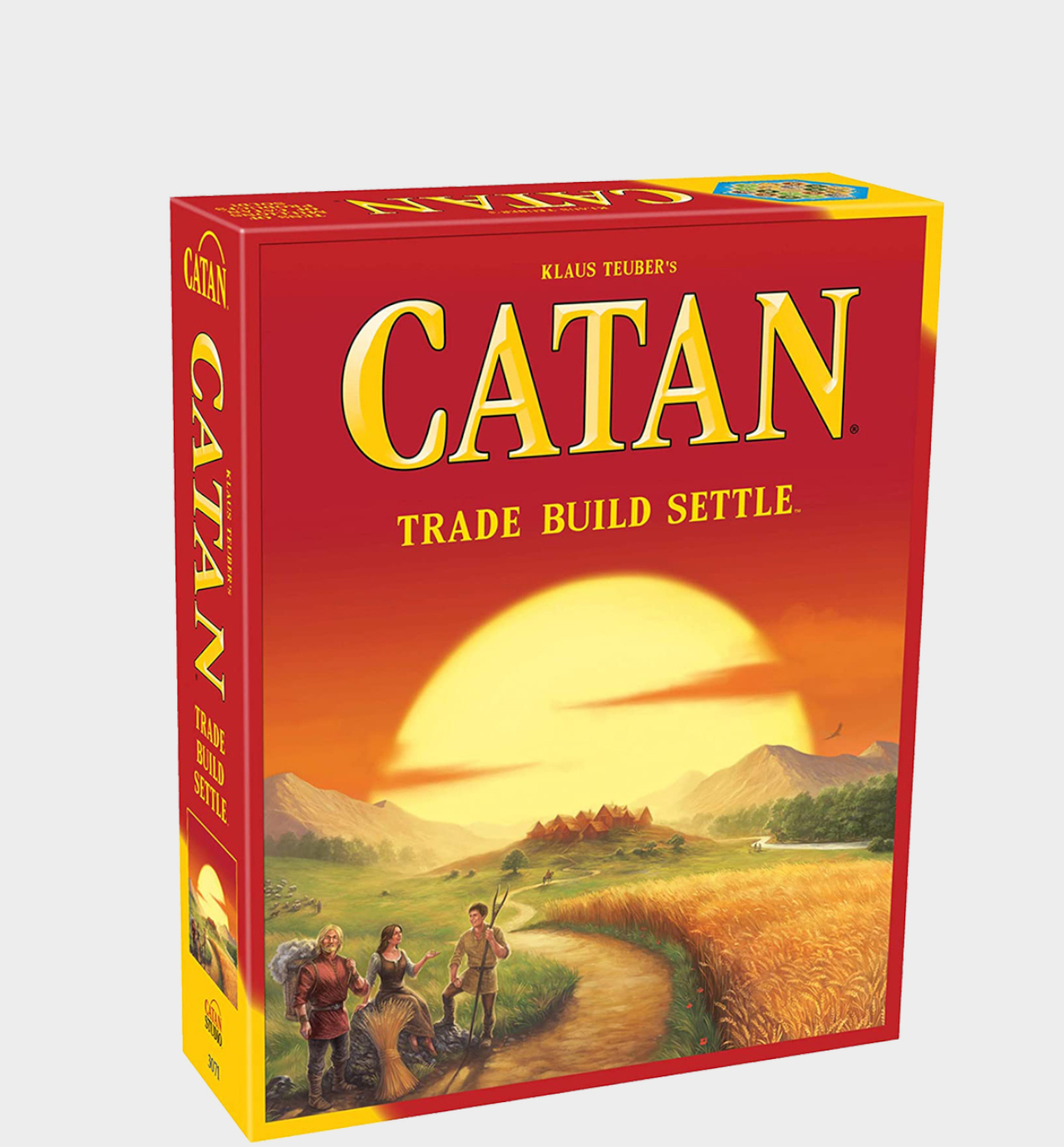
There's a reason why Catan is often called the perfect 'gateway' game; it's accessible, but still has enough bite to keep you invested no matter your skill-level or experience with board games. It deserves to be in every collection.
Read more below
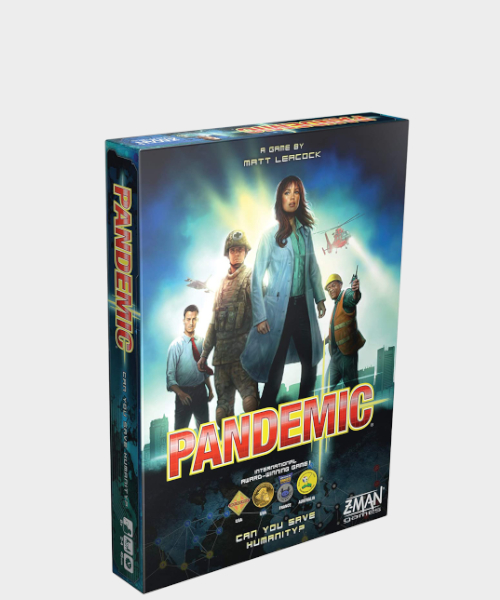
If you'd prefer to work with rather than against each other, this co-op classic comes highly recommended thanks to an emphasis on teamwork and nail-biting gameplay. It's challenging enough that winning is extremely satisfying.
Read more below

This new, award-winning game is already making waves thanks to nailing the 2-player experience; it forces you to bond as a team by offering challenges that can only be overcome as a pair. A must-have, if you ask me.
Read more below
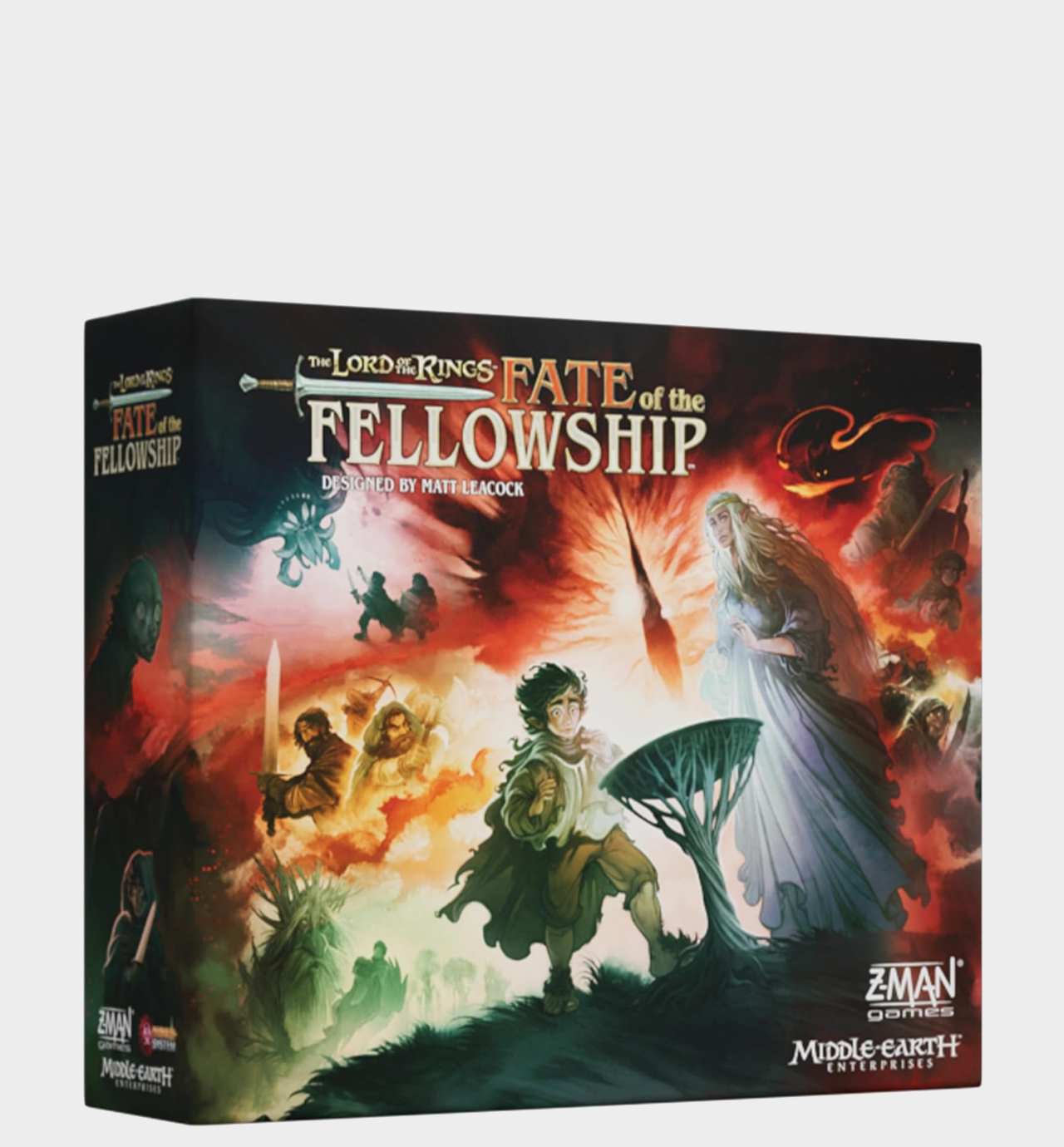
This might just be the most anticipated board game of 2025, and it's not hard to see why; it combines an edge-of-your-seat race against time with deep strategy and engrossing team tactics.
Read more below
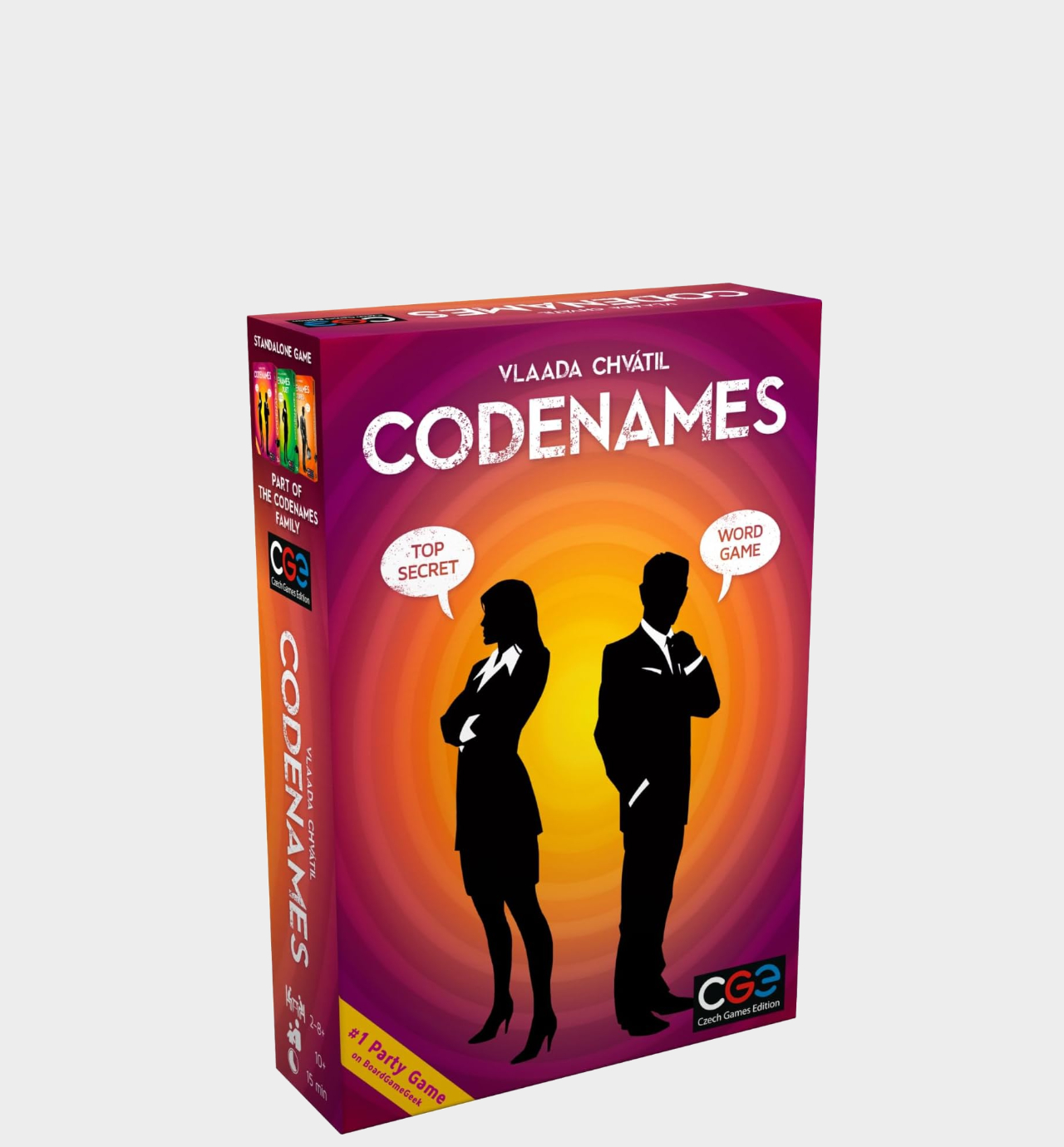
This word game with a secret-agent twist took the world by storm a few years ago, and it's one I'd say deserves to be in every collection. It's a devious, endlessly replayable association game that's great fun… but also helps you learn more about the other players.
Read more below
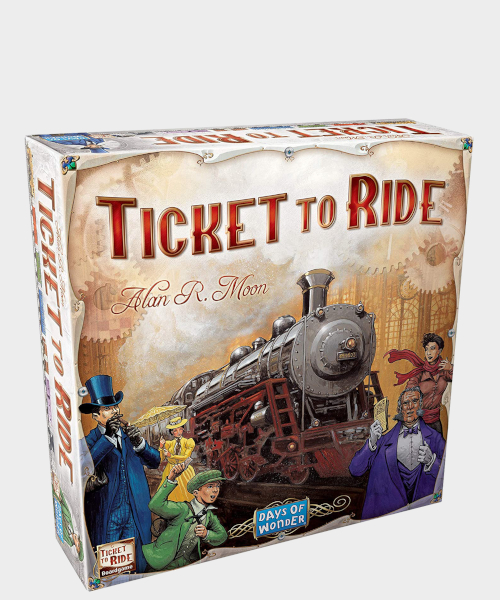
It's rare to find a board game you don't mind losing at, but Ticket to Ride manages it. This is a phenomenally chilled-out experience that anyone can get their head around, making it the perfect option to play with your family.
Read more below
Load the next 6 board games ↓
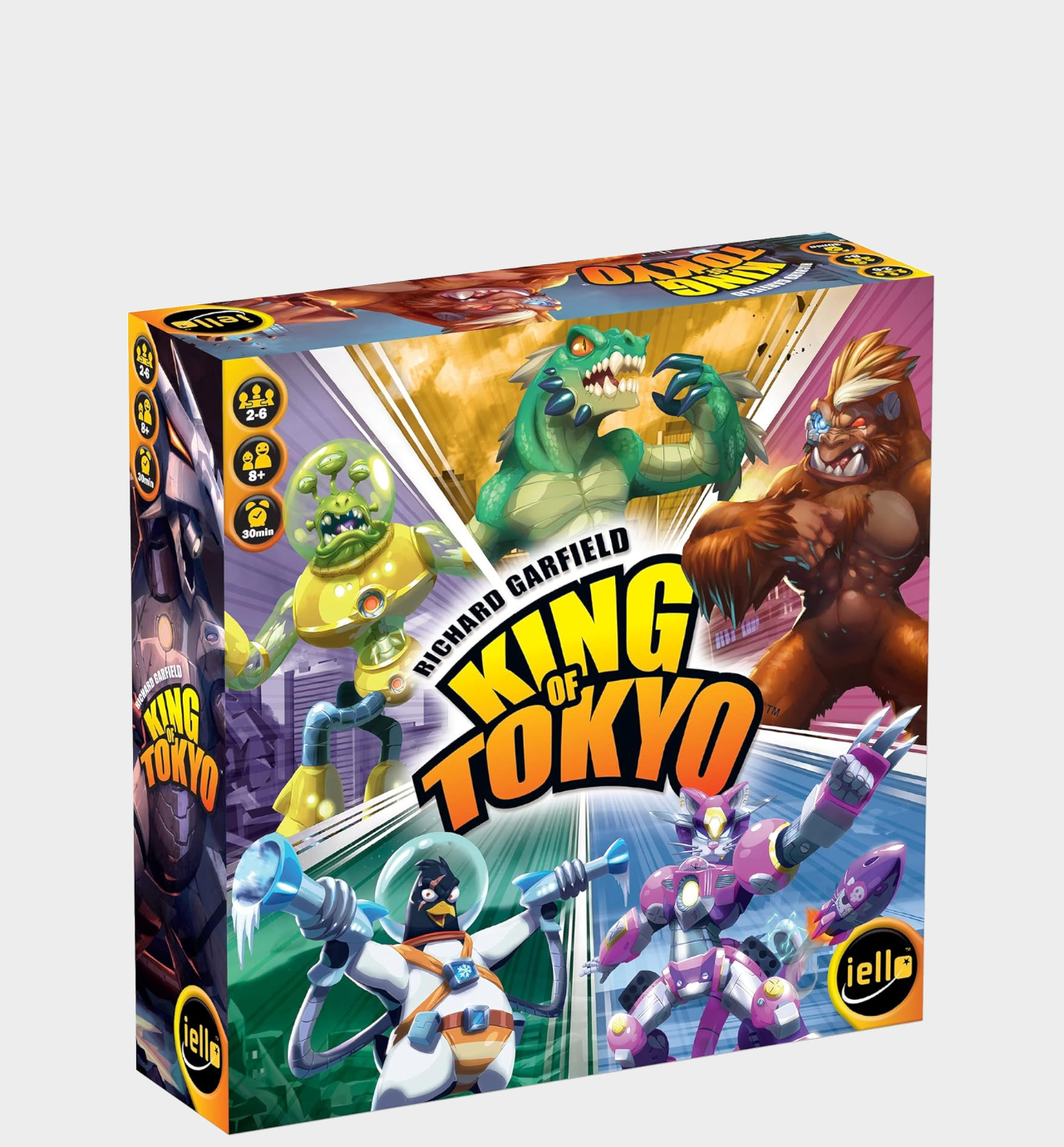
This game has an incredible elevator pitch; the wildest kaiju you've ever seen are battling to decide who can squash Tokyo. Its gameplay is just as novel thanks to masterful push-your-luck mechanics where high risk means high reward.
Read more below
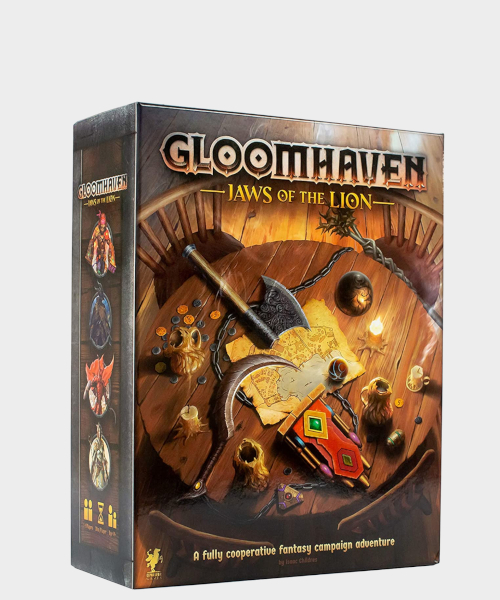
Thanks to a fully-realized world, branching storylines, and more depth than the average mine, Jaws of the Lion is a must-have for fantasy-lovers that want a new epic to explore. It eschews randomization too, so will appeal to those who love to strategize.
Read more below
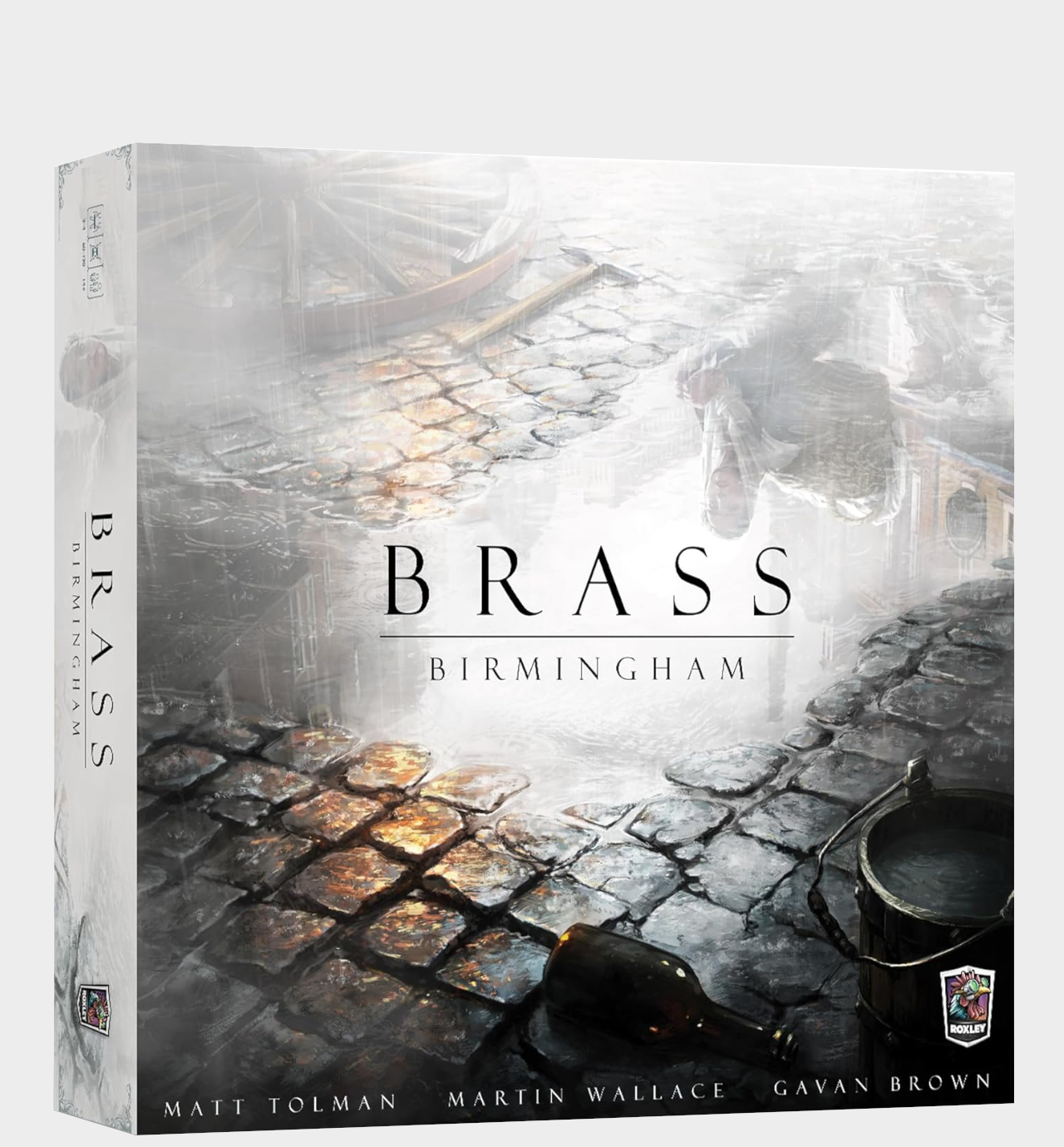
It's a genuine struggle to find something that's better-rated by the community than Brass: Birmingham. This economy game is widely held as one of the best in the business, and its handling of trade is masterful.
Read more
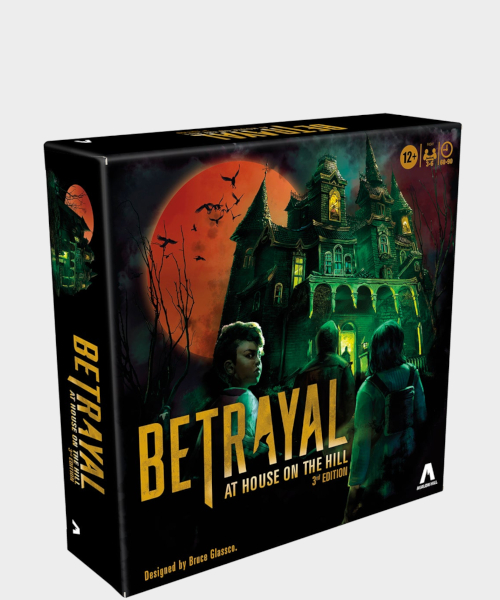
How long do you think you'd last as a horror movie hero? You get a chance to find out here, with surprises around every corner and edge-of-your-seat gameplay. While it's not necessarily the scariest game, it's the best for most people.
Read more below
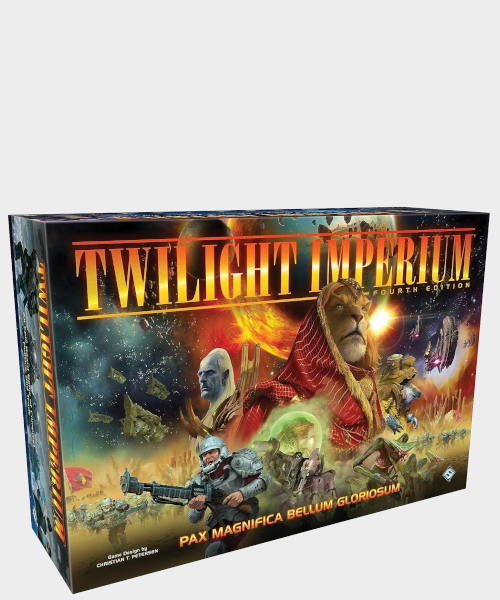
This sci-fi classic has been a go-to choice for fans of diplomacy and grand conquest since the 1990s, and you'd be hard-pressed to find a more epic board game. It takes a long time to play, but the effort is more than worthwhile.
Read more below
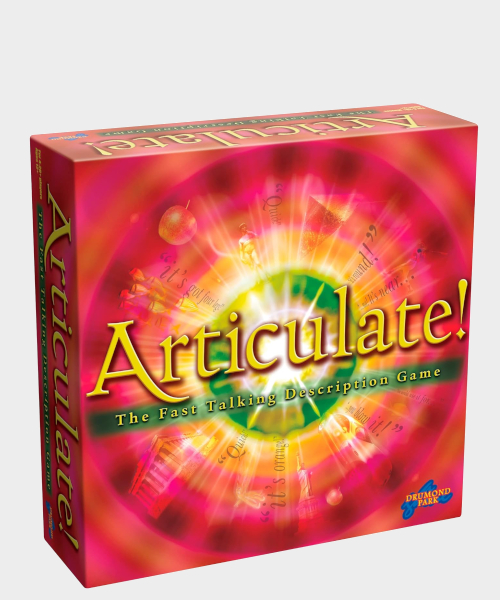
Do you like fun facts and amusing trivia? Articulate needs to be on your shelf yesterday. Besides being easy to understand so everyone can get involved (it's like charades, but faster-paced), its questions aren't going to go out of date.
Read more below
Best board game overall
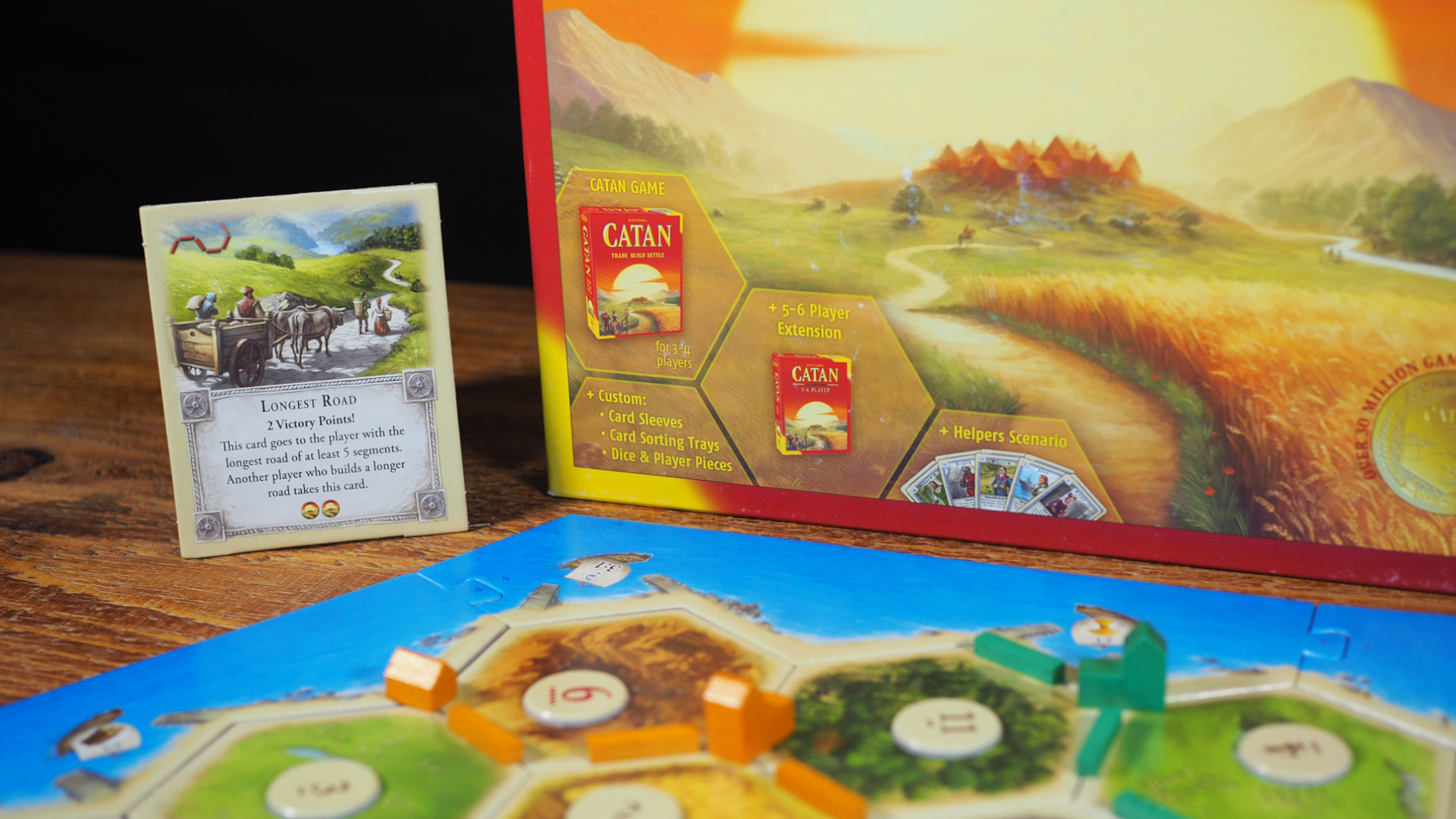
Specifications
Reasons to buy
Reasons to avoid
Catan is a big deal in the tabletop community. For one thing, most agree that it's the perfect 'gateway' into more sophisticated board games. If you're ready to graduate from the likes of Risk or Clue, it eases you in whilst still providing enough complexity for players to sink their teeth into (particularly in the new, streamlined 2025 edition).
Secondly, it might be one of the most influential games on this list. First published in 1995, it revolutionized the tabletop space and gained global recognition as a result. It also spawned an entirely new genre – 'Eurogames' – which now dominates the industry. With this in mind, it's hard to argue that Catan doesn't deserve a spot here as one of the best board games overall.
✅ You want a deeper board game that's still accessible: Catan is usually treated as the entry-point to 'hobby' gaming because it balances accessibility with deeper, less chance-based mechanic
✅ You want a stone-cold classic: This is the kind of board game everyone should have on their shelf. Besides being a trendsetter that transformed the space back when it launched, Catan still holds up as a damn good time.
❌ Your table is prone to arguing: Seeing as Catan pits you against each other in a struggle for space, rivalries could ensue. Bear that in mind if things can get a little heated around your table.
❌ You're used to more complex strategy games: Although it was revolutionary back in 1995 (it spawned an entirely new genre), things have moved on since then. Fans of modern strategy games may find it a little light.
Features & design: At face value, this is a resource-management game where players try to settle the eponymous island of Catan. Because space is limited, you'll all rush to secure resources (from stone to wood) which are used to build settlements and roads. These earn you Victory Points. As you might be able to guess, you'll need them to win.
Setting up shop next to the hottest goods doesn't guarantee success, though. Resources are given out each turn based on dice rolls, and these values are assigned randomly to an already random board at the beginning of a match. As such, you've got to weigh up probability and how likely something is to pay up ahead of time… or trade with rivals if you can't get what you need. Because feathers could be ruffled as you all dash to secure the most lucrative spots, this opens an amusing can of worms.
In terms of how it looks, Catan is equally forthright. Opting for classic wooden tokens and a realistic, birds-eye-view art style, it doesn't muddy the water with unnecessary pomp.
Gameplay: Even though it's easy to understand, Catan requires cunning if you want to snatch victory from the jaws of defeat. You can only get resources if you have a settlement next door, and these can't be placed if someone else owns a town nearby. That makes clever placement crucial, especially because you must build roads to reach certain board spaces. It's all about the bigger picture, so even though produce is given out randomly, foresight is rewarded.
You can try to edge a win by building the biggest military, constructing the longest road, or using well-timed cards too. This choose-your-own approach is Catan's biggest contribution to modern board game design; there's no 'right' way to go about things, so you're more in control.
Social interaction is encouraged as well, so it's not the kind of board game where you'll be checking your phone between turns. If a resource's number is rolled at the beginning of someone's turn, everyone with a settlement there gets produce. The floor then opens up to trade, which is its own twisty conundrum. Haggling for items may help you in the short term, but it could also bring your opponents closer to victory.
Similarly, hoarding resources won't do you any good. If you roll a seven at the start of a turn, the Robber is activated. This little pickle then steals half of every player's cards if they have over seven in their hand. They're then placed onto a tile to stop resource production there. Seeing as the person who rolled that seven gets to choose where the Robber goes, it's your chance to be mean.
This has the potential to cause friction if you have an argumentative table, but even that feeds into Catan's metagame. Annoying your rivals will guarantee that they won't trade with you, so even though there are ways around this (you can secure spaces which let players swap one kind of resource for another), it's a wrinkle worth considering. I've been sunk by this particular chestnut in the past, for example; I thought I was being clever by handicapping my biggest opponent's resources, but then I needed something only they had. Understandably, they told me to get stuffed when I approached them like Oliver Twist with an empty bowl.
That's why Catan has endured for 30 years in a nutshell – it makes memories. This isn't the kind of board game you sleepwalk through.
Criteria | Notes | Score |
|---|---|---|
Game mechanics | Catan revolutionized tabletop gaming and kicked off an entire genre when it launched. It's still just as compelling today. Because it rewards skill and forethought, victory is all the more satisfying. | 4/5 |
Accessibility | Even though it's by no means 'simple,' Catan is very easy to get your head around. It's the perfect gateway game for those graduating from Clue, Risk, or Monopoly. | 4/5 |
Replayability | Thanks to a randomized board and its focus on probability, you can keep coming back to Catan and get a different experience every time. | 5/5 |
Setup and pack-down | Putting the randomized board together with all its number tokens can be a faff at first, but it's not so bad once you've got the hang of things. | 5/5 |
Component quality | The artwork of Catan is iconic, but the latest version improves on a design that was starting to get long in the tooth. The tokens and board pieces are sturdy enough to survive a nuclear attack, too. | 4/5 |

"Catan sparked a revolution when it launched in the '90s, and gaming was changed for the better with its arrival. It isn't a relic better left in the past, however; it still holds up. Its core loop remains as engaging now as it was decades ago, and a wealth of ways to win gives you an agency you don't always get with family-friendly games." Read more: Catan review
Load honorable mentions ↓
Honorable mentions
Why you can trust GamesRadar+
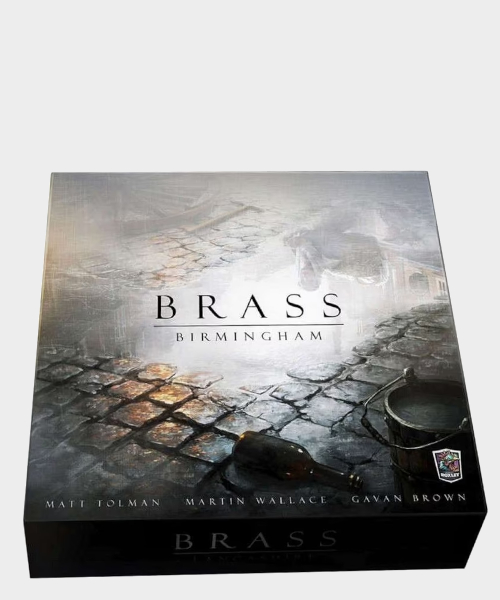
I'll go into more detail about why Brass is so fantastic later on (see the strategy section for that), but let's just say there's a very, very good reason why the community thinks so highly of this one. It's a superb example of deeply intelligent design that keeps drawing you back in.
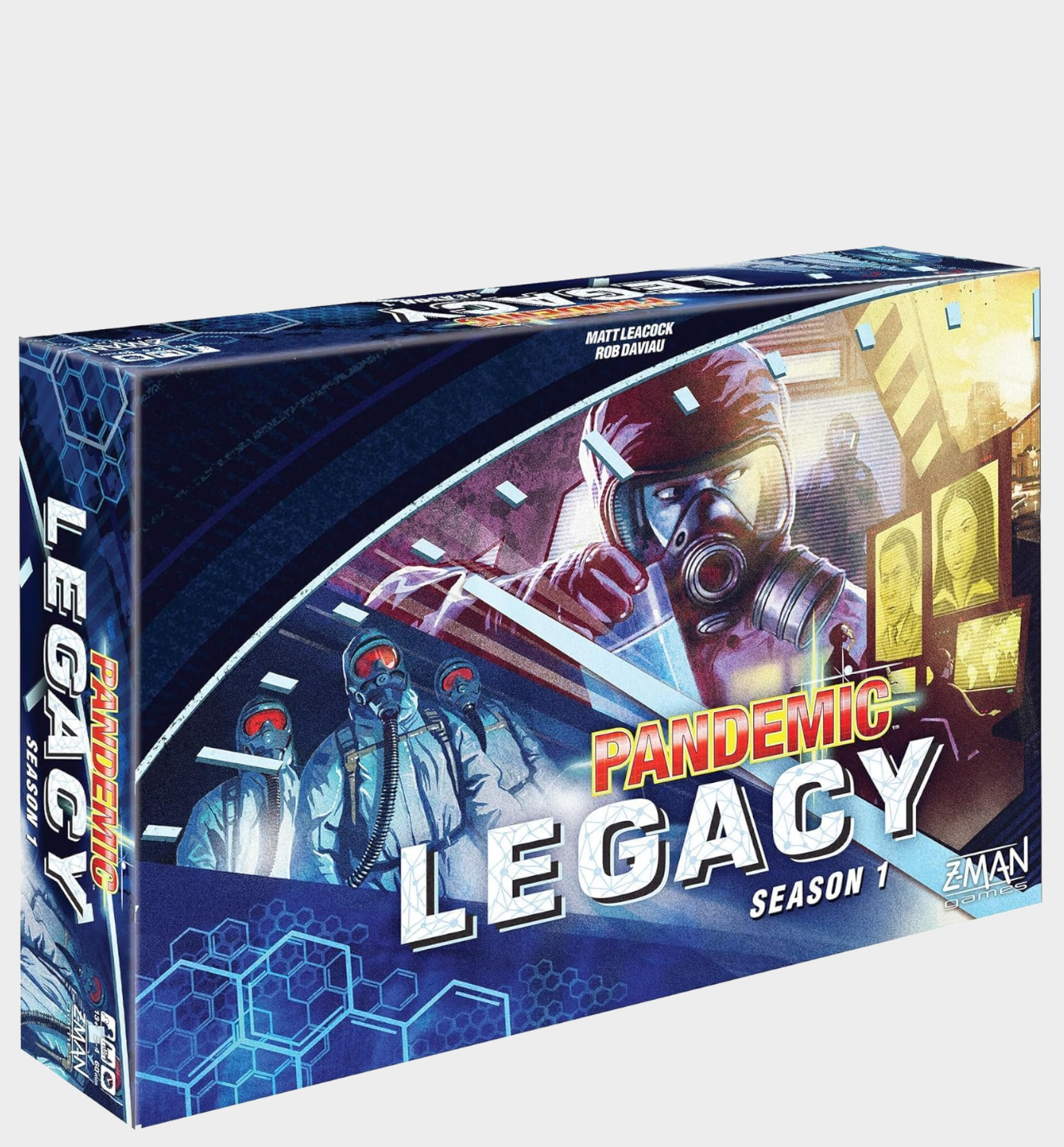
The Pandemic series had already made a name for itself when it got in on the 'Legacy' craze (a system where your actions have consequences that carry into your next match), and the result is arguably better than the original game.
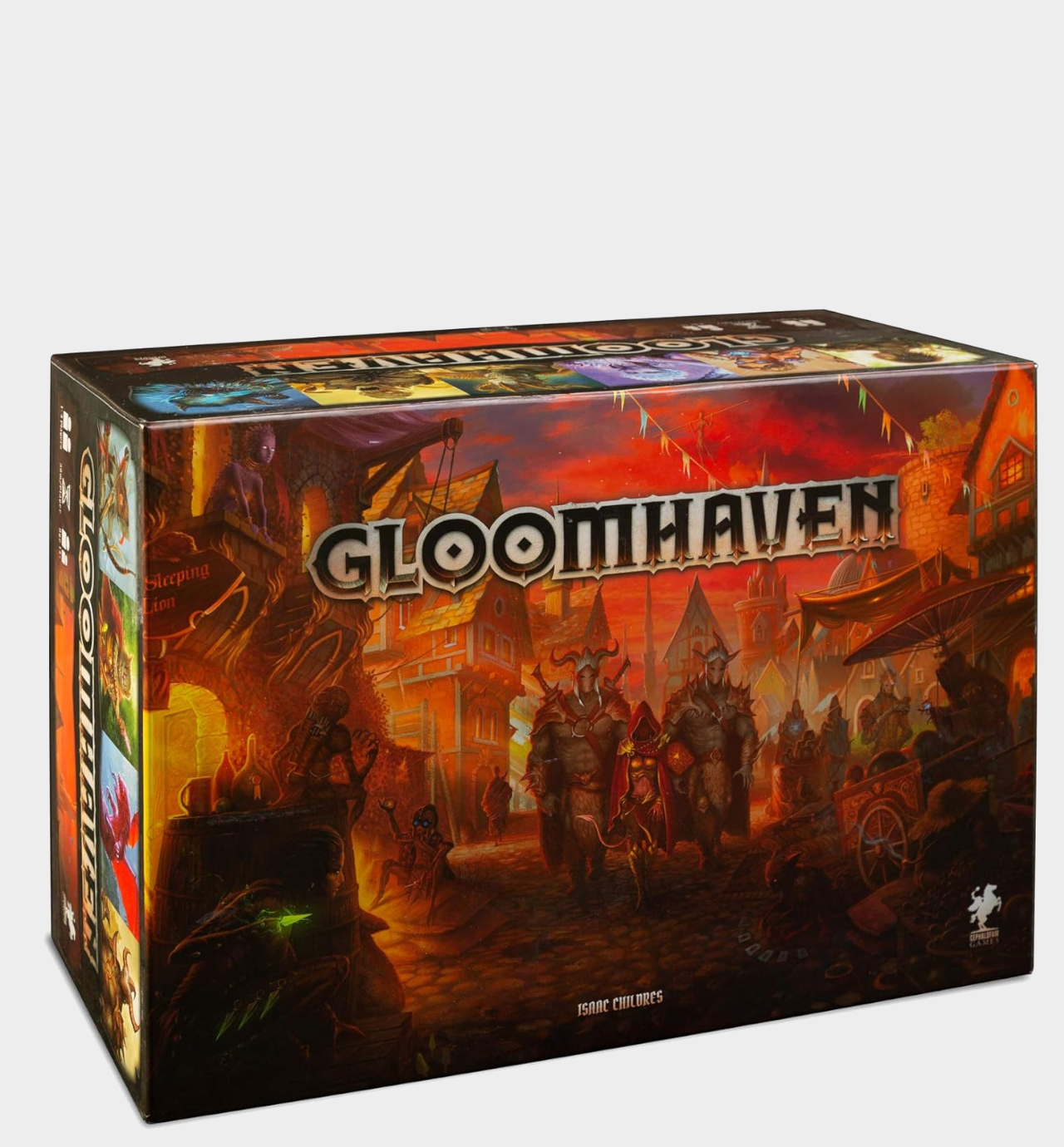
If you want another game which changed the industry forever, look no further than this. As mentioned in our Gloomhaven review, the sprawling epic takes dungeon-crawling mechanics and builds them into an adventure unlike anything else.
Best co-op board game
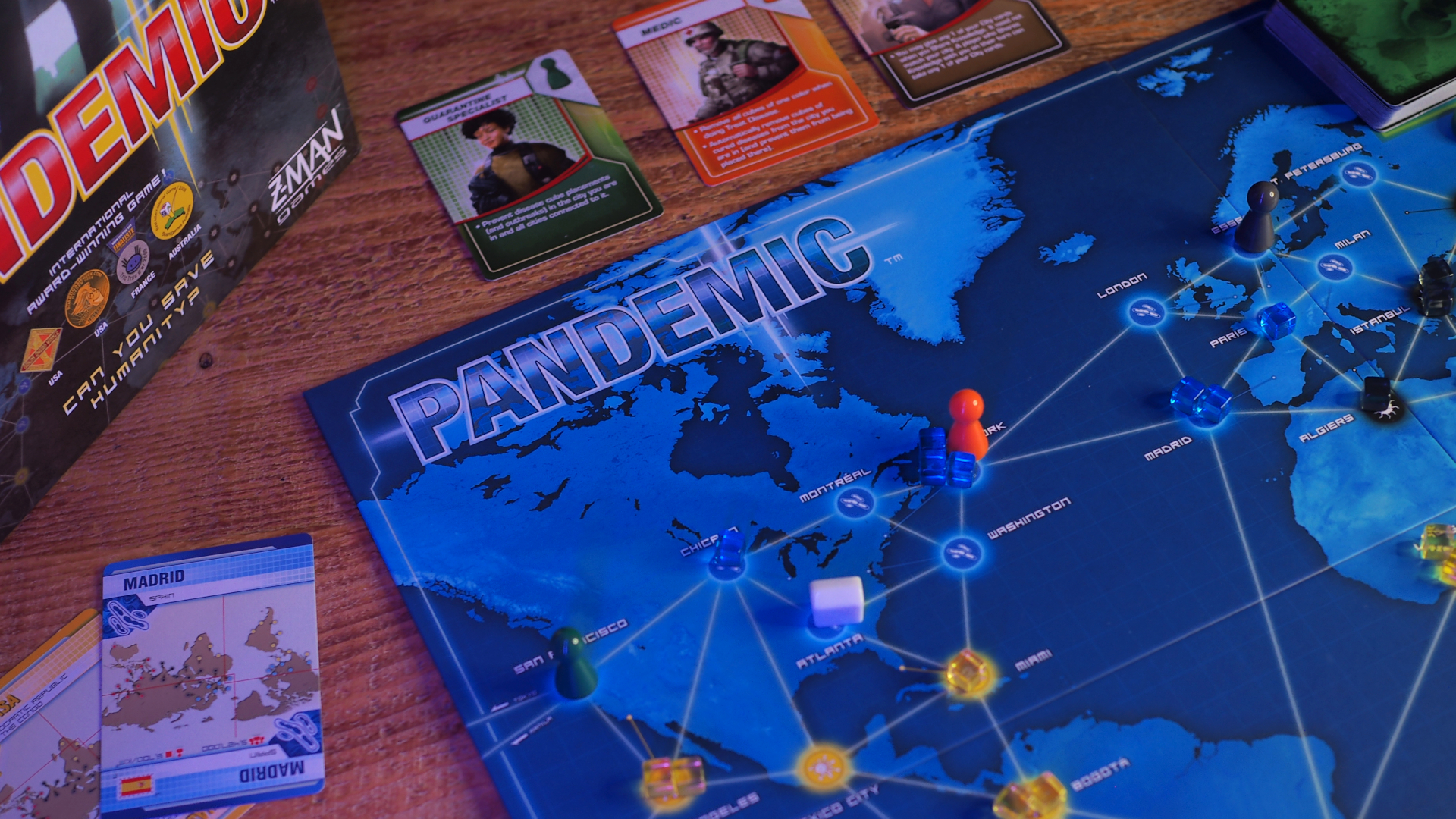
Specifications
Reasons to buy
Reasons to avoid
The odds are against you from the start in Pandemic, but that's the beauty of it. This team-based epic is never less than thrilling, and it doesn't feel hopeless either. Despite being tasked with curing a clutch of super-diseases, good communication (not to mention the ability to think on your feet) will see you through. Want satisfying cooperative board games for your collection? This should be at the top of the pile.
Sure, its theme hits closer to home nowadays. But there's something cathartic about giving a pandemic the boot… even if it's only in this tabletop world of tokens and cards.
✅ You want a gripping team game: Battling each other for supremacy can be exhausting, especially if the people you're playing with are competitive. That makes this co-op challenge a breath of fresh air. You win or lose together, and good communication is essential.
✅ You're looking for a challenge: This game doesn't take any prisoners, and that makes it all the more enthralling. You'll find yourself pushed to the brink as you wrestle with its clever mechanics.
❌ You don't like pressure: Tensions run high in Pandemic (you are saving the world, after all), so anyone that doesn't like pressure in games won't enjoy it.
❌ You want something easy: Want to avoid raising your blood pressure? It's probably better to stay away from this one - part of the fun in Pandemic is that it forces you to strategize on the fly.
Features & design: You're racing against the clock in Pandemic - you've got to contain and cure four deadly diseases that are sweeping across the globe. Naturally, this is far from a walk in the park. For starters, new infections (represented by dinky cubes) are placed on random cities each turn. If enough cases gather in one place, they'll spill into neighboring areas in a devastating domino effect. To make matters worse, the number of infections deployed each turn increases over the course of the game. Spin your wheels and you'll get overwhelmed.
This leaves you with a difficult choice: research a cure by collecting cards (at which point the game stops placing infections for that particular disease), or remove infections at a local level so you can keep things under control.
The game's visuals amp up this tension with a style taken from the CSI playbook. Although the movers are basic, single-color pawns, everything else feels flashy. It's the sort of thing you'd expect to see displayed on a massive screen while someone says something dramatic, like "my god - San Francisco has fallen."
Well, apart from the disease cubes. I've always thought that those could pass for sweets, which is pretty distracting on the whole. (Ah, forbidden jellies - how delicious you seem.)
Gameplay: Pandemic's balance of risk and reward secures its throne as one of the best board games overall. Is it better to keep disease levels down so that they don't spread from city to city in the short term, or should you play the long game and go all-in on developing cures? There's no right answer, and this puts the power into your hands. Random chance dictates which cards get drawn from turn turn, of course, but everything else is all down to your strategy.
More importantly, that question will keep you on the edge of your seat from start to finish. I've rarely seen our board group more invested than when they're playing Pandemic, and the need to constantly change your battleplan on the fly means that communication is vital - a must for co-op games.
It's true that all this can be stressful. But it's also gripping. As mentioned in our review, such white-knuckle decision-making "shows off everything tabletop gaming is capable of."
Criteria | Notes | Score |
|---|---|---|
Game mechanics | There aren't many co-op board games that can so elegantly balance tension and teamwork. This is a masterclass in strategy. | 5/5 |
Accessibility | It may look intimidating, but Pandemic is pretty easy to get your head around. Mastering it is a whole other matter, though. | 3/5 |
Replayability | Infections are placed at randomly-selected locations at the start of the game and can spread in any number of directions, creating a cascading domino effect of possibility. That means there should be plenty to keep you busy. | 5/5 |
Setup and pack-down | While it isn't a chore to lay out, Pandemic does require you to place a number of 'disease' cubes around the board before play begins. More will be used throughout the game, so there's quite a lot to put away once you're done. | 3/5 |
Component quality | Thanks to a design reminiscent of CSI thriller shows and hardy tokens (be it the cures or tiny disease cubes), there's little to complain about here. | 5/5 |

"There's no real board game canon, but if there were, Pandemic would clearly be included. While the subject matter might sound particularly dark, the actual mechanics of where to place resources are straightforward and serve as a good shift from map-based games like Risk to more crunchy titles. It's a classic for a reason, but is maybe a second step rather than a gateway game." Read more: Pandemic review
Load honorable mentions ↓
Honorable mentions
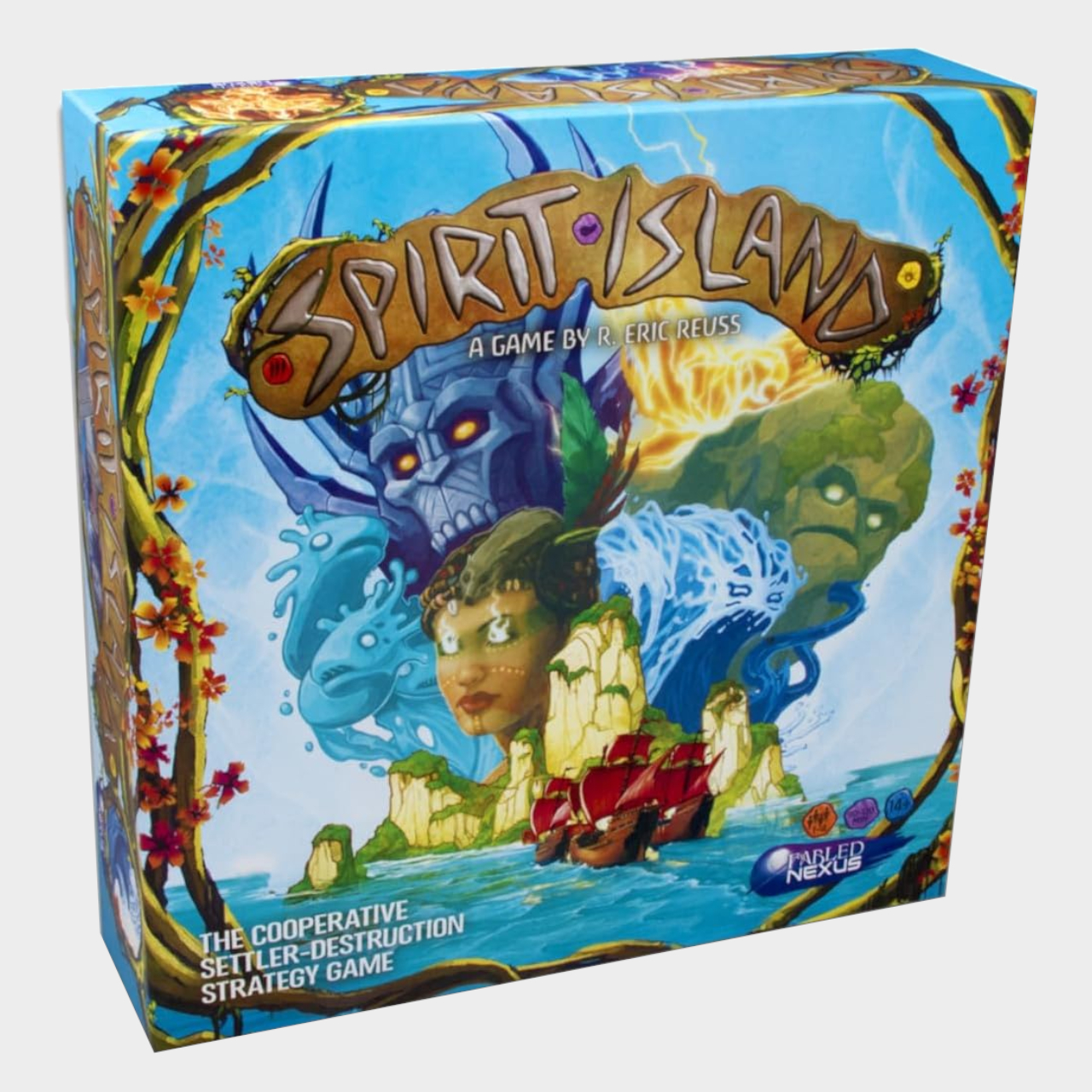
It's tough to find a co-op board game with a better reputation, and we gave the game a glowing response in our Spirit Island review. This is a true giant of the genre thanks to its smart, engrossing gameplay that flips the script on cliches.
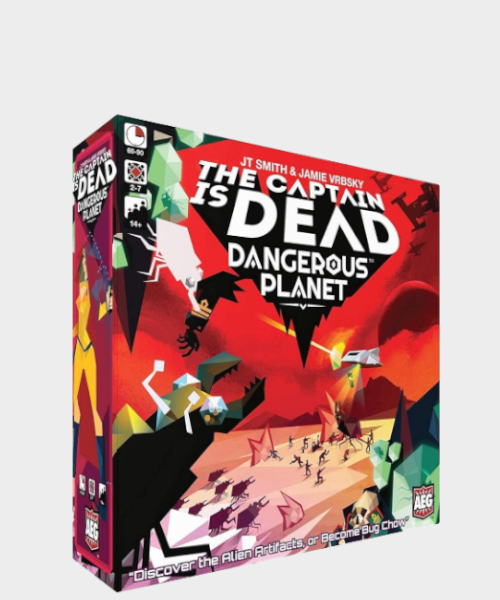
Expert gamers, listen up; your latest challenge is here. This series is a love letter to both Star Trek and tower defence, and it's devilishly difficult. The strategy needed made us score this bug-hunt highly in our The Captain is Dead: Dangerous Planet review.
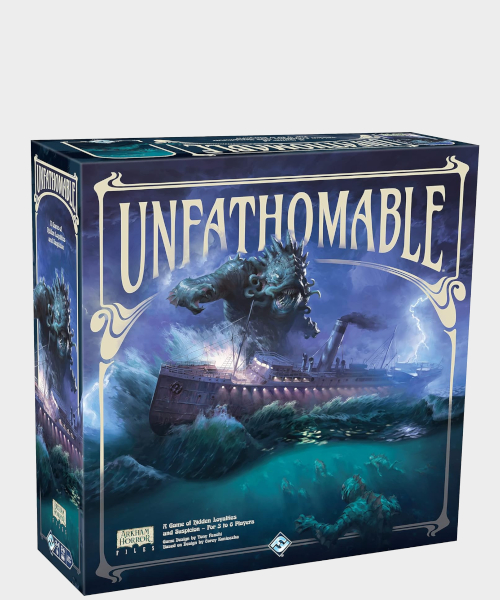
If you're a fan of deception games and horror, this needs to be on your radar. Despite being quite long, the struggle between traitors, other players, and monsters is gripping... which is why our Unfathomable review was so full of praise.
Best board game for 2 players
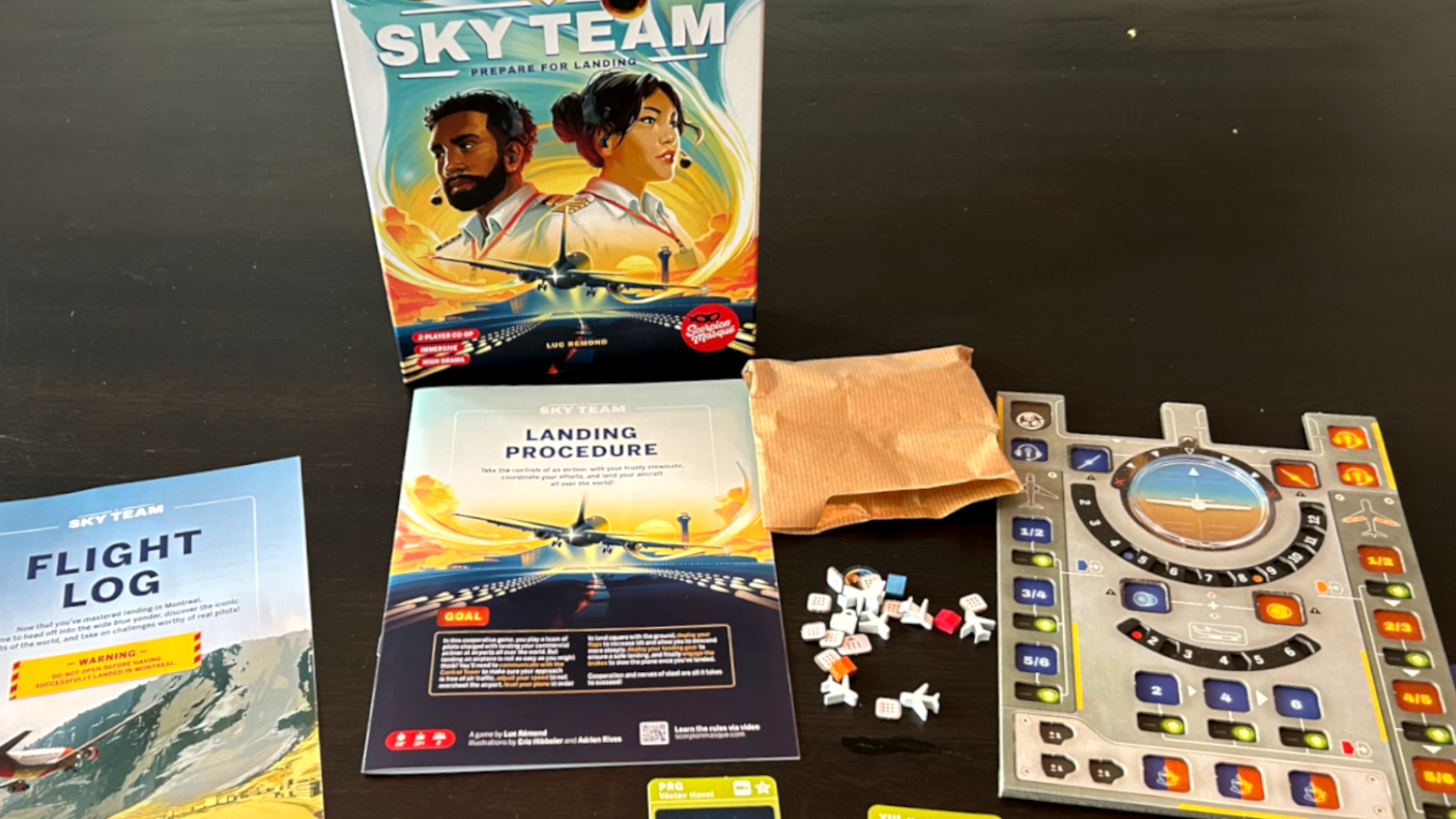
Specifications
Reasons to buy
Reasons to avoid
As the runaway success of 2024, Sky Team is taxiing its way onto more than a few wishlists. (That's the perk of winning a prestigious Spiel des Jahres award, I suppose.) Happily, it lives up to the hype; this is an engrossing exercise in teamwork that really makes you feel closer to one another because you're forced to overcome limited communication. That makes it great for couples, and edges out newcomers like Azul Duel in our opinion.
It's also been designed specifically with two people in mind, and is small enough to take on the go. In other words? It's a textbook definition of what the best 2-player board games should look like. Rather than trying to please everyone with mechanics that scale for a crowd, it's laser-focused on providing the best experience for a pair.
✅ You want a very replayable, portable game: Thanks to a wealth of scenarios and numerous mechanics drip-fed over time, Sky Team should impress. Because it's a fairly contained game that packs away into a reasonably-sized box, it's a great on-the-go option too.
✅ You want a game you can learn together: As the name would suggest, Sky Team is all about teamwork and coordination… and those skills will be put to the test as its scenarios become more challenging.
❌ You don't like limited-communication games: You aren't able to talk with your co-pilot once dice are rolled (you need to find other ways to communicate), so chatter-boxes may struggle here.
❌ You hate flying: A game where you have to land a plane, and can potentially crash it, may not be the best fit for aerophobes.
Features & design: Sky Team bundles you into the cockpit and asks you to land a plane without reducing it to a smear across the runway. In true jet-setting fashion, you and your co-pilot will fly across the world to airports which offer unique challenges.
Because each player contributes dice to control everything from speed to angle of approach, being on the same page is crucial. If you aren't in sync, things will quickly go pear-shaped. This is why those dice are rolled in secret and you aren't allowed to tell each other what you've got – you'll need to think up another way of communicating.
This is capped off with a board modelled on aeronautical instruments, so you'll certainly feel the part. Actually, that's one of my favorite things about the game; it looks much more lavish than you'd expect for the price.
Gameplay: Seeing as you can't talk once those dice have been rolled, it's hard not to become invested in Sky Team from the start. This isn't something you can play on autopilot – pun very much intended. Problem-solving together is baked into its DNA.
OK, I'll admit that this can be stressful. But if you want a challenge, you'll find one here. It doesn't throw you in at the deep end, either. Designer Luc Rémond has done a great job of easing you into harder objectives, not to mention drip-feeding new mechanics that shake things up.
As an example, perks are available to balance the scales – you can spend reroll tokens to undo a bad result or deploy a coffee to adjust the number up or down. Working out when to break out these bonuses is a significant part of Sky Team's strategy.
The result is a game that seizes you by the collar and refuses to let go. If you can only get one board game for 2 players, make it this one.
Criteria | Notes | Score |
|---|---|---|
Game mechanics | Because it's specifically designed for two people, Sky Team is laser-focused on providing the best possible experience for just a couple of players. It'll bring you closer together thanks to an edge-of-your seat system where you can't communicate with one another normally, and that ratchets up suspense. | 5/5 |
Accessibility | You'd think a game about flying planes would be complicated, but it's actually very straightforward. It's also good at introducing new mechanics piece by piece. | 4/5 |
Replayability | Sky Team includes plenty of scenarios with their own challenges to overcome, so it's primed for repeat-visits. | 4/5 |
Setup and pack-down | This game doesn't take up loads of room when set up, so it's fairly easy to lay out and put away. | 4/5 |
Component quality | Whether it's thanks to a board that's inspired by an aeroplane cockpit or hard-wearing tokens which aren't going to be easily damaged, Sky Team impresses. | 4/5 |

"If you're trying to find something you can play as a couple or take with you on vacation, Sky Team is reporting for duty. It combines left-field problem-solving and a wealth of fresh challenges to keep you engaged from beginning to end." Read more: Sky Team review
Load honorable mentions ↓
Honorable mentions
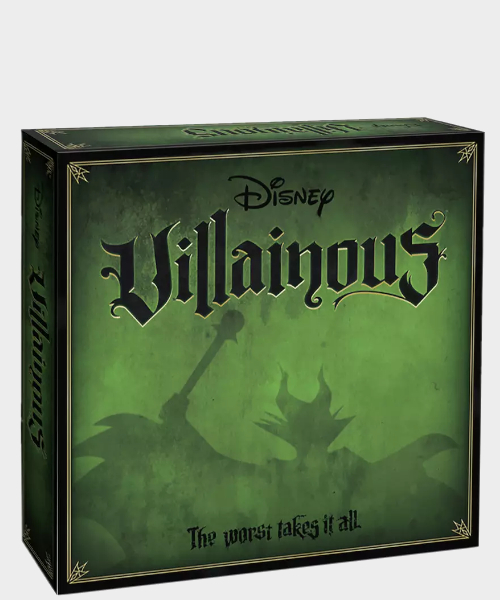
If you can get to grips with its rules, you'll discover one of the most rewarding picks here. Like our Disney Villainous review says, it sings in every respect that counts; it feels fresh each time you play, and different match-ups encourage new strategies.
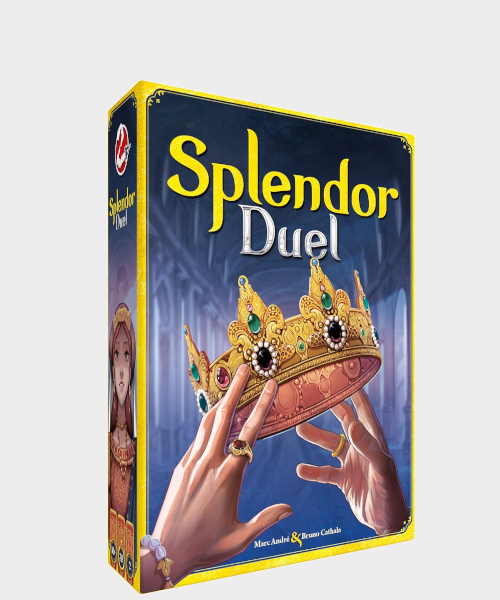
Are you a competitive person? You'll appreciate this two-player variant of Splendor. Much like 7 Wonders Duel, it reduces its predecessor in size and scope without sacrificing quality. In fact, it's potentially better… as our Splendor Duel review explains.
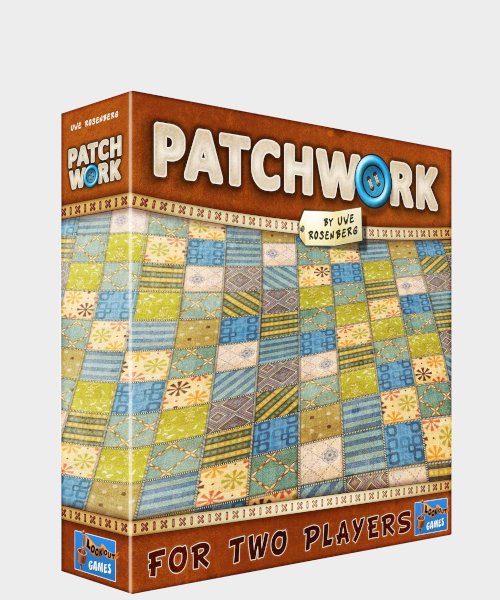
This puzzle game is simple but oh-so satisfying. It's essentially tabletop Tetris, except you're trying to fill your board with quilt patches. You lose points for blank spaces at the end, so you'd better get your thinking cap on.
Best board game for adults
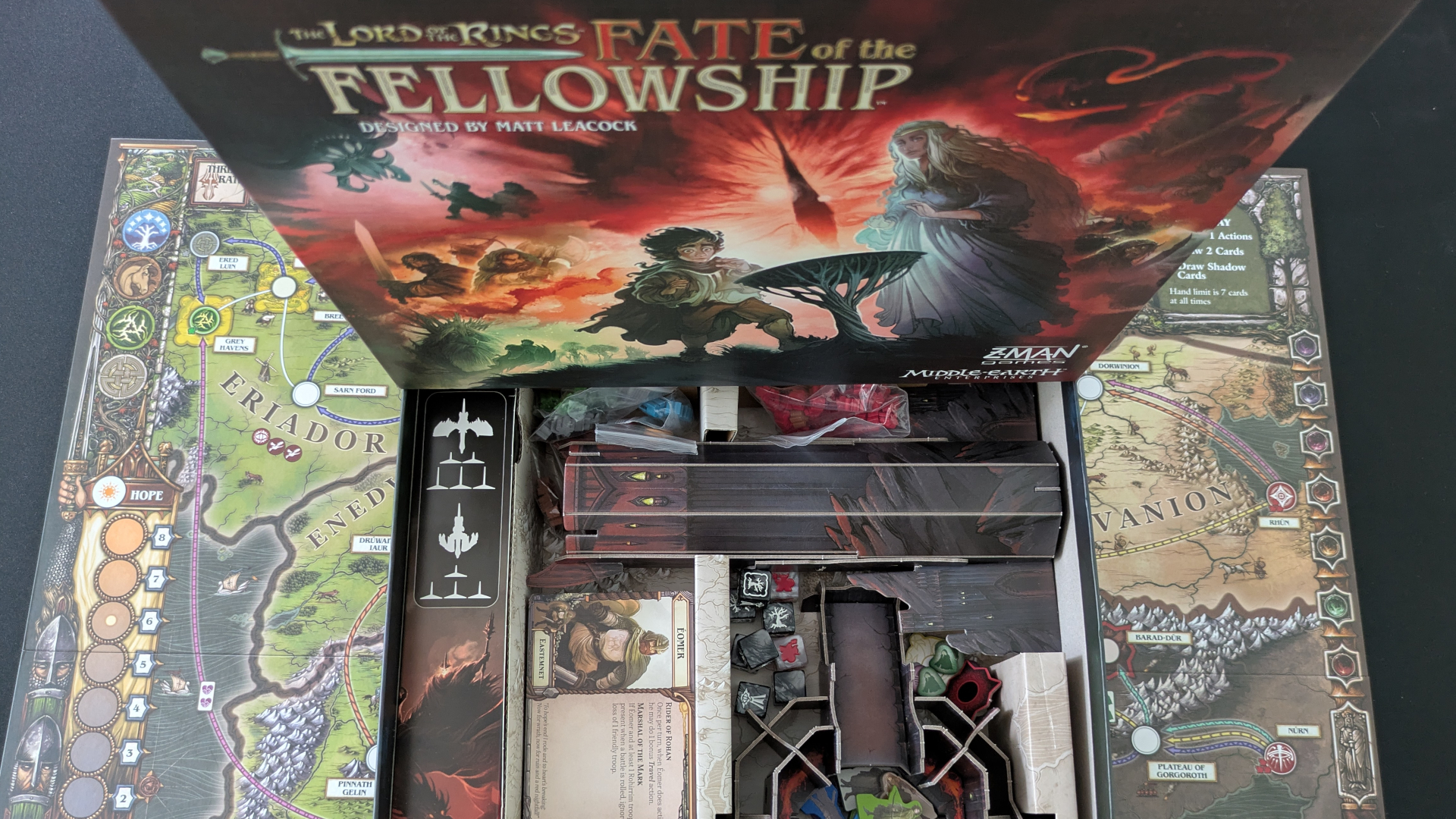
Specifications
Reasons to buy
Reasons to avoid
Of all the board games to hit shelves in 2025, few have caused so big a stir as Fate of the Fellowship. It's one of those lightning-in-a-bottle moments; the project was designed by a tabletop legend (Matt Leacock, the man behind Pandemic), it focuses on a globally beloved franchise, and borrows mechanics from a critical darling that set the industry on fire. That gives it enough momentum to steamroll onto countless wishlists… and thankfully, the hype is justified.
Although it's not perfect, Fate of the Fellowship is both clever and deeply compelling in equal measure. If you're a fan of grand strategy or the kind of mechanics that'll hook you into revisiting them time and again (a must for the best adult board games), it's the year's must-play.
✅ You enjoy a good challenge: Fate of the Fellowship will test you and your team like few other games. There's plenty for board game veterans to sink their teeth into.
✅ You love Pandemic or its spin-offs: Because this game is based on the (excellent) Pandemic system, any fans of the franchise will find a lot to love here.
❌ You want something lightweight and breezy: Thanks to its many moving parts and layered mechanics, this may be heavy-going for more casual players.
❌ You don't like co-op games: Want to wipe the floor with your opponents and storm your way to victory? Yeah, you probably won't like this one. You win or lose together.
Features & design: It may be built on the excellent Pandemic system, but don't assume this is a mere palette-swap with Lord of the Rings branding slapped over the top. Fate of the Fellowship adds smart new twists to the formula that help it stand apart, and it's arguably superior to its predecessors in many ways.
Rather than disease spreading across the board as per Pandemic, you're trying to hold back Sauron's hordes as they stampede across Middle-earth. It's not just about battling legions of orcs to a standstill, either; you'll also tackle other objectives whilst helping Frodo evade the enemy for long enough to destroy the One Ring. Because you have limited actions per turn and must juggle priorities like a clown at a kid's birthday party, it's an exercise in crisis management.
At least you'll have something pretty to look at as you witness the end of the world. The production values here are excellent, whether it's vivid artwork or tokens that go above and beyond like the unnecessarily handsome dice tower of Barad-dur.
Gameplay: There's a delicious tension holding Fate of the Fellowship together. Do you work toward your objectives, or should you tackle the armies that are slowly covering the lands in a second darkness? You can't do both. Because more enemy tokens will gradually be added to the board each turn, every decision counts – and a rising sense of panic keeps everyone on the edge of their seats.
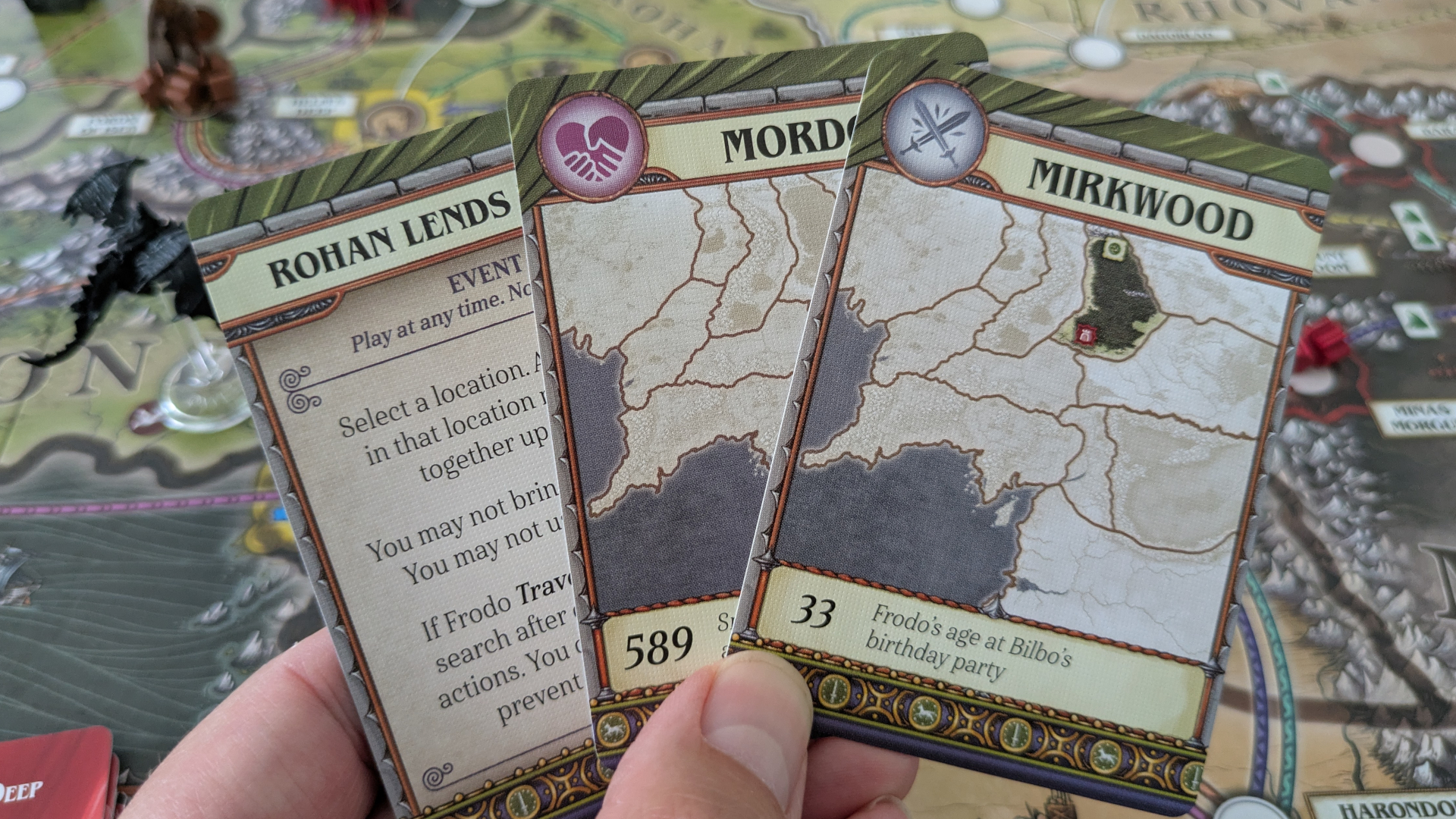
We interviewed developer Matt Leacock ahead of launch, and he told us that Fate of the Fellowship was "definitely the most thematically and mechanically rich game I’ve worked on."
Fans of Pandemic should find this familiar, but soon they'll enter uncharted territory. Sauron's Ringwraiths are constantly searching for Frodo and the Ring, for example, and the Dark Lord's gaze sweeps from location to location throughout the game. Inching the hobbit toward Mount Doom is a dangerous business as a result. Plus, you've got to complete certain scenarios before you're even allowed to destroy the ring – and there are lots of different ones to choose from, giving ample replayability.
Fate of the Fellowship isn't without its issues. A lot of actions rely on collecting certain symbols, so you'll be left without much to do if you don't have the right ones (which is obviously frustrating). Equally, the board can become very cluttered later in the game as endless tokens march across its length. Nonetheless, those issues are worth putting up with for what is an otherwise incredible experience.
Criteria | Notes | Score |
|---|---|---|
Game mechanics | This Pandemic spin-off builds on what made the original so compelling for a fresh and exciting experience. | 4/5 |
Accessibility | Fate of the Fellowship gives you a lot to balance, so it's not the most beginner-friendly. | 3/5 |
Replayability | There are numerous scenarios to work through, and the randomized card deck means Sauron's forces will march to different locations every time. | 5/5 |
Setup and pack-down | You'll have to contend with a lot of bits – be they tokens, cards, player aids, or miniatures – after playing, so it's a bit of an undertaking to put away. | 3/5 |
Component quality | A vivid art-style and incredibly well-made pieces are marred only by rather flimsy cards. | 4/5 |

"Fate of the Fellowship builds on the classic cooperative game Pandemic to create a richer, tougher, and more thematic experience than the original based on Tolkein's famous novel. Its clever objective system means you're always hitting plot beats from the novel, but exactly what those are is up to you, ensuring impressive variety and replay value. And beyond your chosen objectives the game lets your group weave its own narrative of Frodo's journey to try and destroy the One Ring by throwing it into the fires that forged it. The occasional duff turn that it throws up is well worth enduring for the sake of the grander story and the challenge." Read more: Fate of the Fellowship review
Load honorable mentions ↓
Honorable mentions
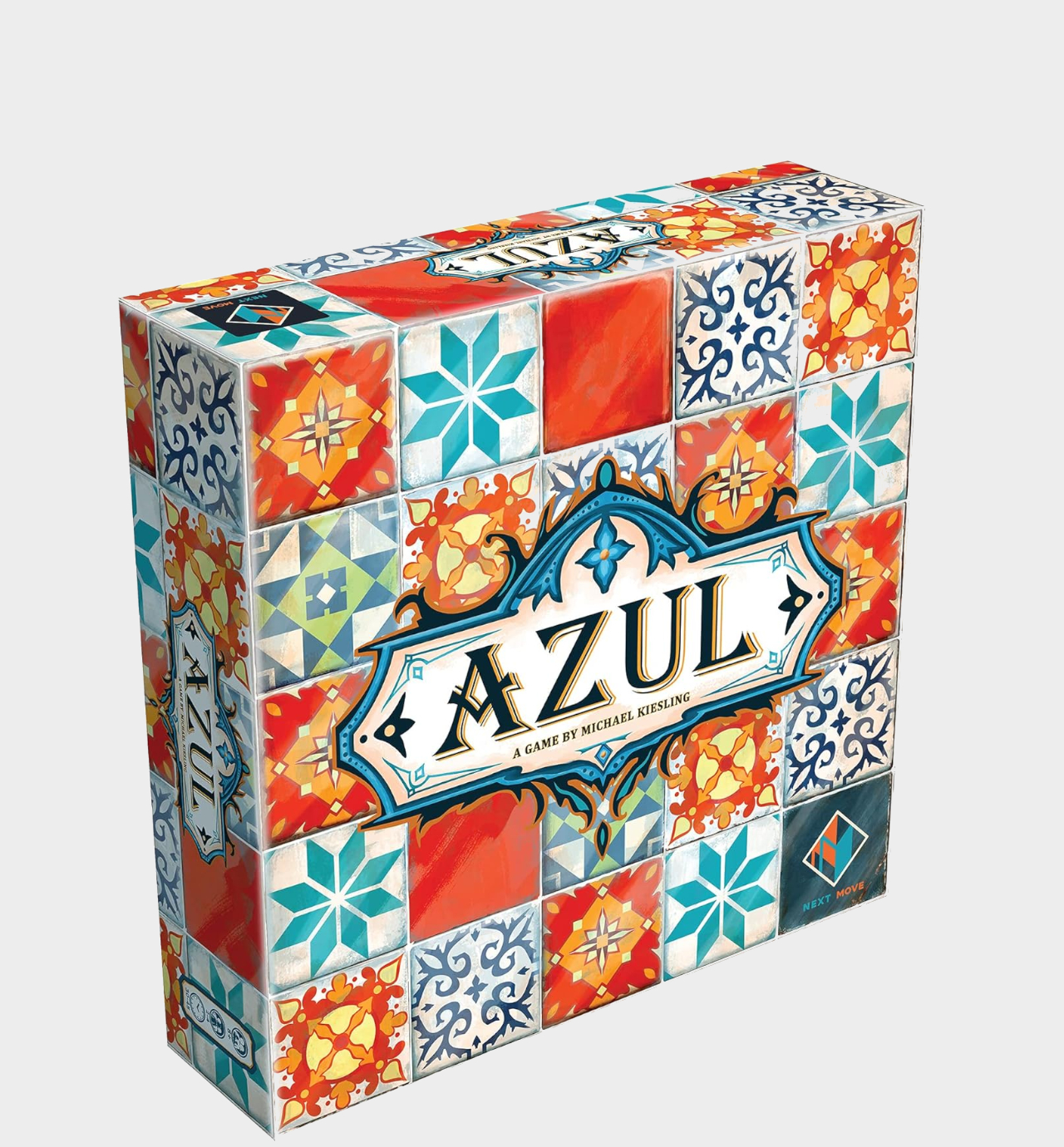
This puzzle board game is mesmerizing both in terms of its gameplay and looks. Besides being different every time you play, each match is a satisfying conundrum to solve. You'll want to keep coming back for more, as noted in our Azul review.
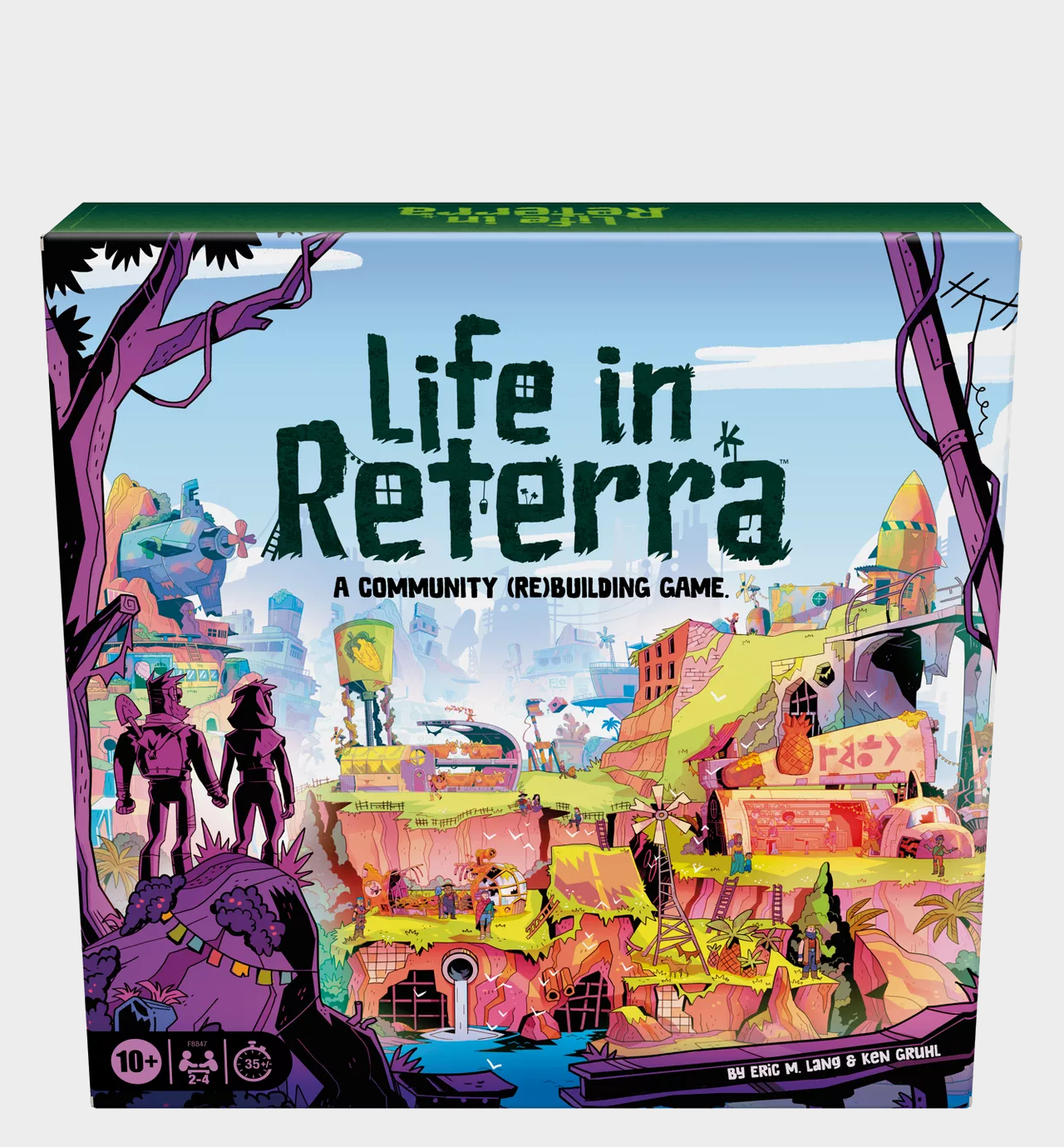
Combining the tile-laying brilliance of Carcassonne with surprisingly smart strategy, this is a brilliant, moreish option for games night that has enough longevity to keep you playing for months. We gave it five stars in our Life in Reterra review.
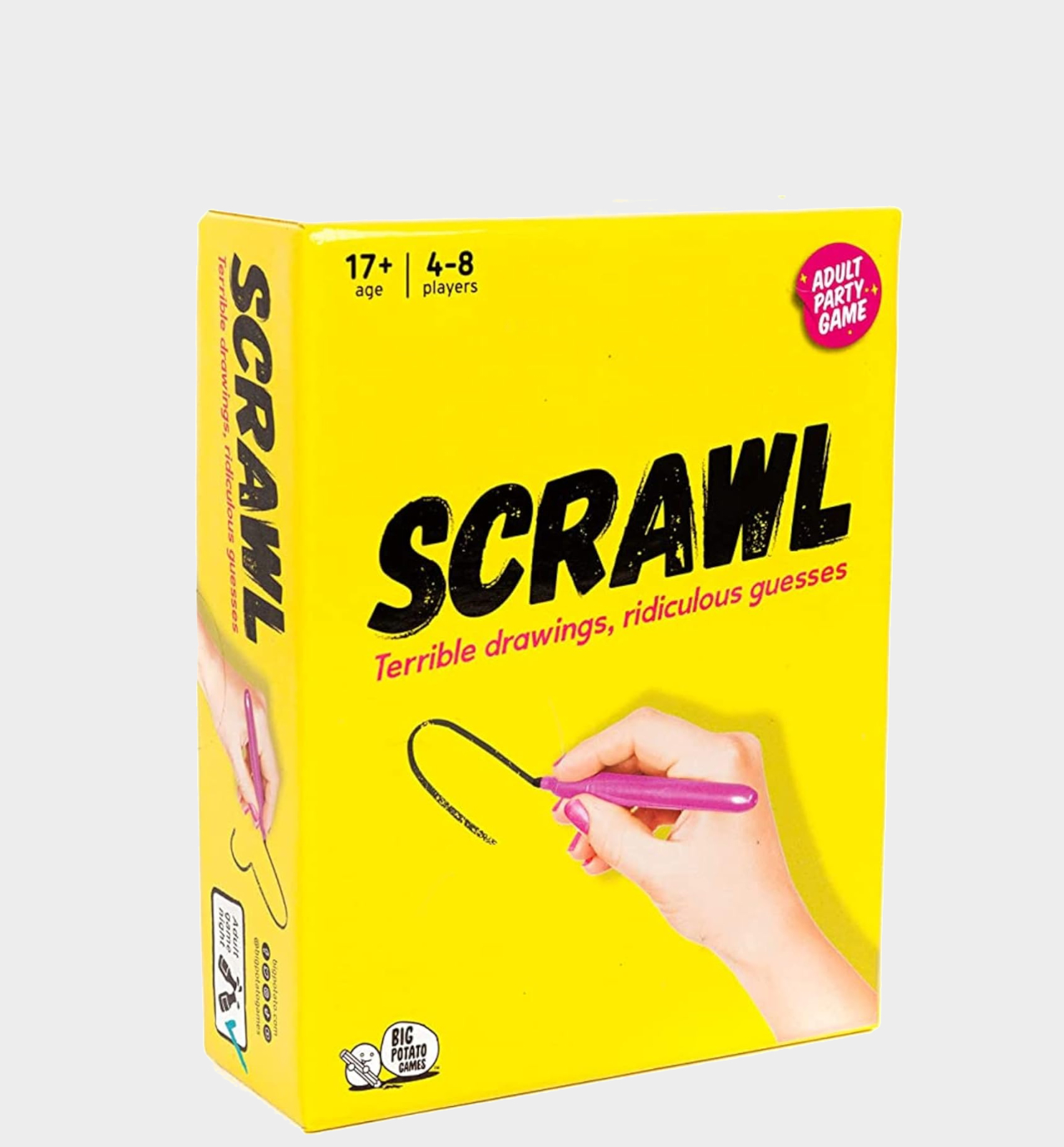
The beauty of this funny party game is how it sets you up to fail. It challenges you to draw certain things that are bound to be misinterpreted in amusing, often rude ways, so it'll go down very well with friends (something we noted in our Scrawl review).
Best party board game
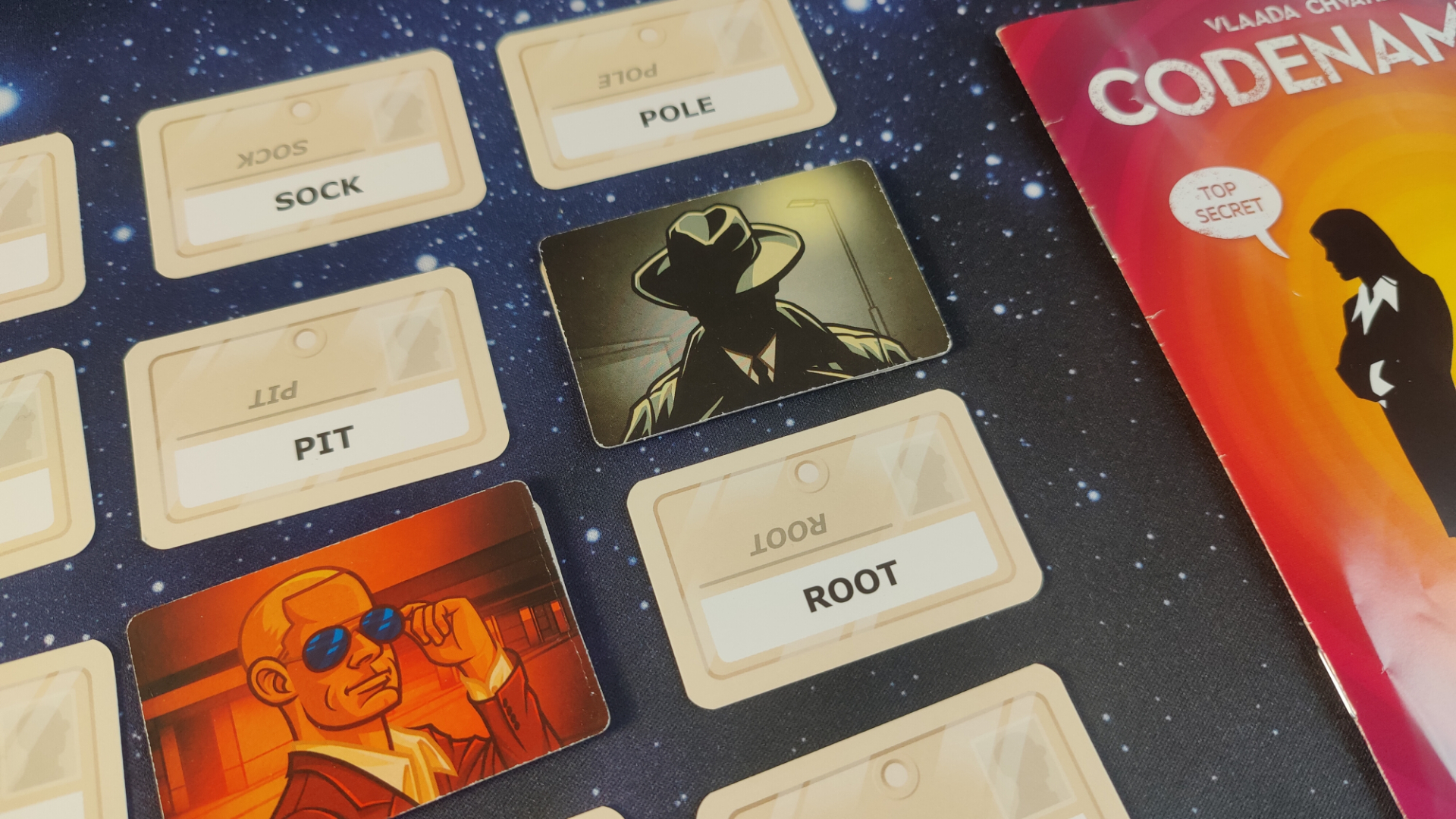
Specifications
Reasons to buy
Reasons to avoid
Finding the right party game can be tough. You've got to account for numerous tastes, it can't take too long to play, and it shouldn't use up much space at the table either (if any). It's a task worthy of Mission Impossible, and that's why I gravitate towards Codenames when my friends get together - particularly with a new edition having just hit shelves.
This spy-themed game challenges you to track down secret agents before your rivals can, and victory hinges on word associations. That means it has a really straightforward concept that anyone can pick up. What's more, Codenames gets people talking, is suitable for a larger group, and doesn't require lots of room to set up. Crucially, you may learn a thing or two about each other along the way…
✅ You're playing with a larger group: Codenames is a 'the more the merrier' kind of game, so it's perfect if you have a lot of players itching for a game.
✅ You want a great icebreaker: Picking the right card will hinge on clues from your spymaster, so it's a good way of getting into other players' heads.
❌ You aren't a fan of big-group games: Codenames is best when played with the full roster of eight, so you may want to pick something else if you prefer smaller crowds.
❌ You crack under pressure: Coming up with word associations carries a degree of pressure, especially if your teammates aren't patient.
Features & design: Your mission, if you choose to accept it, involves dividing into teams (red or blue) and laying out 25 randomly-drawn word cards into a five-by-five grid. Secret agents or innocent bystanders are hidden under these cards, but only two players – 'spymasters' for each team – know where they are. Find all your secret agents to win.
To help their team pick the right card, spymasters take it in turns to give clues. This is a single word associated with one or more cards on the board, along with a number for how many cards that word connects to. (As an example, you might say "war, two" so that your team picks 'battleship' and 'missile.') If players select the wrong card and hit an innocent bystander, the turn ends immediately. Everyone has to watch out for the lone assassin, too; if this is selected, it's game over.
Naturally, this is wrapped up in classic spy iconography. We're talking sunglasses, dapper suits, and slick hairstyles that feel as if they could belong to James Bond. Meanwhile, the word cards are modelled after those manilla envelopes that contain spicy secrets in thriller movies.
Gameplay: Even though it packs a simple concept, there's an iceberg's worth of depth under the surface here. Should spymasters play it safe by going through each card one by one, knowing that their opponents may pull ahead? Or is it better to connect multiple words as best you can, even if there's a risk players will choose the wrong card?
That's the devious brilliance of Codenames. Yes, the cards are randomly drawn. However, plenty of them can be lumped together in the same category – and you may not realize this until too late. I can't tell you the amount of times my team has gotten the right answer… before talking themselves out of it and choosing something completely tangential. It's hilarious, infuriating, and memorable in equal measure. (Tread carefully if you have overly-competitive friends, because they may not take kindly to mistakes.)
Thanks to the sheer volume of cards included in the box, and the amount of permutations you can get every match by mixing them up, this is the kind of game that doesn't get old. It'll play very differently based on who's around the table, too. In other words, you won't get tired of it any time soon.
Criteria | Notes | Score |
|---|---|---|
Game mechanics | Codenames may seem straightforward, but it's hiding depth and can be wonderfully mind-bending. | 5/5 |
Accessibility | Everyone will be able to get their head around Codenames with very little effort. | 5/5 |
Replayability | Numerous double-sided cards and everyone's unique reaction to them provides more replayability than most board games dream of. | 5/5 |
Setup and pack-down | It can take a moment to set up the 5x5 card grid, but it's not much effort on the whole. | 4/5 |
Component quality | This game may not be flashy, but it doesn't really need to be – it handles the spy aesthetic beautifully. | 4/5 |

"Codenames is the ultimate pick-up-and-play party game. No complex mechanics to trip up new players — just a word association game with some structure around it, and a competitive edge to spice things up. Don't let that simplicity fool you, though. There is a ton of depth and strategy on offer here for experienced players to sink their teeth into.The key to Codenames's success as a party game is that it's all about communication and getting on the same wavelength as your teammates. This means you come away from a game of Codenames knowing your teammates a little bit better, and isn't that the whole point of a party?" Read more: Codenames review
Load honorable mentions ↓
Honorable mentions
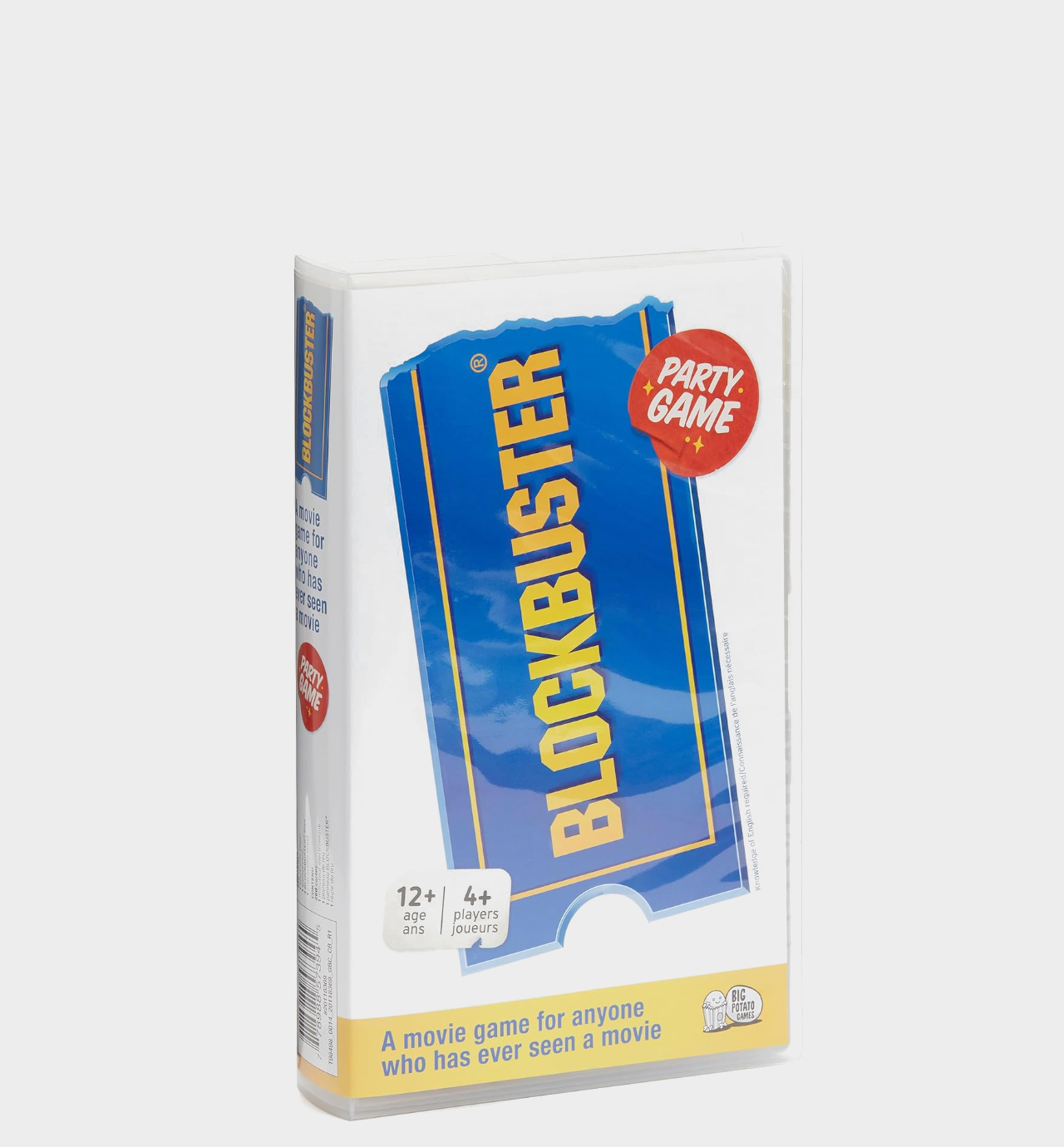
This movie-based battle of wits stands out from the crowd because everyone can get involved no matter how much they know about films – it's easy to explain and set up. Crucially, it's also a lot of fun. That's why it scored five stars in our Blockbuster review.
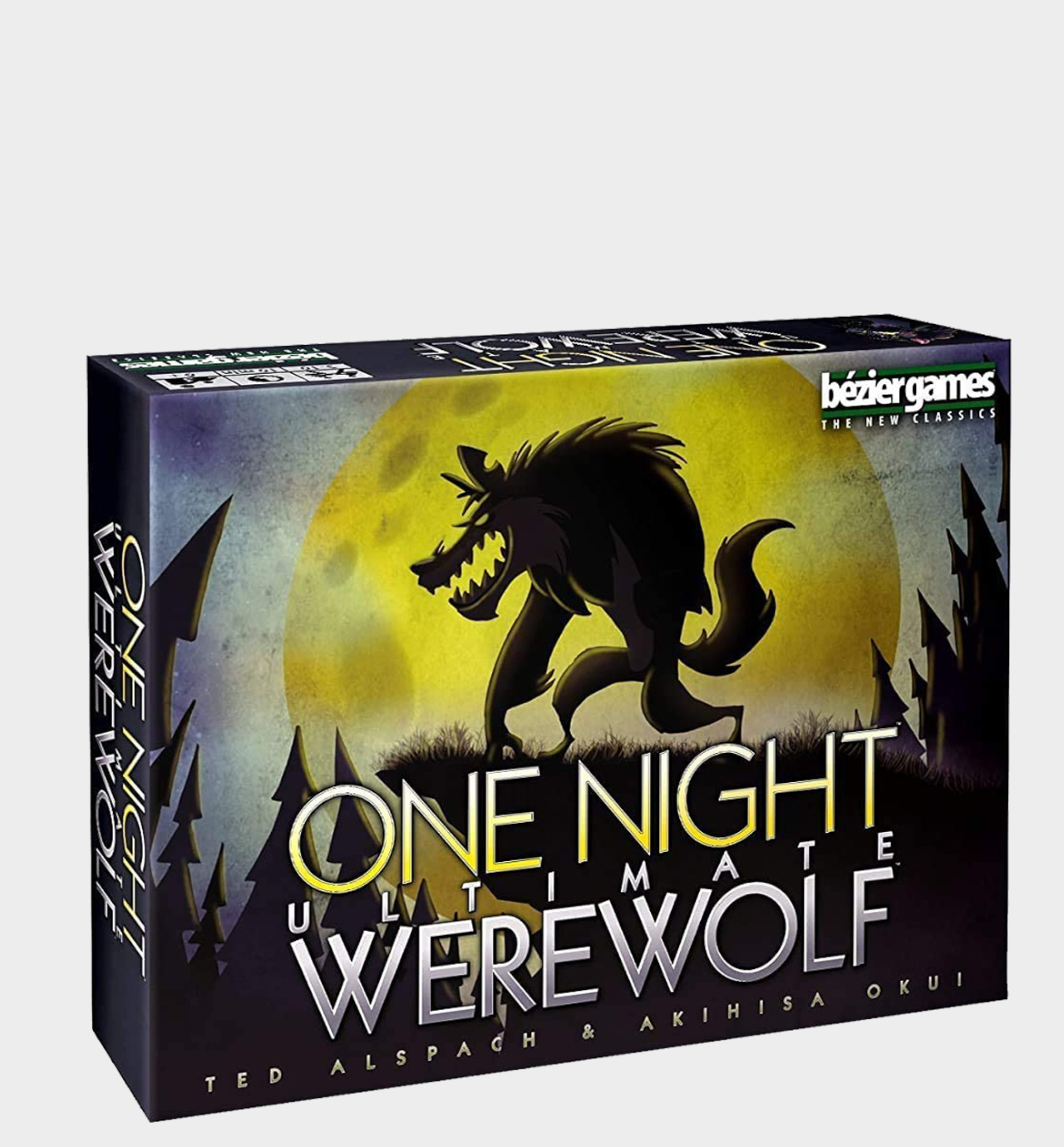
It's hard to beat the old favorites, and One Night Ultimate Werewolf just adds to the formula. This is a social deduction game that may as well be a more complicated version of wink murder, and that means anyone can get involved.

If you want to be kept on your toes, this is a challenger for the best party games. It enhances the likes of Mafia with clever additions such as unlockable abilities for the bad guys. Paranoia will run rampant.
Best board game for families
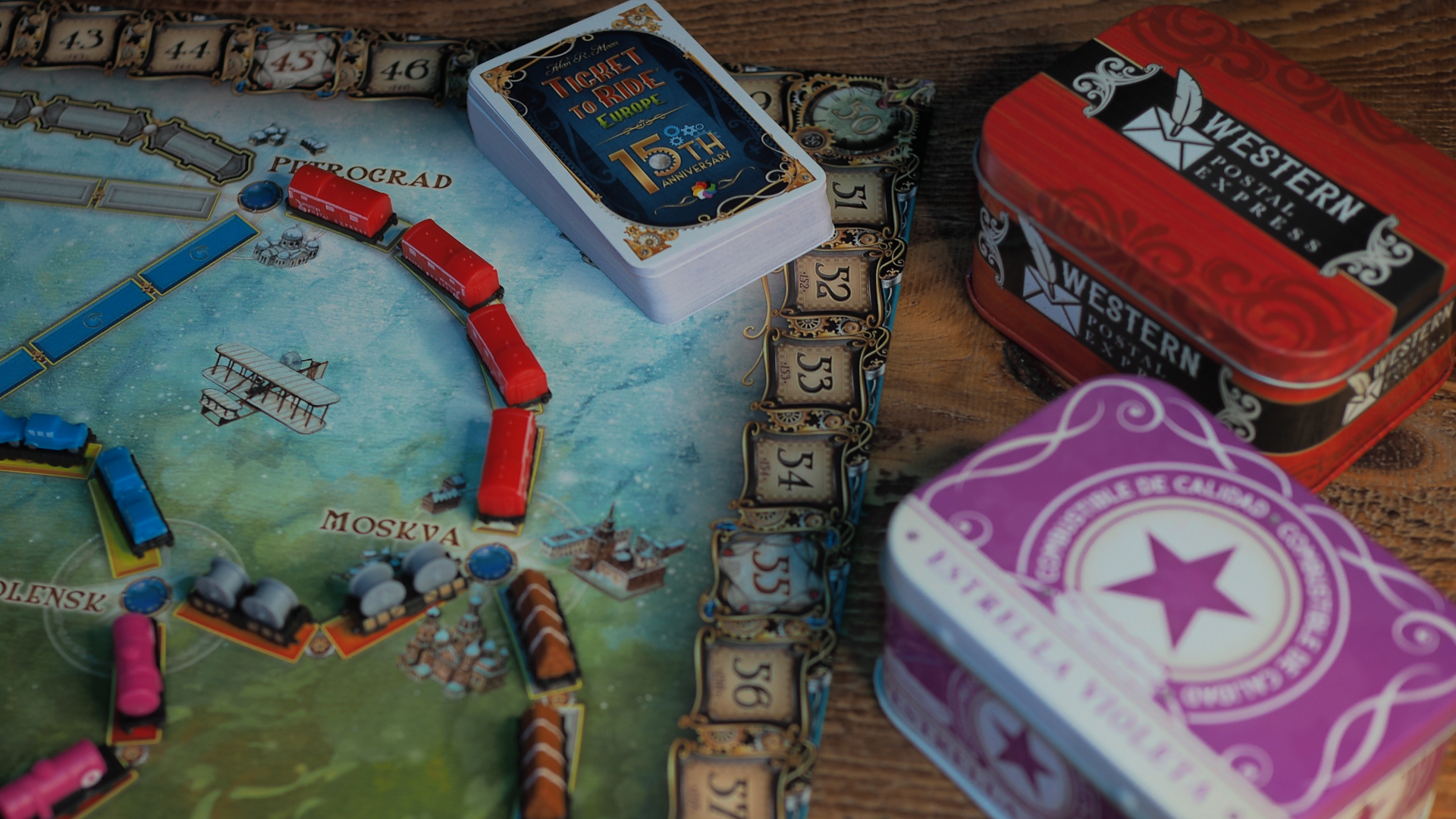
Specifications
Reasons to buy
Reasons to avoid
Ticket to Ride is one of the most laid-back entries on this list, and that makes it the perfect choice if you want the best family board games that aren't going to start a civil war around the table. Thoughtful and relaxing, it's a delight for all ages that lets players tackle the challenge at their own pace. A new 2025 version also reduces the barrier to entry even more.
It does still have tactical bite, though. More specifically, figuring out the best way from A to B whilst working around roadblocks laid by your rivals is an engaging puzzle.
✅ You want something easy but fun: Looking for a game that's accessible, but not boring? Despite being easy to understand, there's still enough strategy here to keep you interested.
✅ The people you're playing with aren't board gamers: Even if your opponents have never played anything more exotic than Monopoly, they'll still be able to get involved easily enough.
❌ You want something that'll challenge you: Even though there are tactics on display in Ticket to Ride, it's not going to stretch you. This is a fairly laid-back experience overall.
❌ You'll be playing it a lot: Ticket to Ride can get a little tired if you overdo it. It got me through lockdown during the pandemic via virtual matches with family, but eventually we learned all the routes and the game lost its shine.
Features & design: Picture the scene - it's the early 1900s, top hats are in, and trains are still of the steam variety. In this quaint landscape of frilly frocks and tail-coats, you've got to plot railway routes from one city to another. Whoever completes the most lucrative lines will win.
Sounds easy so far, right? And to an extent, it is; you couldn't call Ticket to Ride an overly competitive game. That's why it's such a good board game for families. There isn't as much opportunity for squabbling, which is something I think we can all appreciate after Christmas sessions of Monopoly gone wrong.
You shouldn't expect to coast, though. You need sets of differently-colored train cards to lay down routes, and because these are taken from either a face-up market available to everyone or drawn blind, others might work out what you need and beat you to the punch by taking those cards first. Plus, not completing routes will dock your score at the end of the game. This adds a push-your-luck element to proceedings.
With Ticket to Ride's turn-of-the-century vibe, that's fitting; it's couched in a time when the world was your oyster. There's an appealing steampunk tinge to everything as a result, and even the tokens have gone the extra mile thanks to being fully 3D carriages.
Gameplay: The railway theme may not light your world on fire, but there's an undercurrent of strategy holding everything together that allows it to hit the perfect balance of family-friendliness without losing any tactical complexity. That makes Ticket to Ride one of the best board games even if its players haven't ventured much beyond Scrabble.
It's not overly aggressive, either. Unlike so many entries on this list, there's less emphasis on screwing each other over. Although it is possible to ruin someone's day by building across their route, there's usually an alternative with which you can salvage all that time and effort. As such, Ticket to Ride is something I'm more than happy to break out if things typically get heated at family gatherings. Like our review mentions, it's "the perfect option for newcomers and tabletop veterans alike."
Criteria | Notes | Score |
|---|---|---|
Game mechanics | This is a straightforward system, but it excels in spite of – or perhaps because of – that. It's easy to grasp, but there's a lot to think about during each session. | 4/5 |
Accessibility | Ticket to Ride's simplicity makes it very easy to get into, and most will have no trouble learning its ins and outs. | 4/5 |
Replayability | While it does have some longevity, you will eventually learn the routes if you play on repeat. That robs the game of some sparkle. | 3/5 |
Setup and pack-down | In spite of a slightly more laborious pack-down (you've got to gather up dozens of train models), nothing else here is taxing. | 4/5 |
Component quality | Due to plastic train tokens, quality card stock, and a sturdy board, Ticket to Ride won't fall at the last hurdle. | 5/5 |

"A tense but incredibly rewarding experience that opens itself up to strategy and logic just as easily as it does creative thinking and social play." Read more: Ticket to Ride review
Load honorable mentions ↓
Honorable mentions
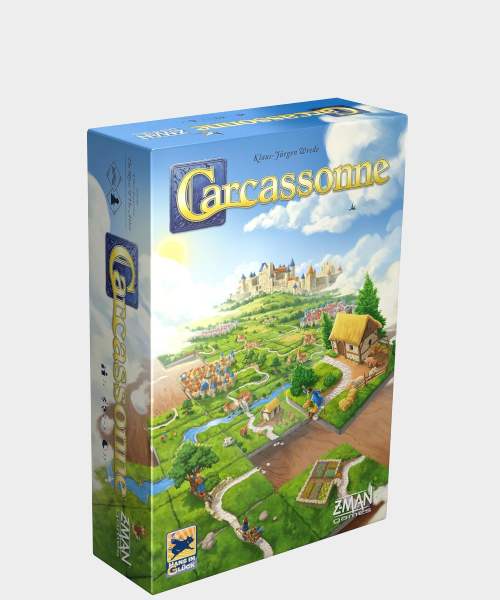
Thanks to brilliantly simple yet engrossing tile-laying mechanics that have you building a patchwork landscape for points, Carcassonne is a modern classic. As we mentioned in our Carcassonne review, it offers "heaps of replayability."
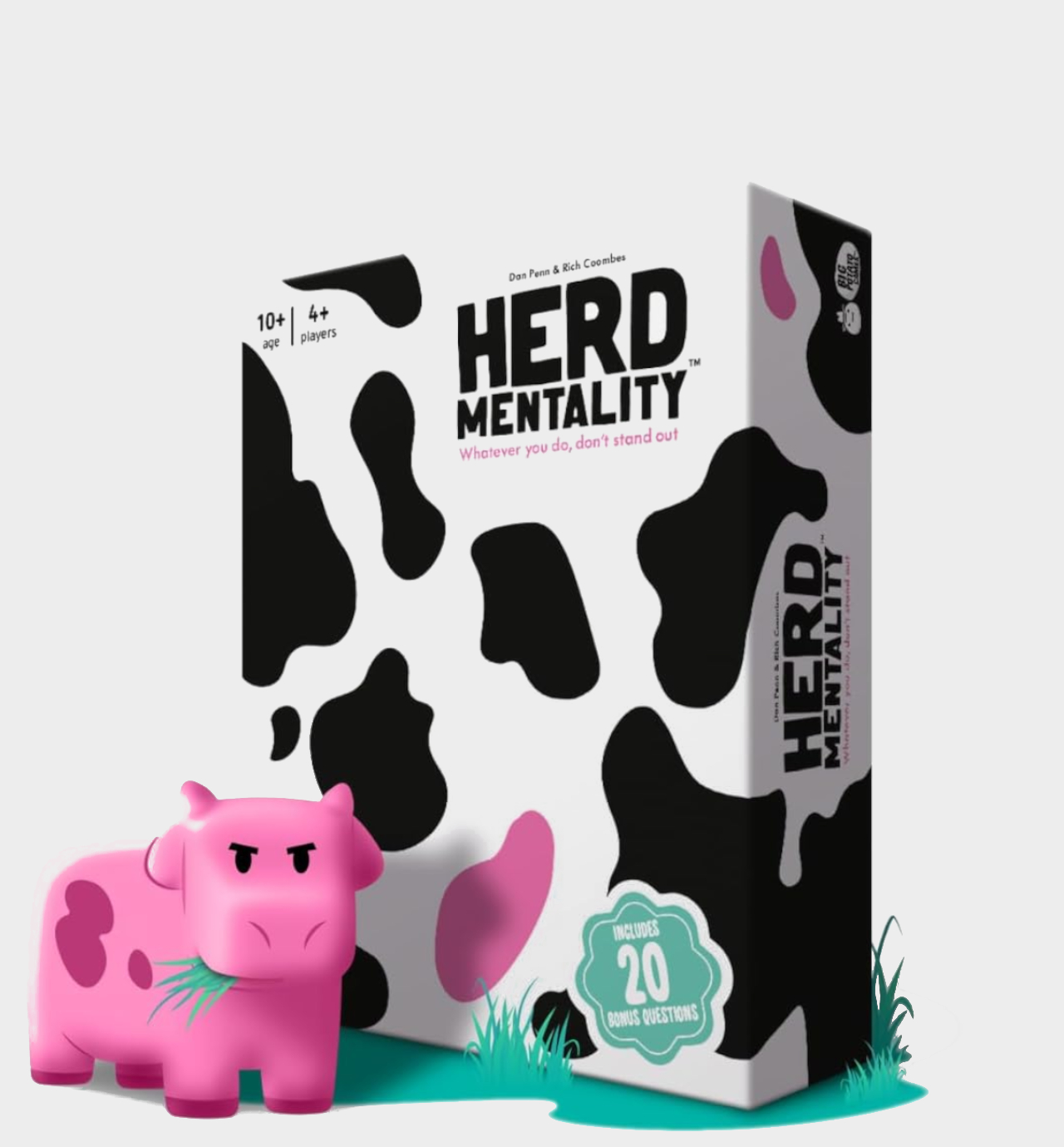
Trying to find board games without confusing rules? Herd Mentality says hello. It's easy to get the hang of and won't ever go out of date, because it hinges on what everyone else thinks. There's no 'right' answer – your aim is to be in the majority.

It looks very simple, but I'd recommend Bananagrams to any fan of word games in a heartbeat. It tasks you with creating a crossword using the randomly drawn tiles in front of you, so requires lateral thinking and quick reflexes.
Best board game for kids
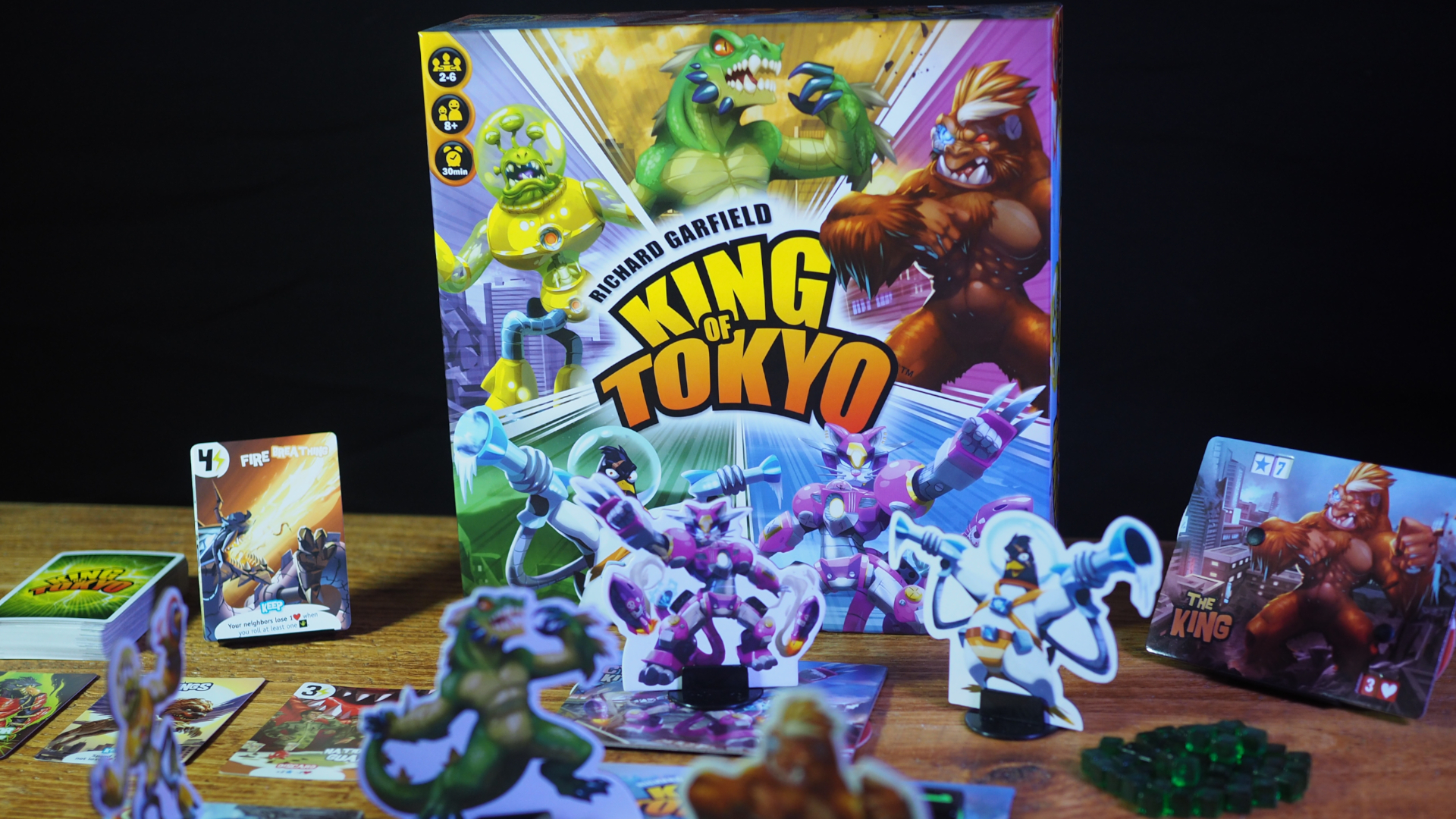
Specifications
Reasons to buy
Reasons to avoid
King of Tokyo is the ideal choice for both big and little monsters. Allowing you to command tongue-in-cheek kaiju (ranging from Space Penguins to classic Godzilla-wannabes) that are intent on squishing the city, it's all about pushing your luck. You earn points by stomping across Japan's capital, but this opens you up to attack from other players. The trick is knowing when to stick it out or when to make a hasty retreat, and this will keep everyone around the table invested.
It's a great introduction to board game strategy, in other words. When combined with the amusingly silly concept, there's plenty for children to love here – it's one of the best board games for kids by a long way. Even newer entries such as the delightful Sandcastles of Burgundy can't match it.
✅ You want something accessible but compelling: This isn't a game you'll struggle to understand, yet it won't leave you feeling bored either.
✅ You want something parents will enjoy too: Don't worry folks, you should enjoy this as much as your little ones. It's fantastic for all ages.
❌ You have young children: Although it's straightforward, the strategy and pressure involved may not agree with particularly little kids.
❌ Your children take things very personally: Hitting Tokyo puts a target on your back, and your monster will be attacked a lot. With that in mind, sensitive kids may feel picked on (even if they're not).
Features & design: As you might expect from a board game about wanton destruction, King of Tokyo isn't difficult to understand. You need to earn points by attacking the city, and players do this by placing your character on that board space when it's empty. The longer you stick around, the more points you'll get… and if you can earn 20 points overall, you'll win.
However, victory won't come easy. Anyone in Tokyo is open to attack from rivals, and they can't heal while there. Basically, you're playing a game of chicken with your monster.
Regardless of where your monster is, your actions are dictated by dice rolls. Getting the claw symbol allows you to hurt rivals, hearts let you heal, and rolling three of a particular number earns bonus points. The latter can be tricky, so you're allowed to reroll some or all of your dice up to three times per turn. To translate, King of Tokyo is great for risk-assessment.
Not that you'd know that at a glance. This is a wonderfully goofy game with endearing, cartoonish artwork.
Gameplay: Hurling dice across the table and hoping for a good result is always thrilling, and King of Tokyo builds on that by adding a sprinkling of danger. Should you hold on for as long as possible in Tokyo itself to nab extra points, even though it's as good as putting a bullseye around your neck? Or is it better to let your opponents bleed themselves dry before swooping in yourself? There isn't a 'right' answer, and that makes for a tense balancing act that keeps everyone on the edge of their seat.
There's plenty to think about as a result, but not in a way that'll bog kids down. They shouldn't find it hard getting to grips with King of Tokyo's strategy, and newcomers should be able to dive in quickly. After all, playing is a case of rolling dice and deciding which results you want to keep.
Want to delve a little deeper? Ability cards and upgrades keep things interesting for all ages, and if you're anything like me, you'll be hooked soon after.
Criteria | Notes | Score |
|---|---|---|
Game mechanics | King of Tokyo has an enviable blend of easy-to-understand mechanics that requires some thought to excel at. | 4/5 |
Accessibility | This is a straightforward game at its core so will be easy to get into. | 4/5 |
Replayability | Because its core loop is so simple, you can keep coming back to King of Tokyo again and again without any trouble. | 4/5 |
Setup and pack-down | Besides a handful of green cubes that may get lost if you're not careful, this isn't a struggle to organize. | 4/5 |
Component quality | Thanks to that cartoon look, sturdy standees, and pleasingly chunky dice, King of Tokyo is a real looker. | 5/5 |

"I fell in love with King of Tokyo years ago after it was recommended at a board game cafe, and it's been on my favorites list ever since. Those push-your-luck mechanics are darn compelling, and there's a sense of fun here you'll be hard-pressed to find anywhere else." Read more: King of Tokyo review
Load honorable mentions ↓
Honorable mentions
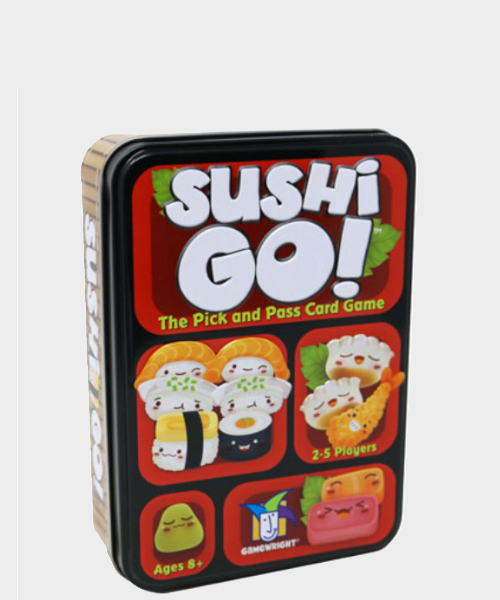
If you're shopping for children, board games that are easy to understand but very replayable are king. I've yet to find one that does it better than Sushi Go, and it's always one I recommend when asked.
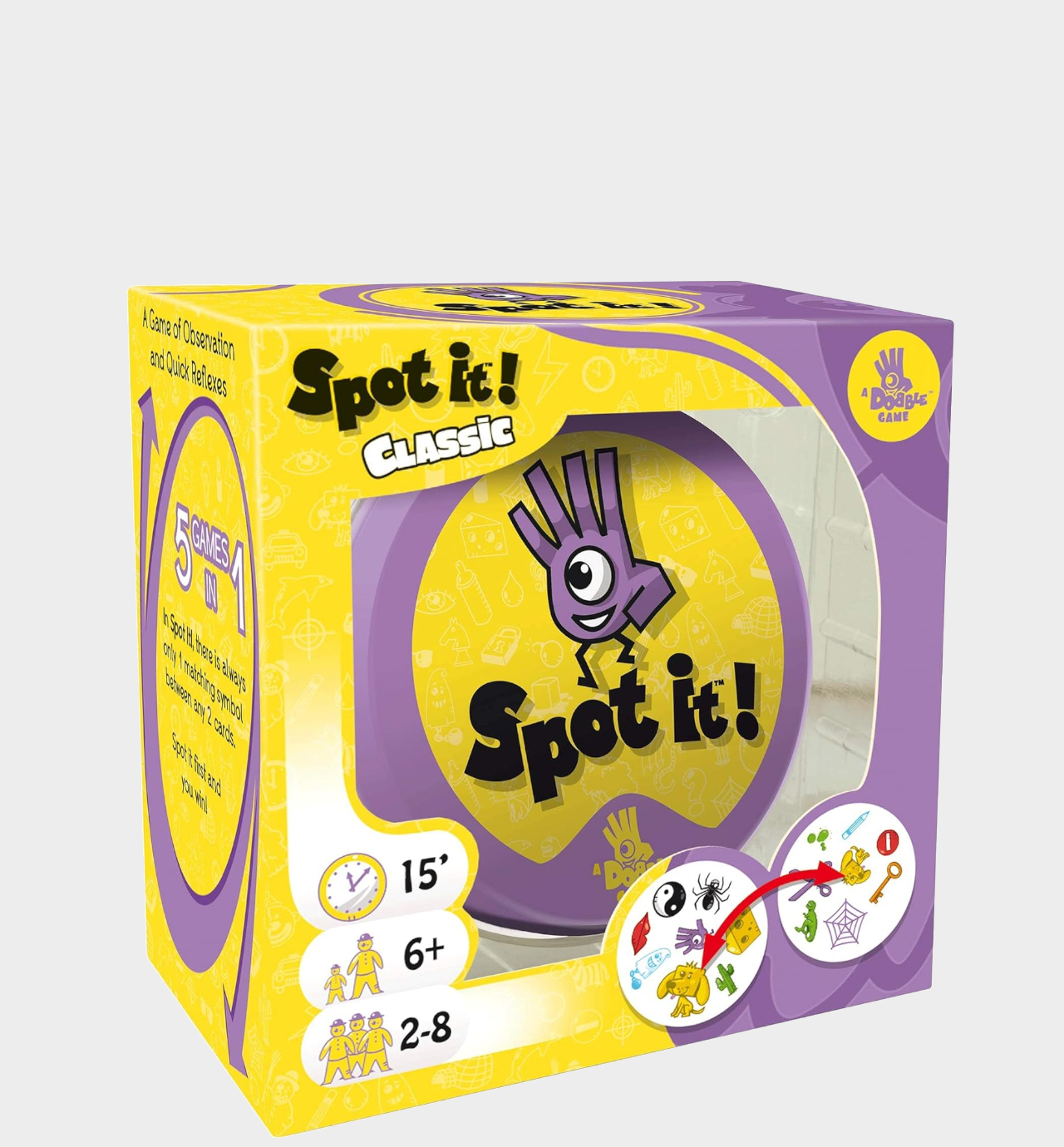
If you're looking for a quick and easy distraction at home or on the go, try Spot It (AKA Dobble in the UK). As the name would suggest, it's about seeing matches faster than anyone else, and is ideal for younger kids.
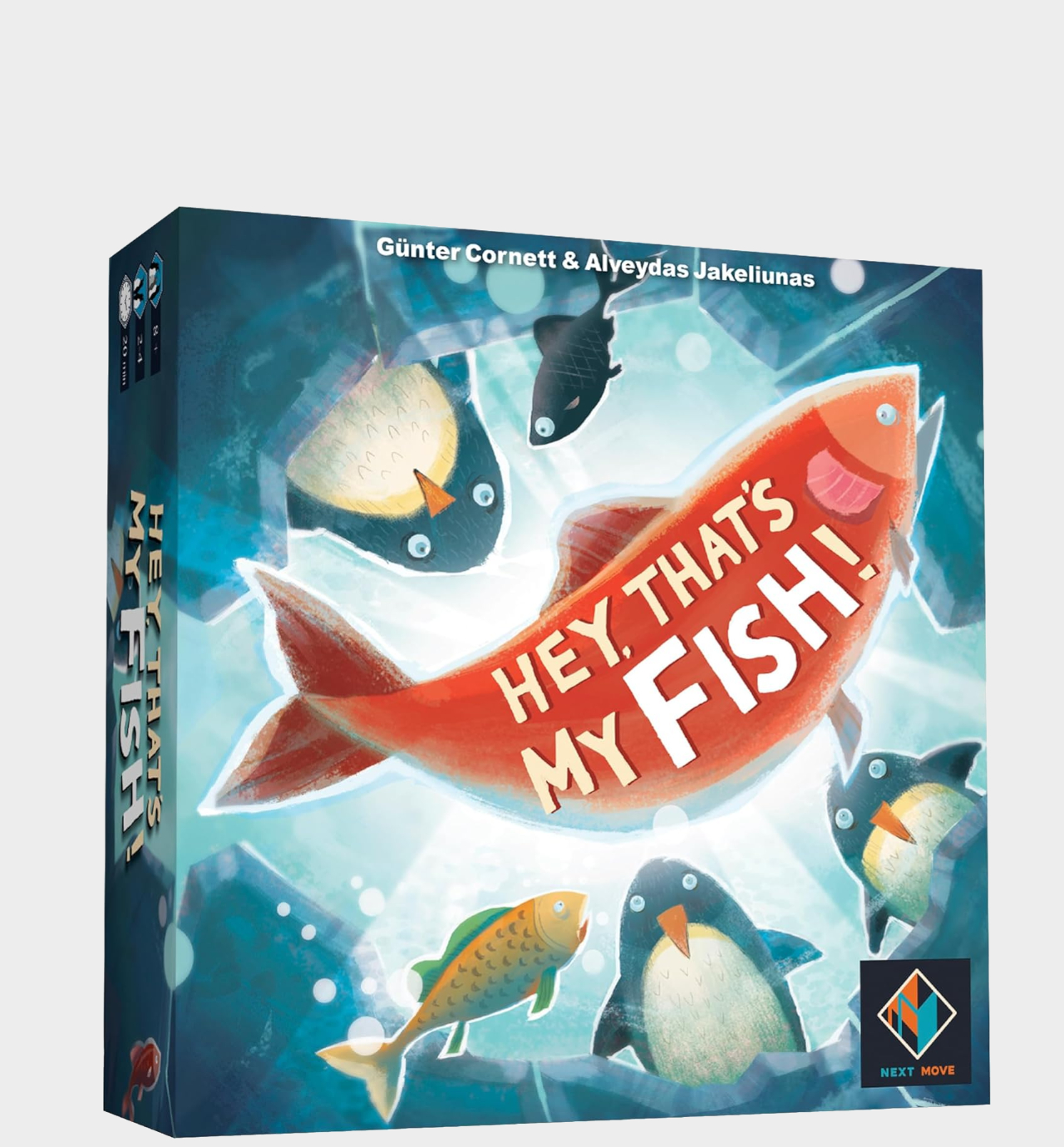
Besides a silly title that should go down well with children of all ages, this is simple to get the hang of but endlessly replayable. You've got to collect fish while cutting off your opponents, so requires problem-solving to master.
Best RPG board game
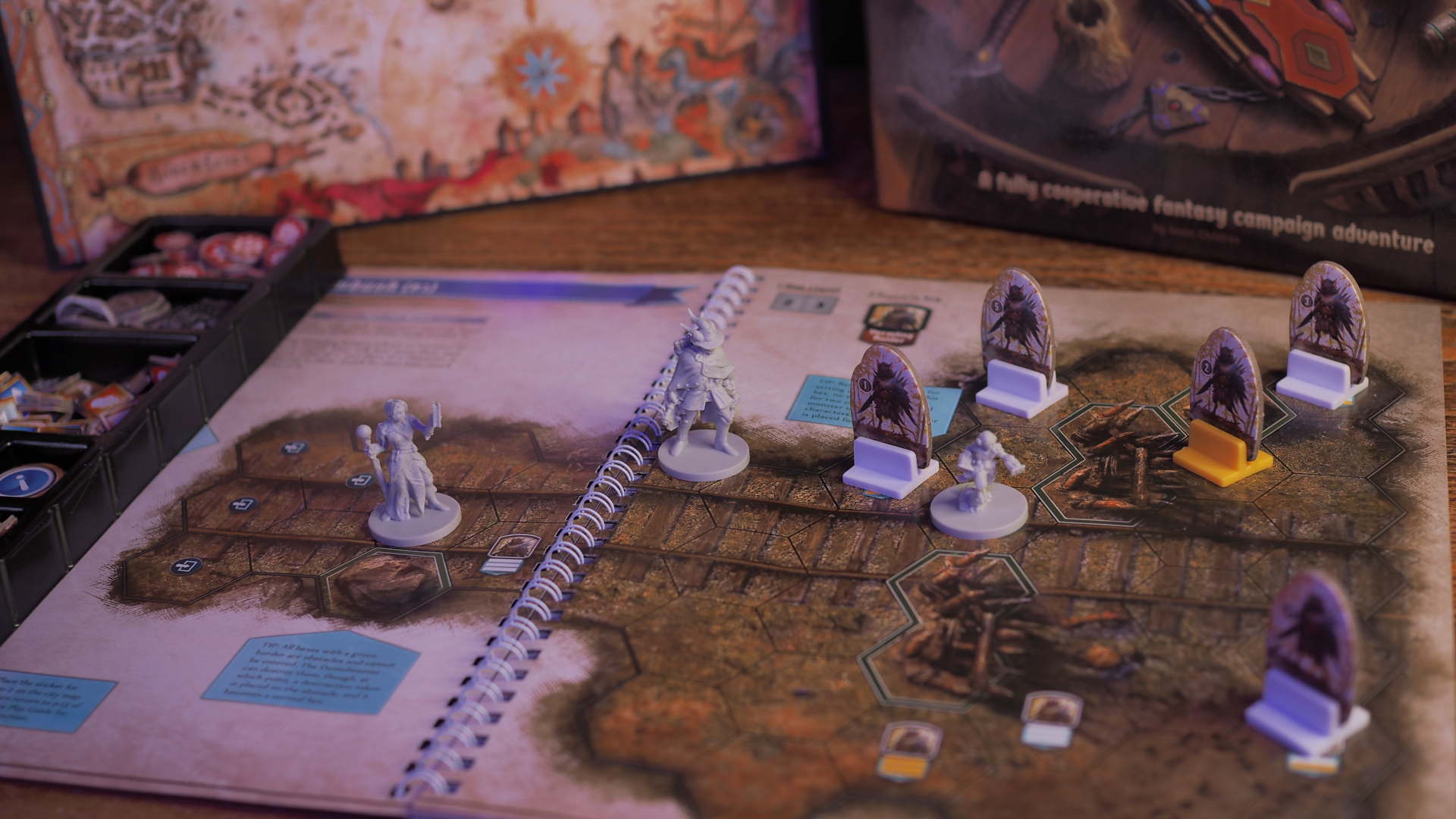
Specifications
Reasons to buy
Reasons to avoid
If you have a soft spot for fantasy and love nothing more than poring over ye-olde maps while dreaming of adventure, Gloomhaven: Jaws of the Lion should be on your radar. This dungeon-crawling epic taps into all that with branching storylines more commonly seen in the best tabletop RPGs, and it makes skilful use of 'Legacy' mechanics where the consequences of your actions carry across from one session to the next.
Seeing as it's more accessible than the original Gloomhaven (and much less expensive), this is a great place to start regardless of whether you intend to tackle other entries in the series or just want a taste of adventure. Yes, it's more complex than many other board games. But it's also a whole lot better, and the perfect on-ramp for Gloomhaven's 2025 update.
✅ You want an epic adventure game: Seeing as you'll be embarking on grand adventures and crawling through dungeons each session, Jaws of the Lion will hit the spot if you're in the mood for some swords 'n' sorcery. Plus, the fact that you level up your characters over time should scratch that RPG itch too.
✅ You want your choices to matter: Because your decisions are carried over from session to session, what you do really does matter. The world feels much more alive and infinitely more memorable than most other games on your shelf as a result.
❌ You want something simple: Despite being a lot more accessible than standard Gloomhaven (it was pitched as an easier way into the game), Jaws of the Lion is still a lot denser than most board games. Keep that in mind before hitting the checkout.
❌ You're expecting it to be as deep as standard Gloomhaven: The original Gloomhaven (not to mention its sequel, Frosthaven) defines 'sprawling fantasy epic.' Indeed, it'll take you months to finish. Even though Jaws of the Lion has plenty of depth, it's nowhere near as big. If you're expecting it to be on par with its predecessor, you'll be disappointed.
Features & design: Jaws of the Lion casts you as a mercenary looking for work in the grungy metropolis of Gloomhaven (imagine the world of The Witcher and you won't be far off). As is only right for fantasy RPGs, said 'work' involves swords and/or sorcery. These jobs lead you through a grand narrative where your choices matter, so tread carefully. Decisions can, and will, have consequences.
While that sounds intense, the game has been designed with accessibility in mind. Unlike the full Gloomhaven or its sequel, Frosthaven, this one is smaller in scale and drip-feeds everything you need to know piece by piece. That includes a novel combat system which gets rid of random dice rolls. Rather than leaving success up to luck, all of your movement or attack actions are divvied up onto cards instead. The challenge lies in deciding which ones to use - and when.
The same handsome tokens and components have made their way across from Gloomhaven, though. Actually, I'd argue that its map board (upon you which you slap stickers to represent the missions you've completed) is better-looking than its predecessor.
OK, so the models may still be clunky in comparison to rivals like Descent: Legends of the Dark and Bardsung. Yet everything else sings, especially that moody artwork for your foes.
Gameplay: Few board games can match the sense of agency in OG Gloomhaven, and it's no different for Jaws of the Lion. Along with upgrades for your character that'll provide a more personal connection with them, battles being so skill-based makes victory all the sweeter. Your clever tactics saw you through, not luck of the dice. And while there is still a steep learning curve, it's far less intimidating than its predecessors.
It's also worth persevering with. Honestly, there's nothing quite like the combat of this series. Trying to figure out the best combination of actions to use at any one time is a compelling mini-game in itself, and juggling your limited resources (you'll lose cards as you progress) makes for a challenging puzzle.
Seeing as you'll have to balance helping your allies with hunting loot that can improve your hero, there's also a sizzling unease to keep you on the edge of your seat. Can your friends be trusted in a pinch, or are they more interested in helping themselves?
Criteria | Notes | Score |
|---|---|---|
Game mechanics | The creator of Gloomhaven isn't a fan of how many roleplaying games rely on luck, so endeavoured to create a purely skill-based system. It paid off here, and those mechanics are the perfect companion to a world where choice is paramount. | 5/5 |
Accessibility | Even though it's a much better entry-point than the original Gloomhaven, this is still more complicated than other board games. | 3/5 |
Replayability | With such emphasis on 'Legacy' elements (where the consequences of your actions carry across to the next session), it's tough to revisit Jaws of the Lion unless you want to start over or have invested in non-permanent stickers. | 3/5 |
Setup and pack-down | It's nothing compared to its predecessors, but Jaws of the Lion is still a well-stocked game with a lot of pieces to put into place. Still, its campaign book removes the need for separate board tiles. | 3/5 |
Component quality | This is the ultimate fantasy game thanks to incredible artwork and highly thematic pieces that make it feel as if you've stumbled upon a forgotten treasure chest of fantasy goodies. | 5/5 |

"Jaws of the Lion takes a dungeon-crawling experience that is expansive and epic, and makes it slightly less expansive … but no less epic. This hefty chunk of fantasy co-op goodness will take you through many a session of monster battling and exploration. Narrative does take a bit of a backseat here but I’d argue that looking cool and looting treasure is a sufficient backstory for any adventurer." Read more: Gloomhaven: Jaws of the Lion review
Load honorable mentions ↓
Honorable mentions
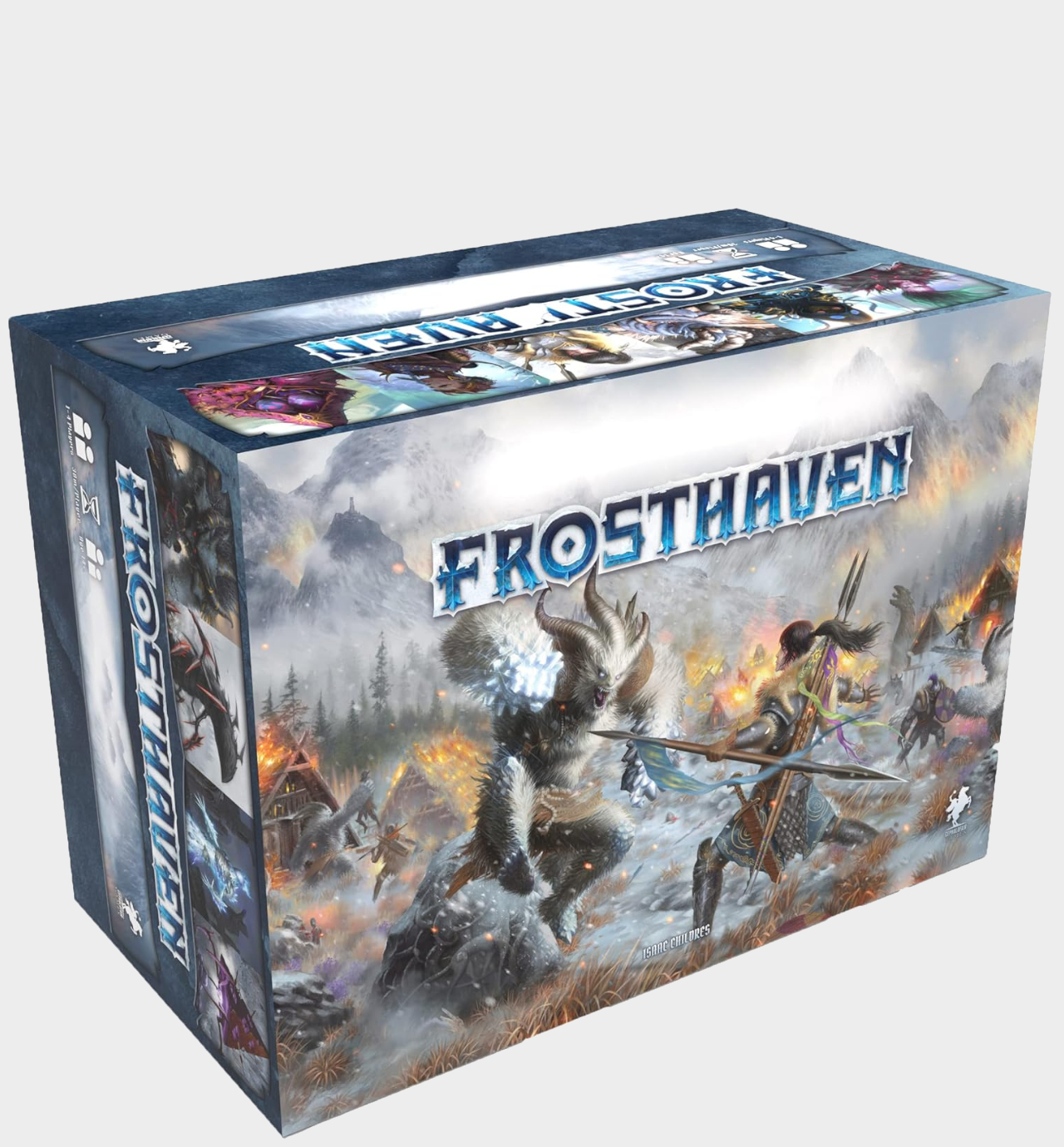
If you tried and loved Jaws of the Lion, it's time to graduate to Frosthaven. This sprawling epic takes those mechanics and builds them out into a grand adventure - one that's both slicker and smarter than Gloomhaven.
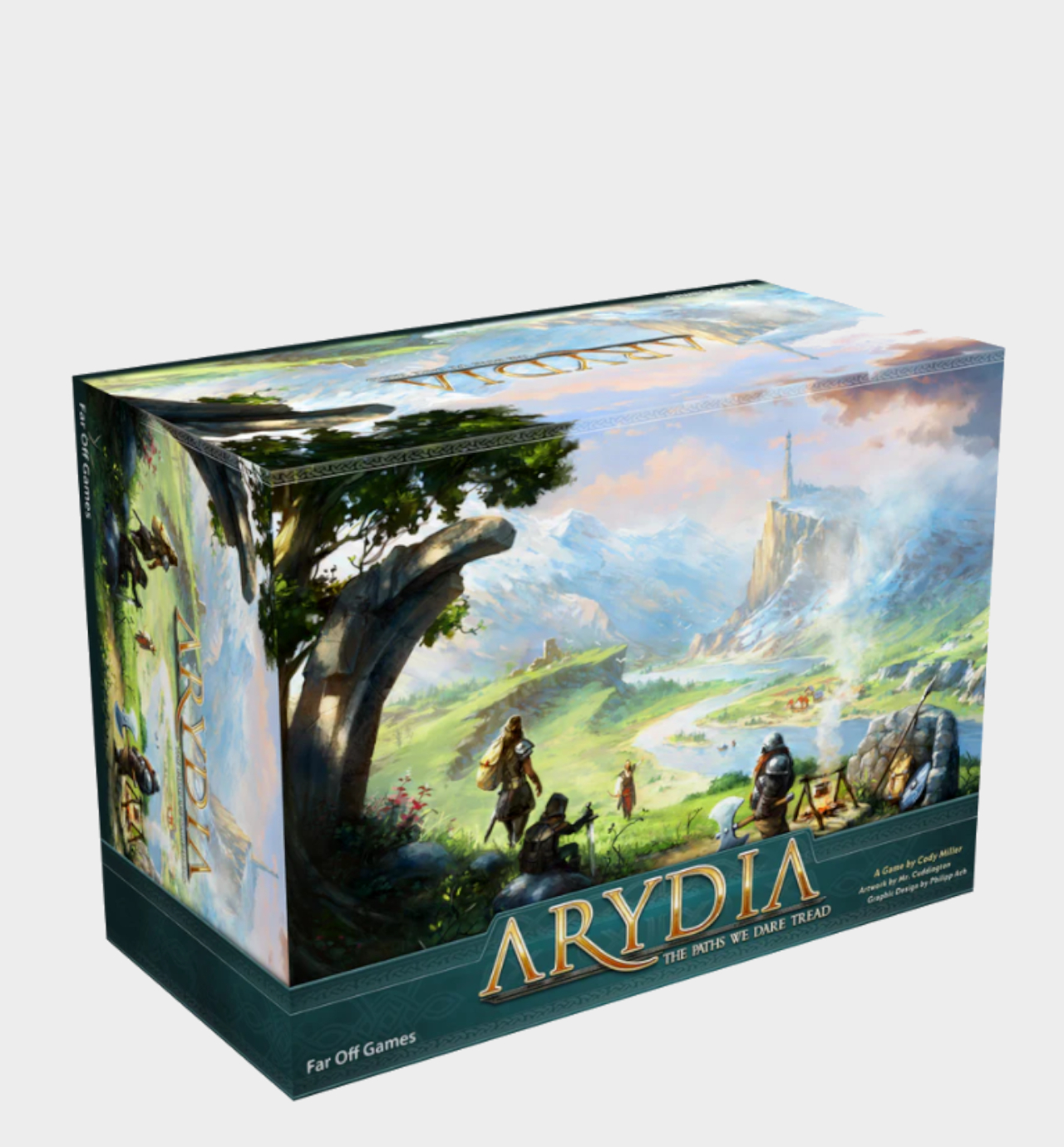
As pointed out in our Arydia: The Paths We Dare Tread review, this new RPG game "manages to give everyone something D&D can't match." That's high praise indeed, and the sense of communal energy given off here makes it feel positively vibrant.
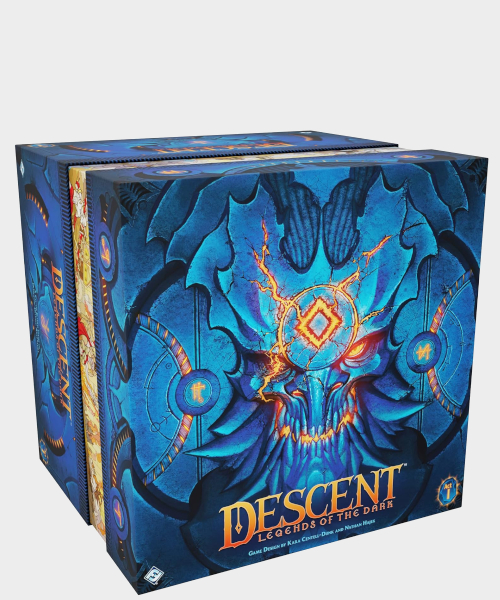
I've always got time for a fantasy adventure, but Descent truly impressed me. A clever blend of tabletop gameplay and app-based enemies bring the experience to life in a way few of its rivals can. It's the perfect blend of video games and tabletop adventure.
Best strategy board game
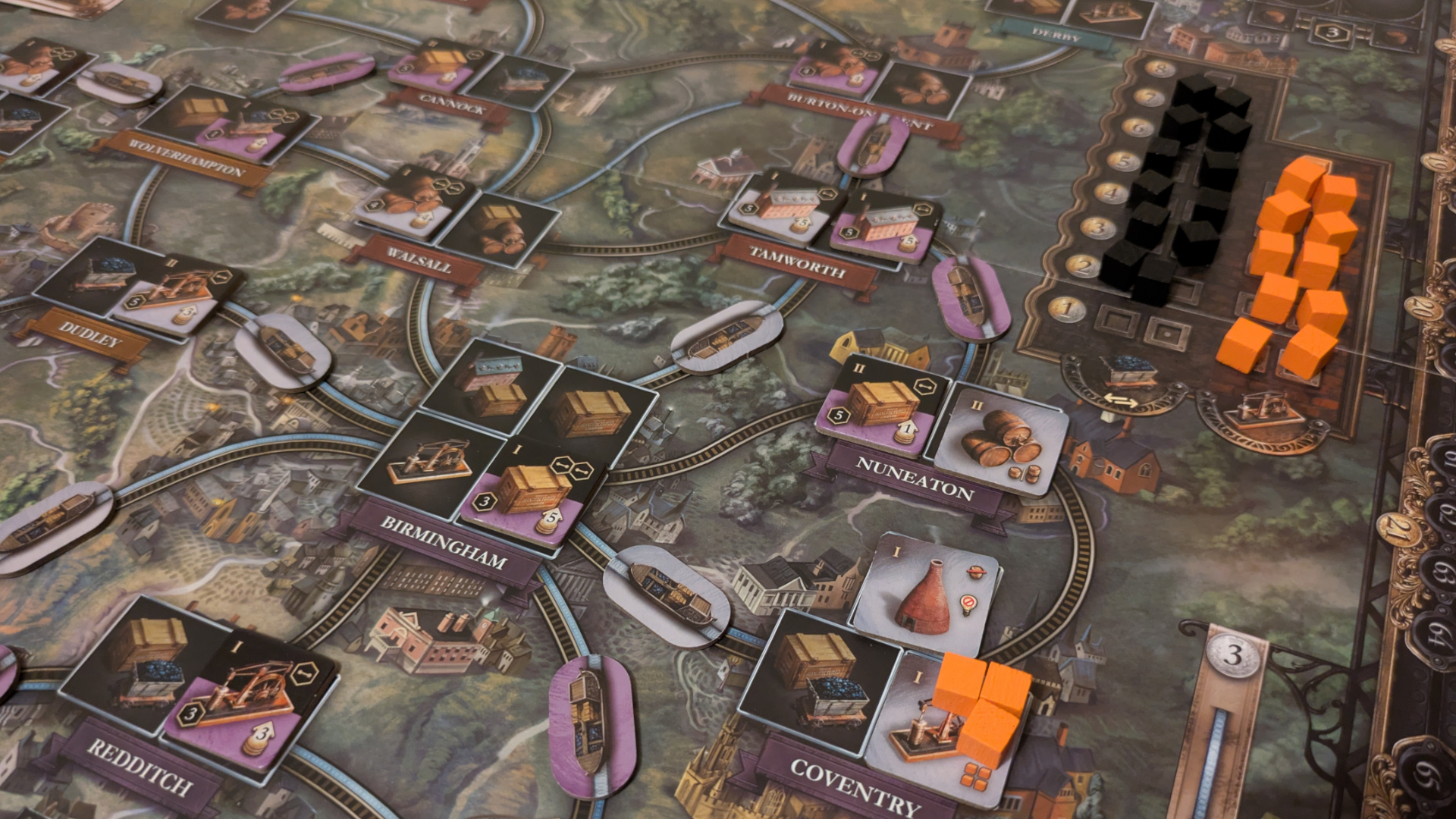
Specifications
Reasons to buy
Reasons to avoid
There aren't many strategy games with a better reputation than Brass: Birmingham. It's widely considered to be one of the best board games ever made on community forums, and reviews typically glow with praise. After getting to grips with it, you're likely to agree. There's an incredibly clever push and pull between players here; it's a case of keeping your friends close, but your enemies closer.
Although it takes a hot minute to get your head around (this is definitely a heavy-weight game), the effort is more than worthwhile. It's an easy recommendation for anyone wanting a tactical board game.
✅ You want a satisfying strategy game with layers: As with all the best strategy board games, there are many different paths to victory here. The world is your oyster.
✅ You want a social game: While many strategy games feel like multiplayer solitaire, Brass involves everyone in the fun whether they want it or not. You need your rivals to get ahead, but must balance not giving them too much of an advantage.
❌ You want a lighter strategy game: This is an unapologetically dense, multi-layered, and complex strategy game. If you're not up for that, flee for the hills.
❌ You can't commit to multiple playthroughs: Because Brass takes a little while to get your head around, it's probably not for you if you only intend to play it once in a blue moon.
Features & design: Set in the smog and soot of industrial revolution Britain, this game is all about forging a business empire. Your goal is simple; earn the most points by trading in everything from cotton to coal, capitalizing on a blossoming market. To do so, you'll have to build factories or mines, navigate supply and demand, create transport links to shuttle all this around, and work with rivals toward common goals.
Accordingly, Brass: Birmingham is a grungy-looking game. You can practically smell the smoke pumping out of Victorian factories on the board, and it's all very evocative. It doesn't feel scruffy despite that lived-in aesthetic, though – the artwork is atmospheric and there's a wealth of chunky cardboard tokens to make use of in your exploits. It comes across as very premium indeed.
Gameplay: The brilliance of Brass lies in how much you need your rivals to advance your own plans. There's a delicious, circular structure of dependencies at the heart of this game; you must outperform your foes to earn points that could win you the match, but will paradoxically need to utilize their resources in order to get what you want. Doing so may benefit you, but at the same time, it'll also give the other players an advantage.
Here's an example. You need to flip industries to gain points from them, and for the likes of an ironworks, that means using up the resource cubes that are placed on it when it's first built. You'll need those resources if you want to build other things, and can take them from another player's properties when necessary… but this means they're one step closer to scoring. Because it's practically impossible to access everything you need yourself, you'll inevitably have to rely on your opponents even if you don't want to (and vice versa). This adds ample tension and plenty to think about.
While all this isn't going to suit everyone, there's no denying that Brass: Birmingham is very, very clever.
Criteria | Notes | Score |
|---|---|---|
Game mechanics | This is a masterful combination of challenge, independent strategy, and player interaction. | 5/5 |
Accessibility | This is an unapologetically heavy strategy game, so learning it takes some work. | 2/5 |
Replayability | Although you might get tired of it eventually, it won't be for a long, long time. | 4/5 |
Setup and pack-down | There's going to be a lot of tokens, cards, and bits strewn across the board, so it's more of a handful than some other games. | 3/5 |
Component quality | This is a very good-looking game, though the cards and tiles may wear out quicker than I'd like. | 4/5 |

"Between this mutual yet competitive interdependence, the limitations of your hand, and the impossibly circular demands of building, Brass offers a unique strategic challenge." Read more: Brass: Birmingham review
Load honorable mentions ↓
Honorable mentions
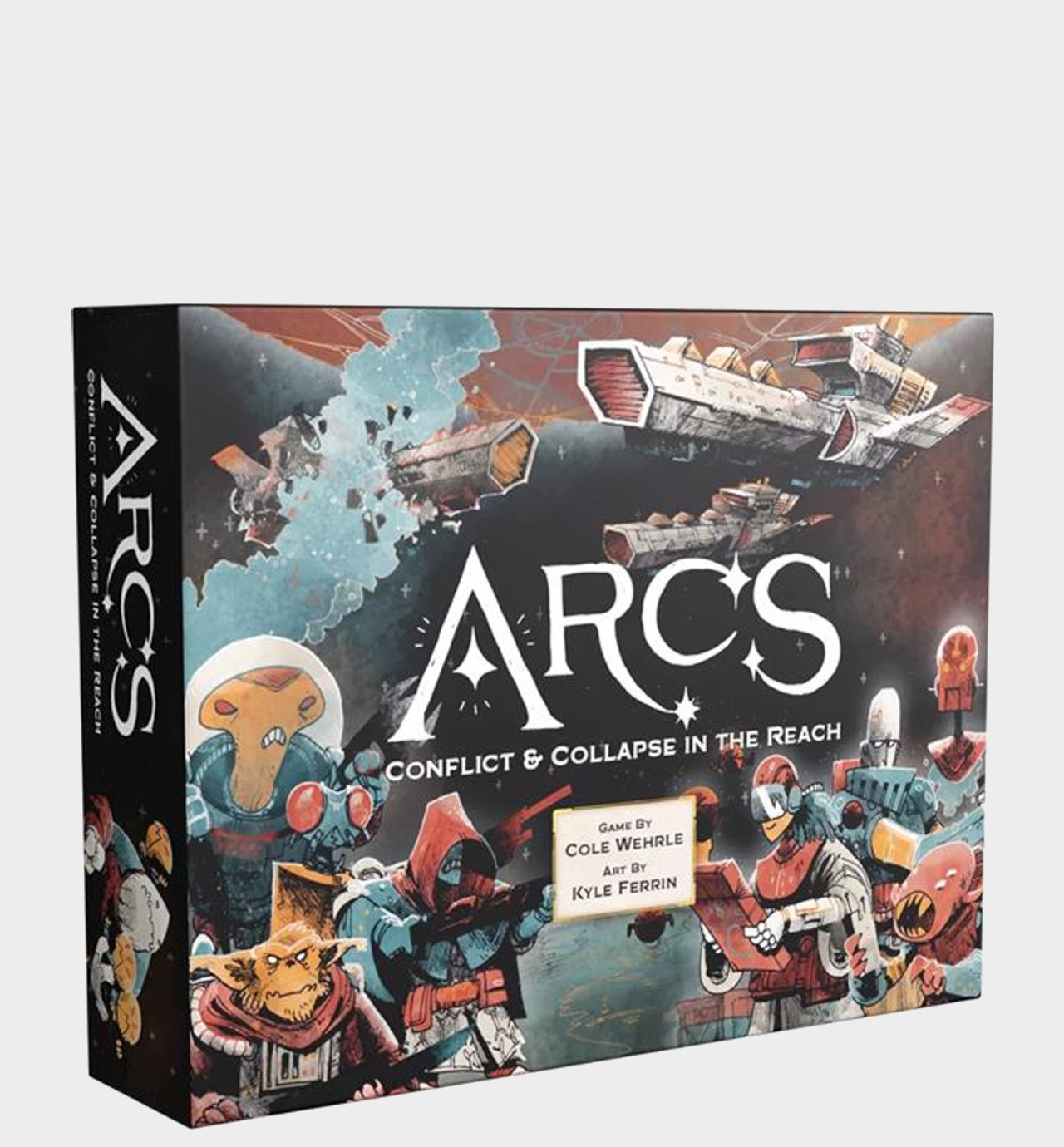
This wildly imaginative strategy game comes from the creators of Root, which tells you almost everything you need to know. The more you play, the more you'll discover; this is a vast tabletop world with dizzying possibilities. See our Arcs review for more.
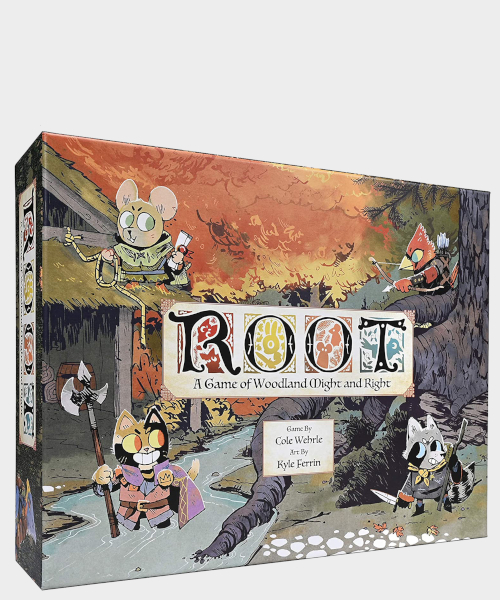
Don't be fooled by that cutesy art style; this is as hardcore a strategy game as you can get. Because each woodland faction boasts unique skills and objectives, there's a lot to sink your teeth into. It's very replayable as a result, as noted in our Root review.
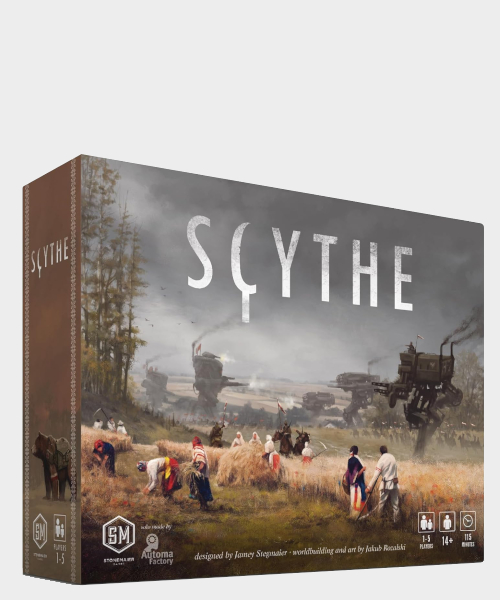
Born out of gorgeous artwork depicting an alternate history with added mechs, Scythe is an engine-building game where you have to lead your nation to power in the 1920s. It doesn't rely on luck, though; gameplay revolves around skill.
Best horror board game
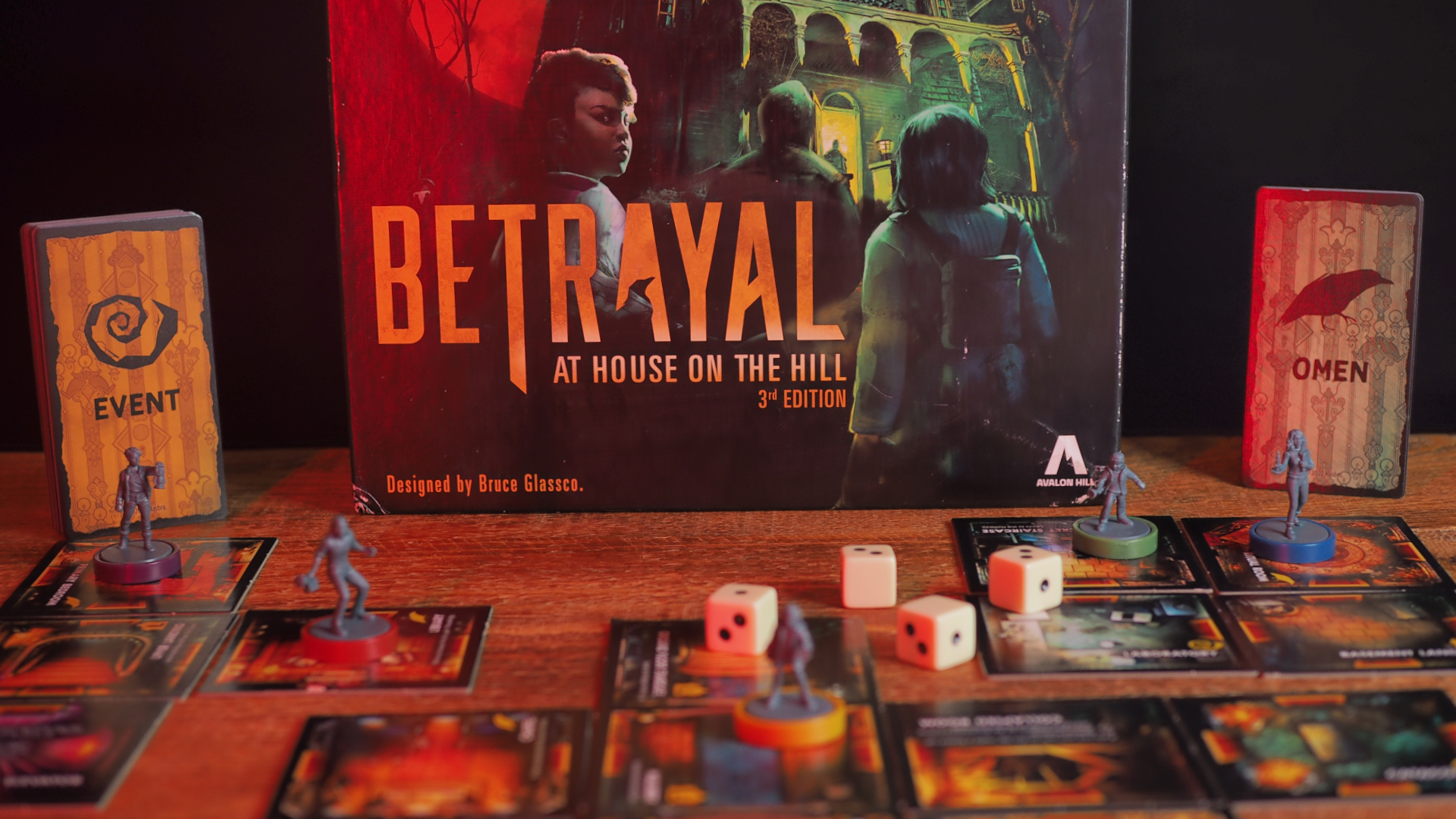
Specifications
Reasons to buy
Reasons to avoid
Ever wonder how long you'd last in a horror movie? Betrayal at House on the Hill lets you find out. Setting players loose in a haunted mansion that's quite literally out to get them, it's drenched with tension. It's also unpredictable enough that you're never sure what's going to happen next.
Sure, not all of the scenarios are created equal. But if you're hunting down something more mature in terms of both narrative and gameplay, I'd say that this takes the cake. There are scarier horror games as well, but this will be the best board game for most people due to its blend of accessibility with tactical gameplay and narrative. You can even expand on that experience with a 2025 expansion themed around IT and Pennywise the Clown.
✅ You want a deeper, more immersive experience: Even though it's accessible, Betrayal has more meat on the bone in terms of strategy than rivals. It's a decent step up from classic family games in terms of narrative, too.
✅ You love adventure games: If you're a fan of games that emphasize exploration, it doesn't get much better than this. Discovering new rooms is a cornerstone of Betrayal, and the plot is inseparable from its mechanics. Because there are 50 scenarios on offer, you can also play for months without seeing everything.
❌ You want something easygoing: Looking for a simple party game that'll only last 20 minutes or so? This ain't it, chief. Despite being accessible on the whole, it's still far more complex than classics such as Clue.
❌ You don't like random elements: This game relies on randomly-drawn board tiles and cards that'll dictate what happens next. If this kind of unpredictability doesn't appeal, Betrayal probably isn't for you.
Features & design: Your aim here is simple – make it out of the mansion alive. That isn't to say it's predictable, though. Betrayal isn't set up like traditional board games, which is part of its appeal. Your character has been drawn to the house for mysterious reasons (they're following a friend who's gone missing or have received a strange invitation, for example), and each room is selected at random when you enter it. The items or events encountered within are randomized as well. In short, there's no way of telling what lurks behind those doors.
The only thing you do know is that one of the game's scenarios will eventually begin, dictated by the rooms and items you've drawn. This mission turns your allies – or the mansion itself – against you. Seeing as both sides are given secret objectives to follow, the result is an anxious yet exhilarating race against time.
Still, this isn't a grim and gritty misery-fest. The latest edition is surprisingly vibrant, and its sense of humor lightens the mood considerably.
Gameplay: This game's deadly twist on guess-who keeps you coming back for more. Which player is going to be unmasked as a traitor? And what will their mission be? With several-dozen imaginative scenarios under its belt, the novelty won't wear off anytime soon. Actually, I've still not seen everything these dusty halls have to offer despite playing the game for years. That puts Betrayal one step ahead of more formulaic (though still excellent) rivals like Mansions of Madness, and it ensures you'll have a blast even if you've already played an older version of the game. (To see how previous instalments stack up against the current one, check out our guide to Betrayal at House on the Hill 3rd edition vs 2nd edition.)
Yes, there's a learning curve. Its scenarios aren't always the most well-balanced either. But for the most part, you'll have enough fun that those niggles won't matter. This is perfect for game night with your grown-up friends, and it's one you can keep coming back to time and time again.
Criteria | Notes | Score |
|---|---|---|
Game mechanics | The surprise traitor twist puts Betrayal head and shoulders above its competition, as does its randomly-generated board. | 4/5 |
Accessibility | Because you're discovering the house as you explore, players will be eased in gently to this horror game. Some scenarios could be better-explained, though. | 3.5/5 |
Replayability | Thanks to 50 unique scenarios and a house that's different every time you play, Betrayal will deliver for months to come. | 4.5/5 |
Setup and pack-down | Seeing as you place tiles as you go, setup for this game is incredibly straightforward. Packing it away is more of a headache, but not to any great degree. | 4/5 |
Component quality | Vivid artwork, a distinct style working across each component, and excellent miniatures make this one to beat in terms of quality. | 5/5 |

"If you're in the mood for a game you can truly sink your teeth into, Betrayal leads the pack. A randomized board and 50 unique scenarios (all with their own strategy) should keep you on edge for months, and it occupies a Goldilocks zone of gaming even if it isn't always the most balanced. Regardless of whether you're trying to find must-have horror or Halloween board games, this is a house you'll want to visit." Read more: Betrayal at House on the Hill review
Load honorable mentions ↓
Honorable mentions
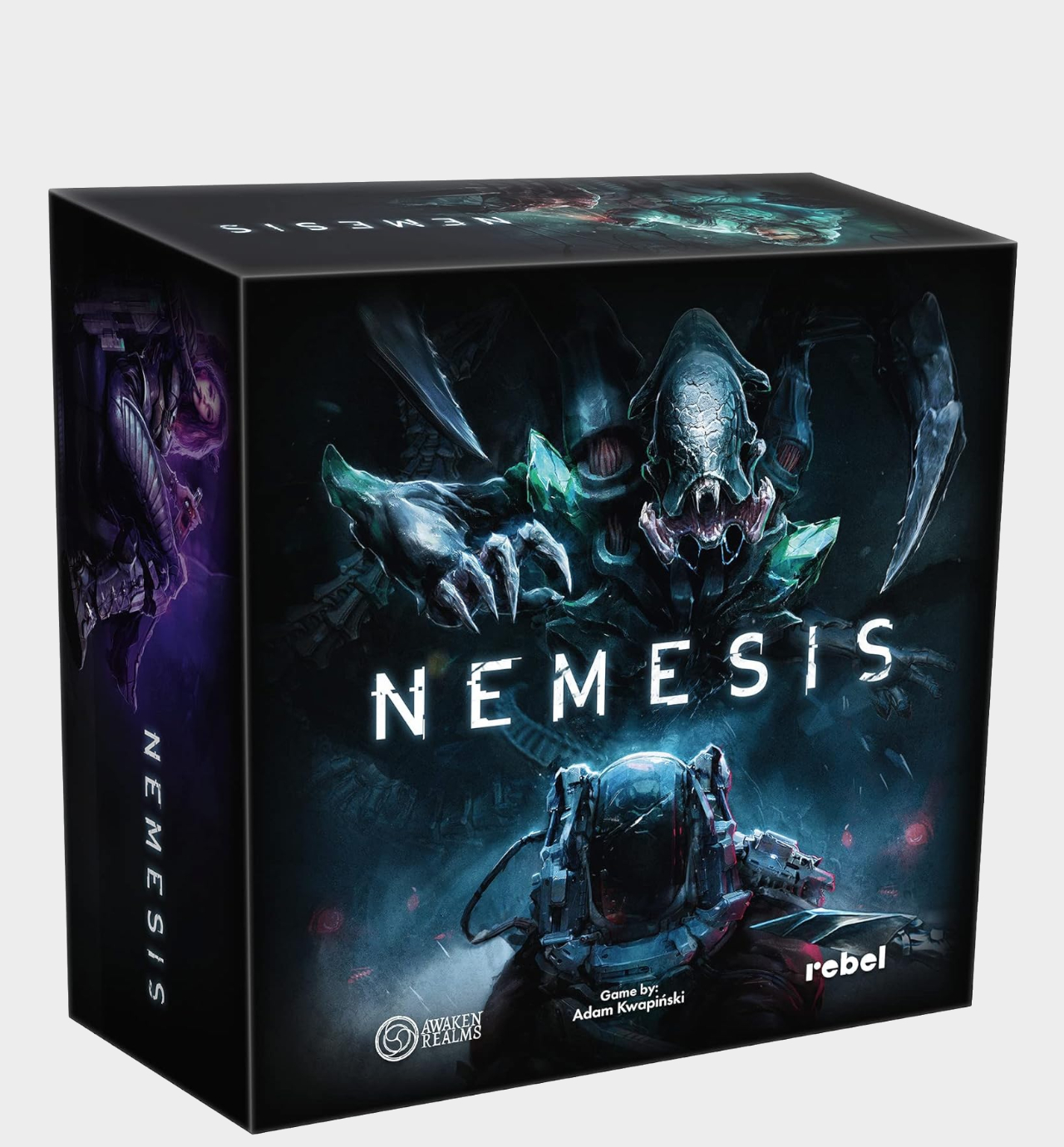
Despite being a 'semi' cooperative game, Nemesis understands the assignment - it nails the sense of paranoid tension that made the original Alien movie such a masterpiece. Our Nemesis review has no end of praise for it.
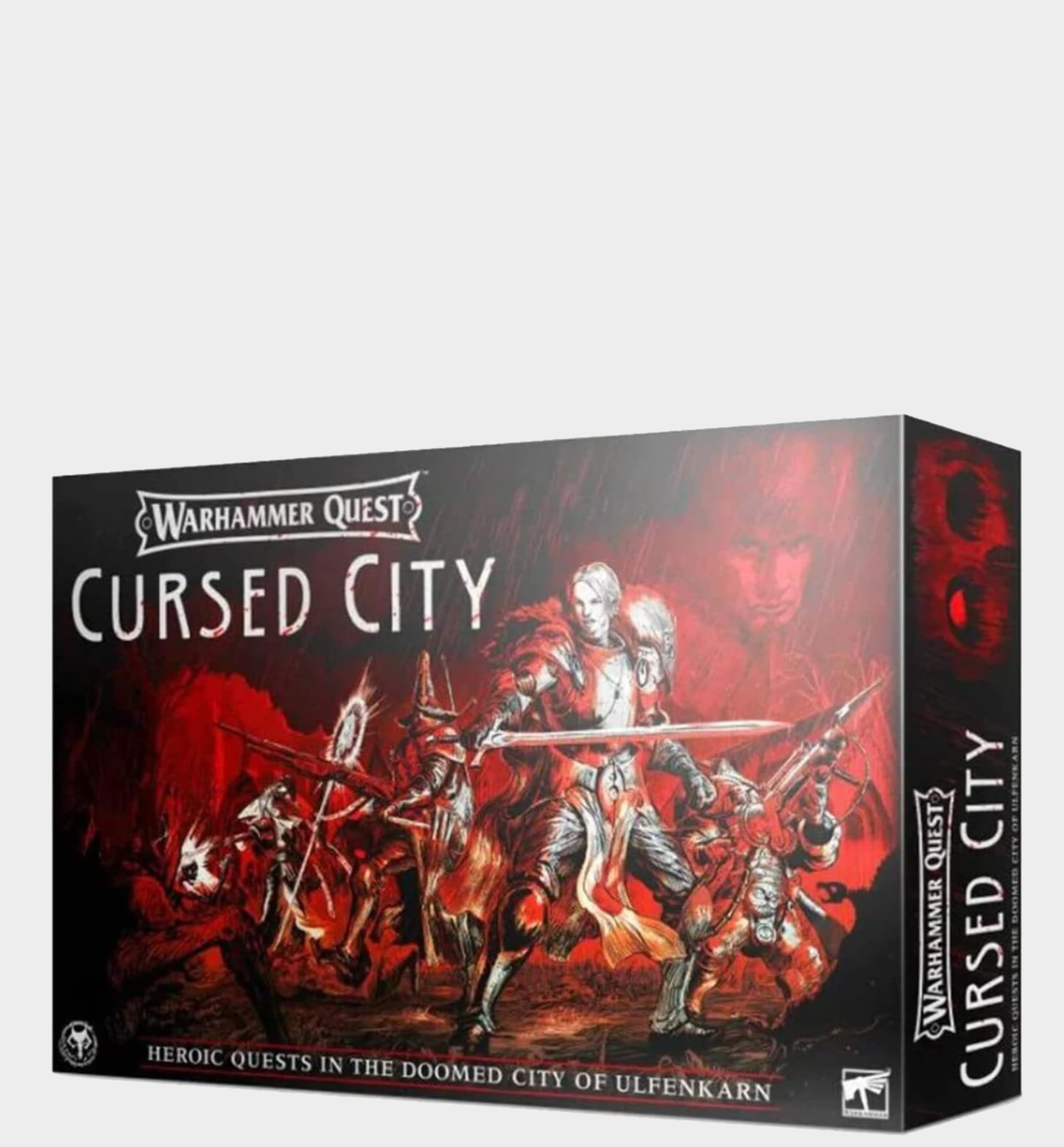
This Warhammer game asks you to save a city haunted by vampires, skeletons, zombies, and more, and it's a total vibe. Seriously, it may as well be Bloodborne: The Board Game, which will be enough to sell fans on the concept.
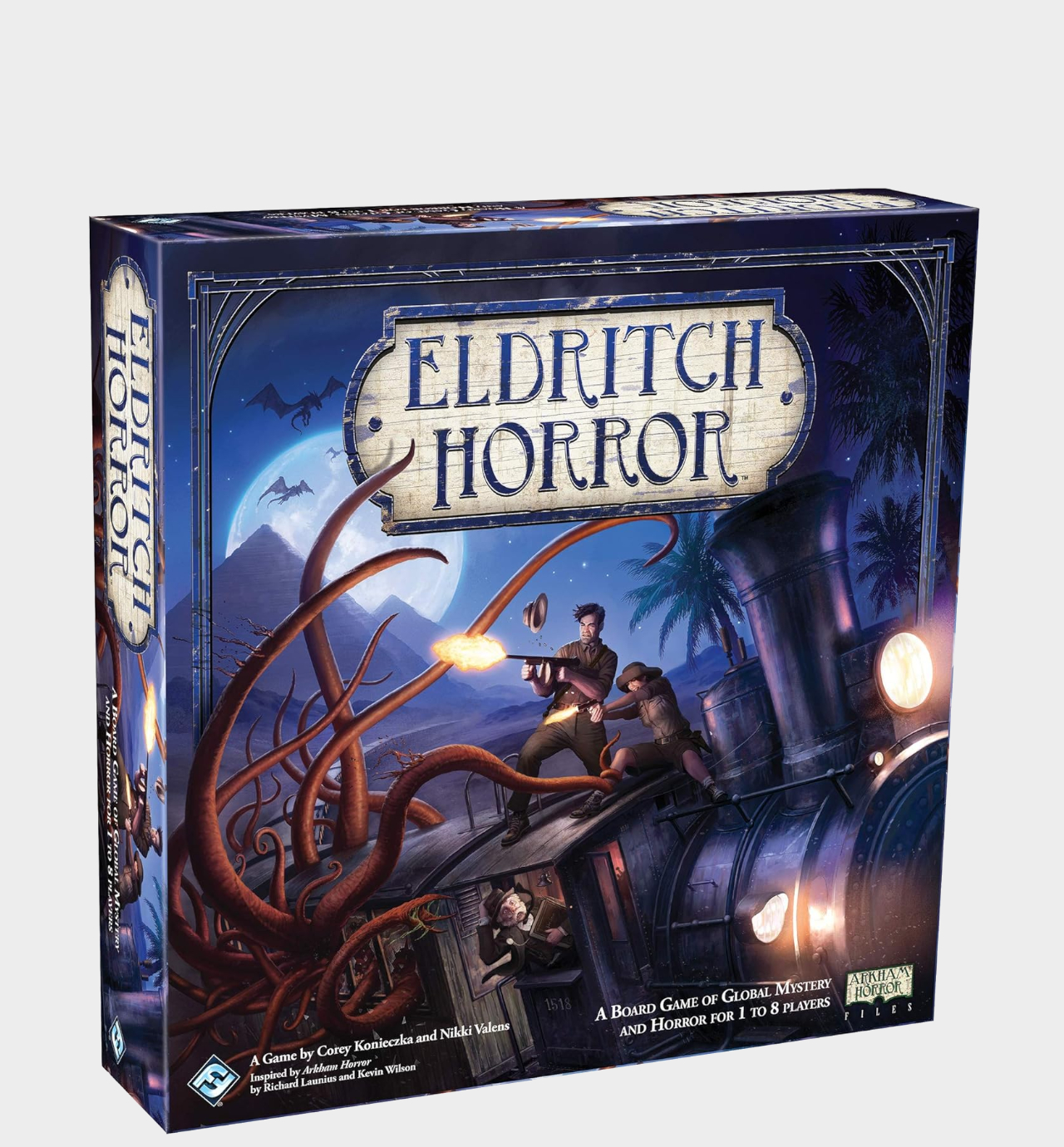
Seeing as it's based on Lovecraft's Cthulhu Mythos, this globe-trotting adventure game is cosmic horror incarnate. If 1920s investigators and brain-melting monsters are your jam, Eldritch Horror needs to be in your collection.
Best classic board game
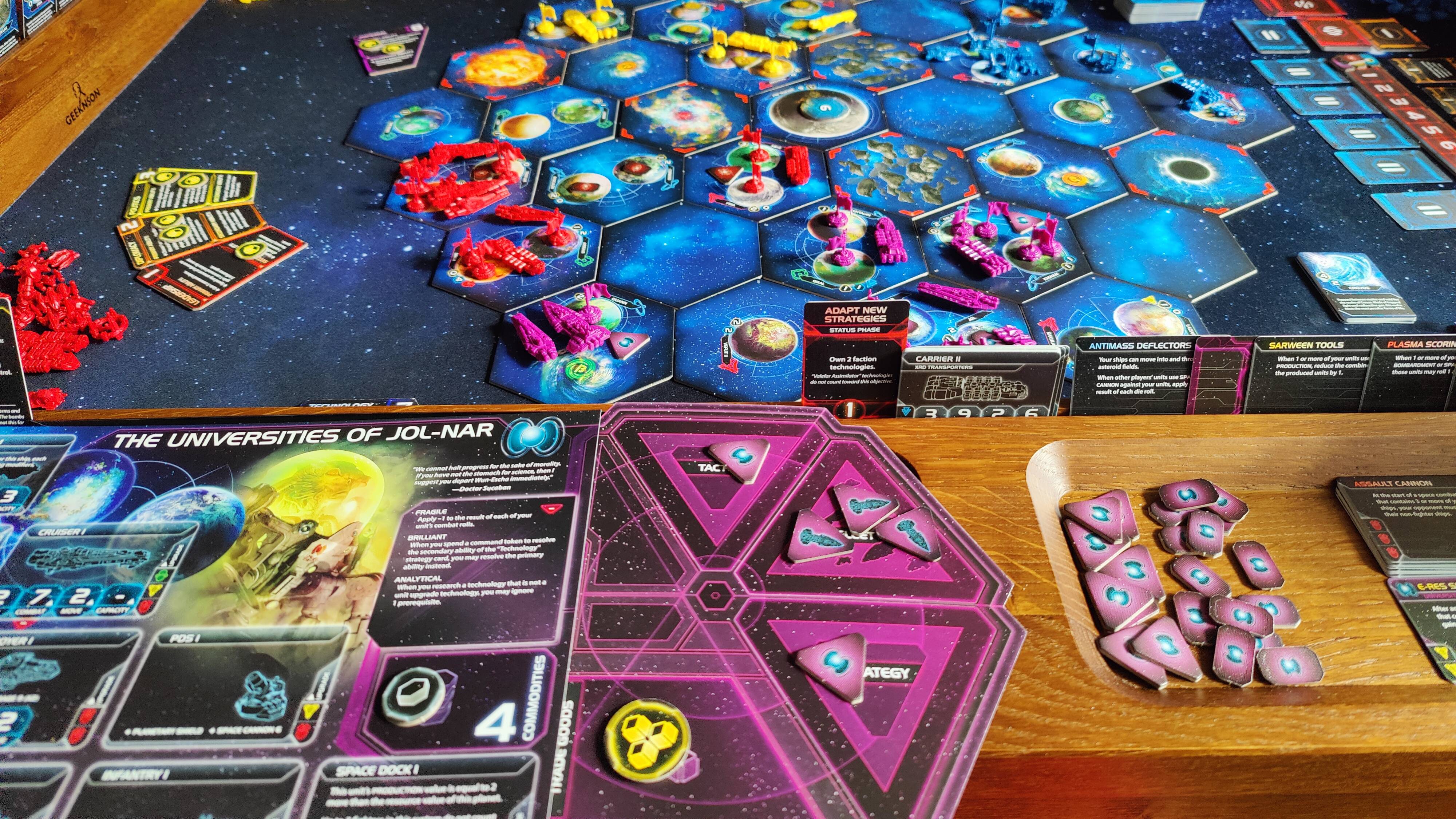
Specifications
Reasons to buy
Reasons to avoid
Few of the best board games can match Twilight Imperium's reputation; it's beloved and borderline-infamous in equal measure. "Grand strategy" comes close to describing the experience, but even that doesn't do the thing justice.
Having delighted armchair tacticians since it was first published in 1997, Twilight Imperium is a heady blend of negotiation and warfare. The result can eat up a full day if you let it, and few sessions last less than four hours. OK, it's a newer entry compared to other classic board games (1977's Cosmic Encounter, say). But none have lived up to its ambition before or since. This is exemplified by a brand-new expansion for 2025, Thunder's Edge, that adds a new lynchpin to galactic conflict alongside rules which allow you to create your own unique faction.
✅ You want truly epic sci-fi: You're managing an entire starfaring civilization in a galaxy full of them, so scale isn't a problem here.
✅ You want an unforgettable experience: For some, playing Twilight Imperium with friends across the weekend is a bucket-list dream. There aren't many board games that can match its creativity or the stories that emerge through play.
❌ You don't want a really, really long game: Sessions of Twilight Imperium last anywhere upward of four hours, but the average is six.
❌ You can't think of anyone who'd be interested in playing: If there isn't anyone you think would want to join you in this epic undertaking, the high cost of entry may not be worthwhile.
Features & design: After setting up your galaxy of planets and stars on the table, players choose one of many factions with their own strengths or weaknesses. The lion-like Emirates of Hacan excel when it comes to commerce, for instance, while the Universities of Jol-Nar are best at researching new tech.
No matter what, your aim is simple: rule the universe. The cosmos' previous rulers have stepped aside, so now everyone's scrambling to park their bums on that throne. You achieve this by completing a variety of secret or public objectives, and the result is political intrigue on an incredible scale. That's why matches can take so long.
It looks the part too. Twilight Imperium is awash with classic science fiction tropes and a 'digital' overlay that makes it look as if it's been pulled from Mass Effect.
Gameplay: When all is said and done, Twilight Imperium isn't a million miles away from Game of Thrones. Subterfuge, betrayal, and vast battles are commonplace.
While the rules powering these galaxy-shaking events aren't overly complex, they can have a big impact. As a case in point, attacks are rolled simultaneously. That means you can't ever guarantee how combat is going to pan out, so you must commit to a fight if you want to win. It's not just a case of rolling to see who gets a higher score, either; each ship has a specific attack value, and you'll roll a D10 for them all. Go over the threshold and you'll do damage.
Equally, players will vote for or against new laws that can change the game's mechanics. This leads to debates where you'll try and convince others to go your way, or an opportunity to spend your valuable 'influence' points.
Again, the downside is how long this all takes to run. You can spend an entire day on Twilight Imperium without much trouble, so be warned if you're short on time. Oh my, is it worthwhile though.
Criteria | Notes | Score |
|---|---|---|
Game mechanics | It's not a surprise that Twilight Imperium has lasted so long; there's nothing else quite like it in the world of tabletop. | 5/5 |
Accessibility | Its rules are easier to understand than you might think, but this can be an overwhelming game that takes ages to complete. | 2/5 |
Replayability | With multiple factions to play (each with their own strengths) and emergent struggles that come from player negotiation, you could play Twilight Imperium for years and not get bored. | 5/5 |
Setup and pack-down | There are a lot of moving pieces behind Twilight Imperium, and it sprawls across a table. | 2/5 |
Component quality | Top-tier sci-fi artwork and incredibly high-quality components make this one of the best-made games around. | 5/5 |

"Twilight Imperium is the ultimate big board game. It's expensive, takes ages to play, and has a ton of rules to learn, but the reward for your efforts is one of the best board games ever made.There is a ton of strategic depth here, as each player is required to balance diplomacy, trading, economics and good old fashioned space warfare. The size and mechanical depth means it’s not for everyone — I’ve always described Twilight Imperium as a mixture of Risk and a meeting of the U.N. Security council — but if that sounds like your jam then you need to get this game." Read more: Twilight Imperium review
Load honorable mentions ↓
More classic recommendations
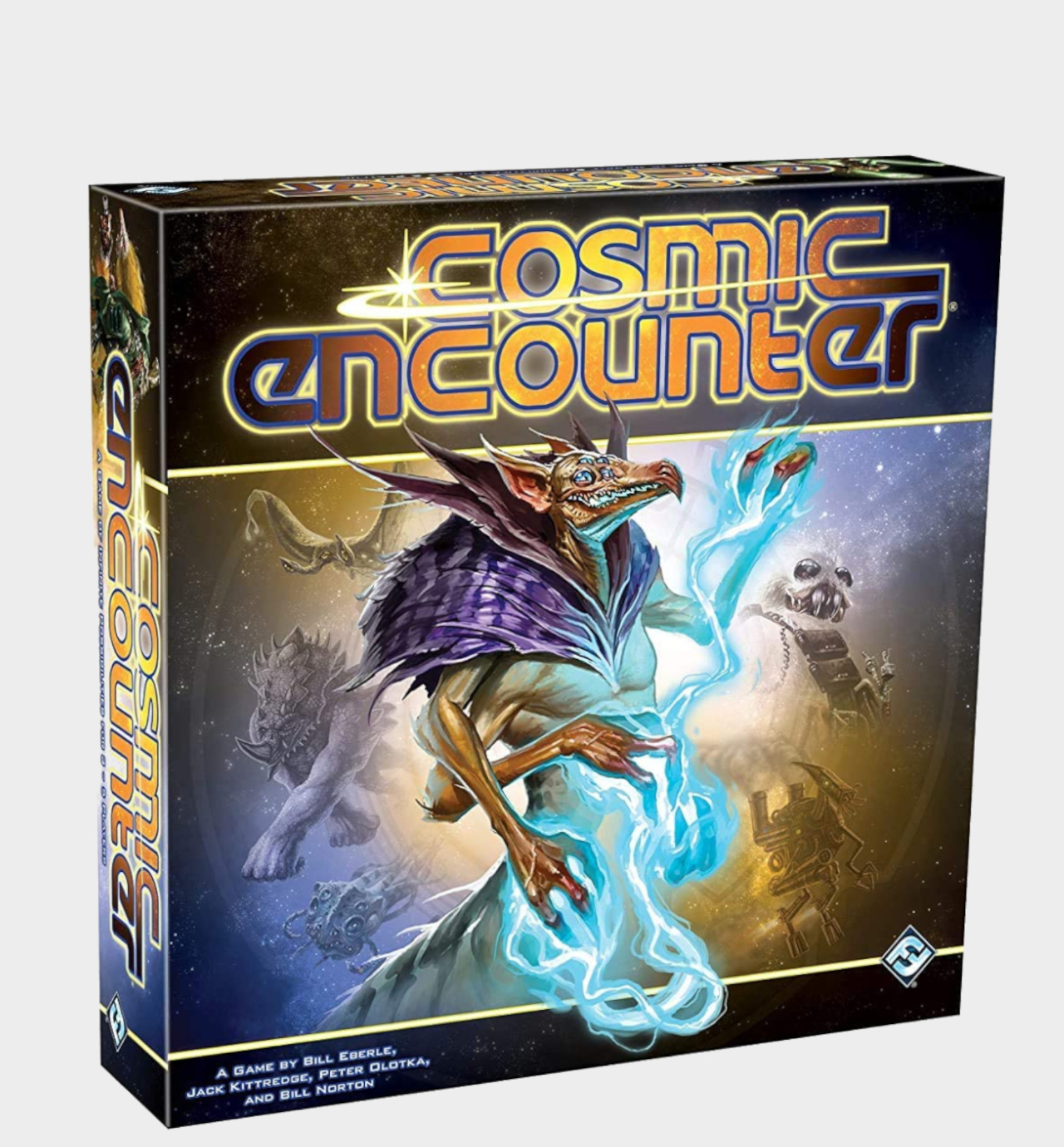
This retro classic has been around for years, and that's hardly a surprise; its cocktail of negotiation and rule-breaking is still just as gripping now as it was in the '70s. If you want a shorter alternative to Twilight Imperium, this is a great choice.
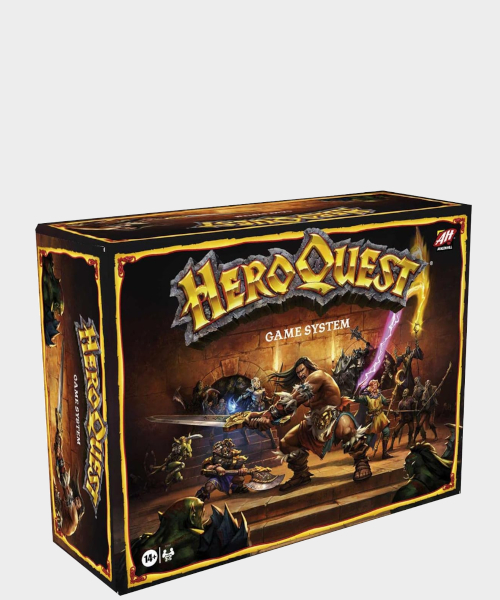
Regardless of whether you grew up with the original version or are new to the best board games, it's worth keeping HeroQuest in mind. It wrote the book on tabletop adventuring, and still has a few tricks up its sleeve like our HeroQuest review says.
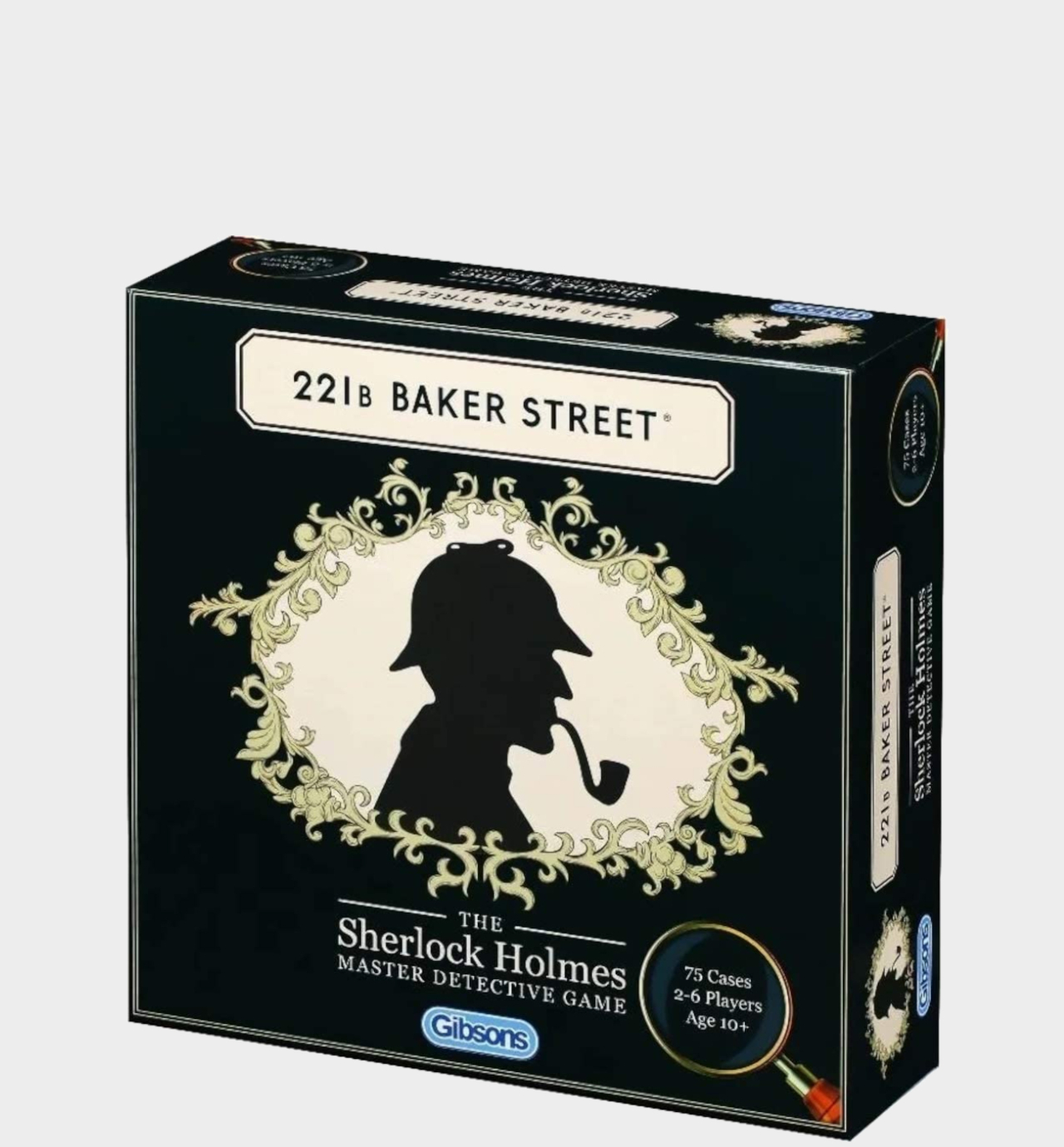
Clue is better known, but for my money, 221B Baker Street is the superior game. It's a more advanced take on the same system and is much more satisfying as a result. Plus, it features excellent Sherlock Holmes stories to set up each session.
Best trivia board game
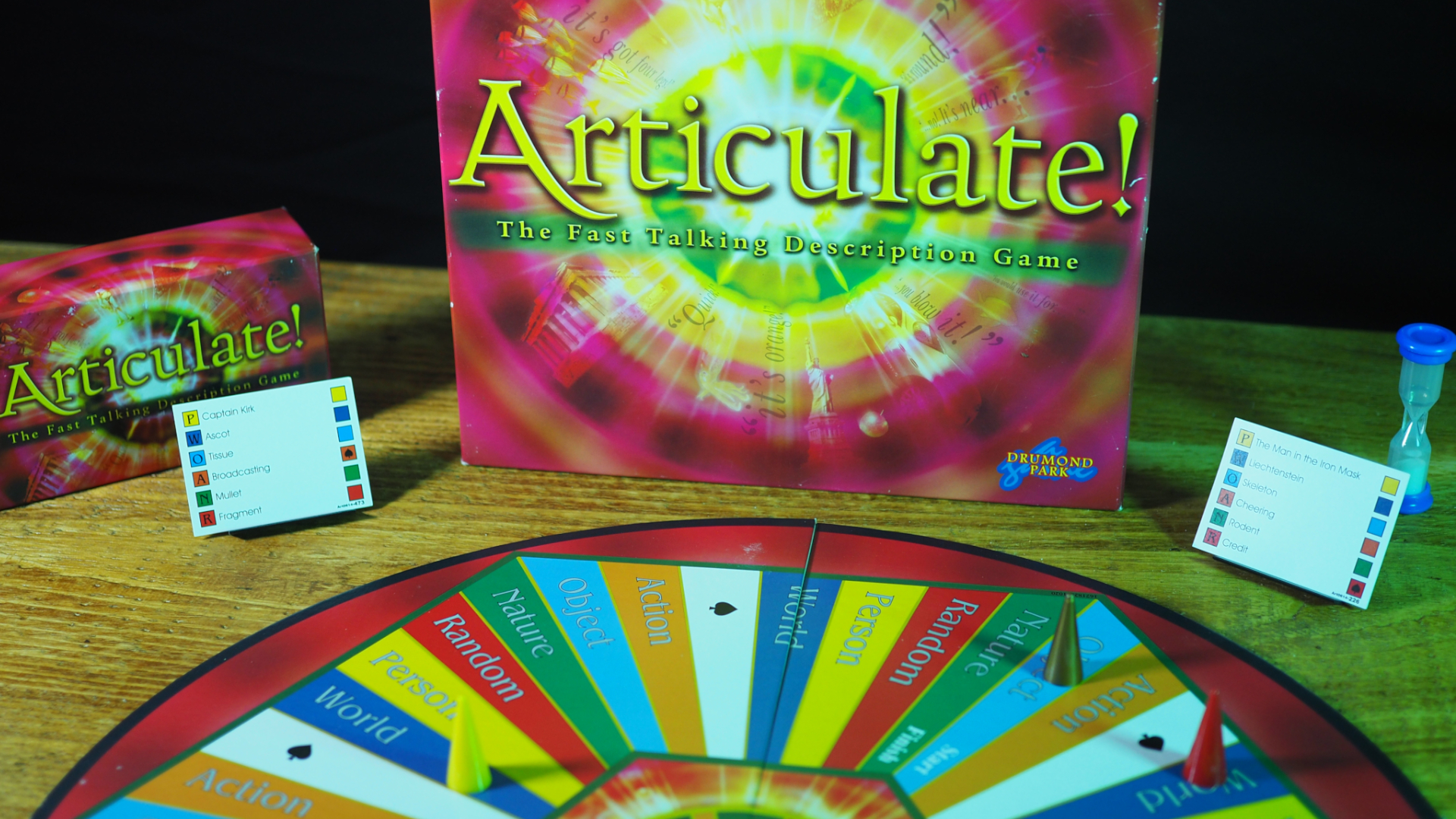
Specifications
Reasons to buy
Reasons to avoid
If you'll excuse me, I'm going to be a little controversial. Everyone knows about Trivial Pursuit, but I don't think it's the best board game for trivia fans. In my mind, that honor belongs to Articulate.
For starters, it doesn't go 'out of date' in the way its competition does. Secondly, anyone can get involved; it's something of a one-size-fits-all for get-togethers. What's more, it's ideal if you have family or friends descending on you en-masse. Up to 20 people can take part in Articulate so long as you've got even team numbers, and countless people have been enjoying the brain-teasers that follow since 1992.
✅ There are a lot of players: Due to Articulate allowing for 20 people or more, it's ideal if friends or family are descending en-masse.
✅ You want something anyone can play: Because it's a bit like charades, anyone can get their teeth into Articulate. You don't know lots of trivia either, because it emphasizes general knowledge.
❌ You want strategy: Because you're answering questions or giving out clues, there isn't much by way of strategy here.
❌ You don't like pressure: Whoever is offering clues has just 30 seconds to describe as many cards as they can, so it's pretty intense.
Features & design: Once you've split up into teams, one member from each group will draw a card. They've then got 30 seconds to describe something listed there without using those specific words (e.g. for 'king' you might say "man who wears a crown"). Because you get to take another card if your teammates guess correctly, and you move that many spaces along the board once your turn is over, being succinct is key. The quicker you are, the further you'll go.
The space you land on will dictate which category you're reading from too, and these include everything from actions to geography. Some spaces even allow you to move your token forward or put a rival back.
That's probably the most interesting thing about the board, though; it's otherwise pedestrian and a bit plain.
Gameplay: The rush to rattle through as many cards as you can on your turn is, in a word, electrifying. While some won't appreciate the pressure that comes along with the spotlight, it's surprisingly engaging.
I'll admit that the result isn't very tactical, or high-octane. Nevertheless, it is fun. The simplicity of Articulate means that anyone and everyone can get involved as well. You don't need to be the font of all knowledge either, because the categories are refreshingly broad. That also means they don't have an expiry date, unlike many trivia games.
Finally, there are enough cards that you shouldn't get bored any time soon. I've been playing Articulate for well over a decade now and still haven't grown tired of it.
Criteria | Notes | Score |
|---|---|---|
Game mechanics | Articulate's mechanics are simple and sweet. That's probably why it continues to sell so well. | 4/5 |
Accessibility | Everyone will be able to get involved with this game, and it's remarkably straightforward. | 5/5 |
Replayability | Thanks to there being so many cards (each with multiple categories on them), Articulate should keep you amused for years. | 5/5 |
Setup and pack-down | It's no trouble to lay out this game or put it away again. | 4/5 |
Component quality | Articulate's weakest point is its visual design. This is a pretty bland game, on the whole. | 2/5 |

"It isn't hard to find trivia board games, but tracking down good ones is a different story. Articulate continues to impress years after it was first published, and I always suggest it to family if they want to play something at a get-together." Read more: Articulate review
Load honorable mentions ↓
Honorable mentions
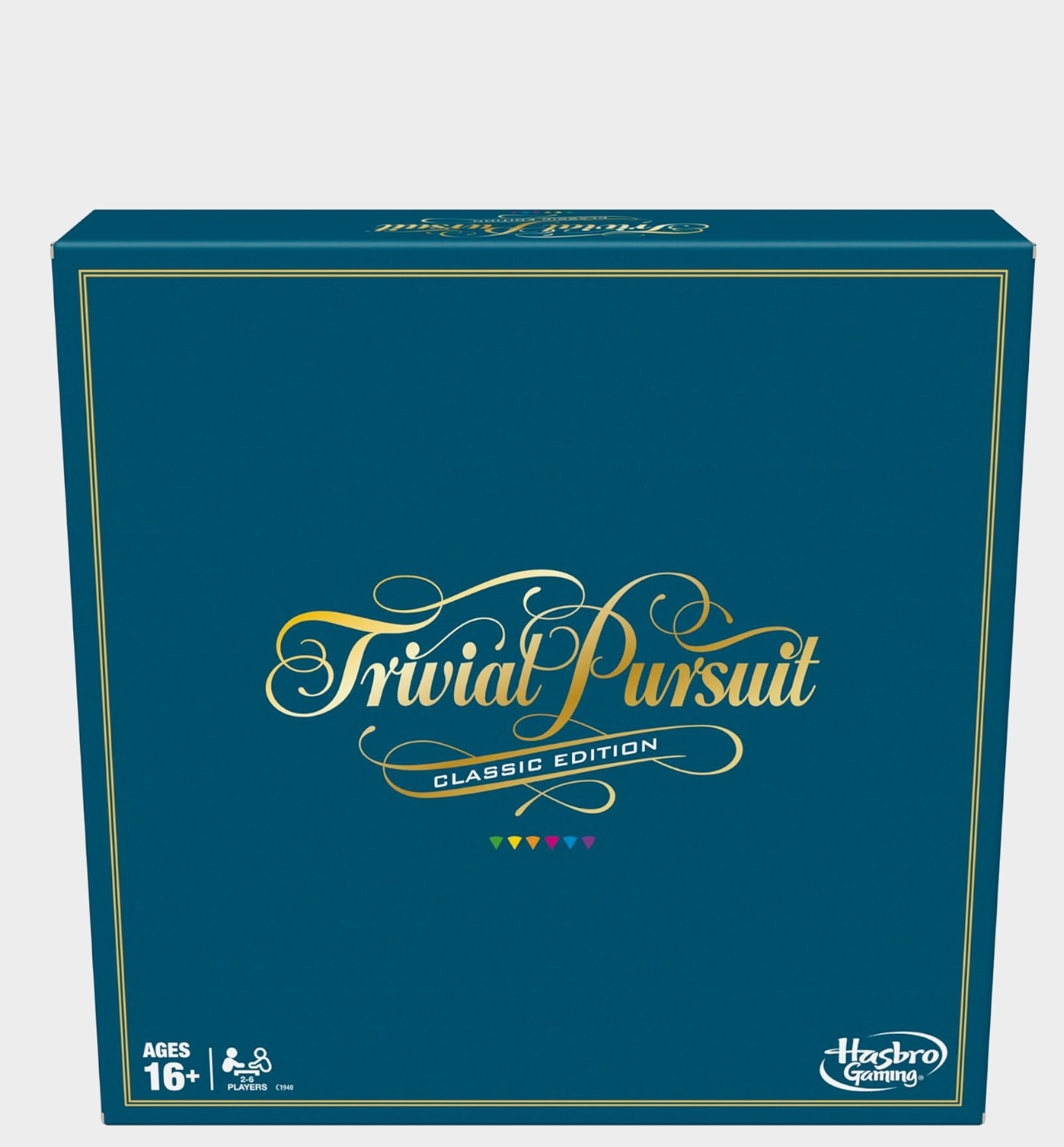
It's an absolutely iconic board game, so I couldn't go much further without nodding to Trivial Pursuit. This has delighted families since 1981, and it doesn't show any signs of slowing down now.
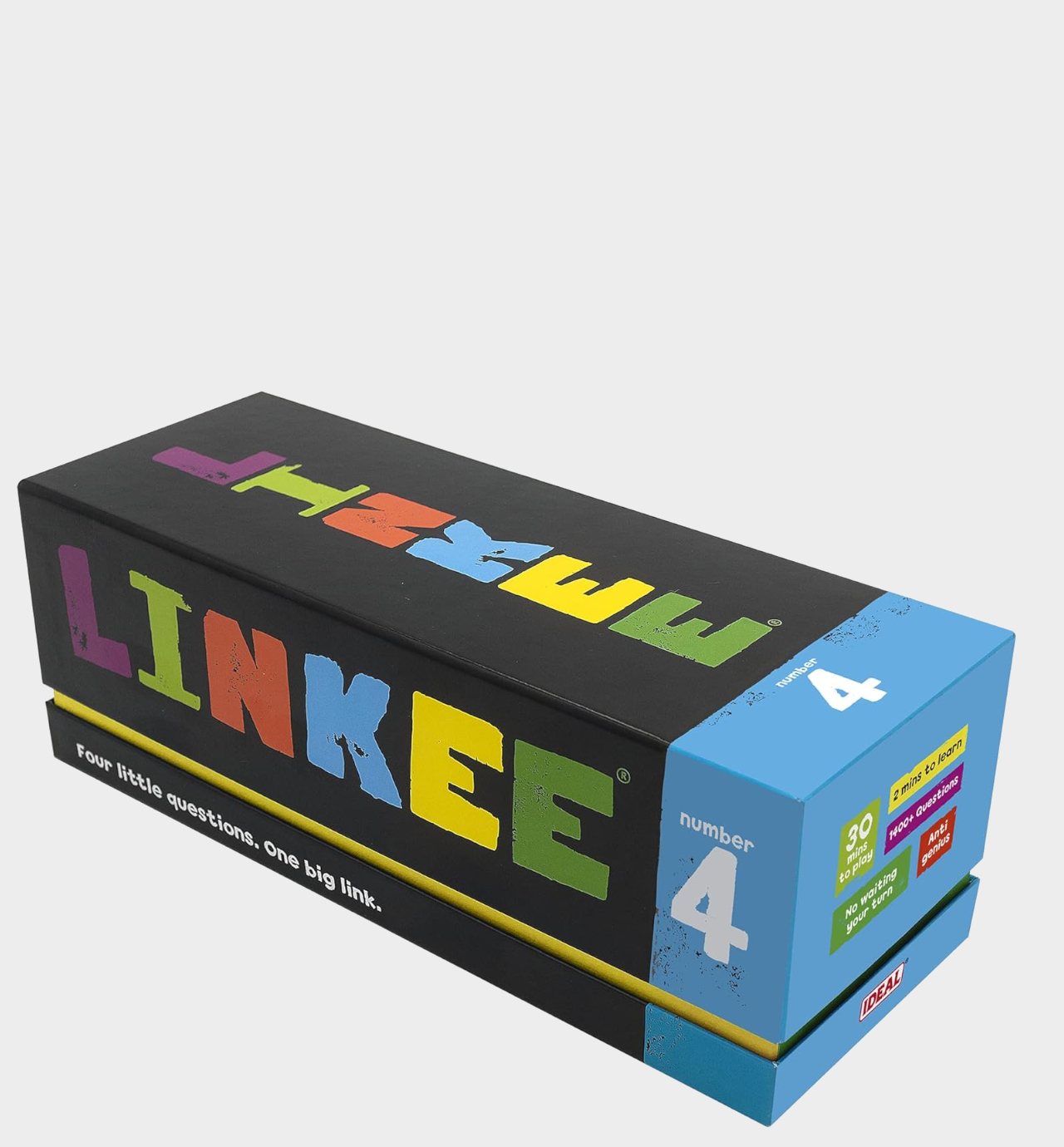
This isn't a trivia game in the traditional sense, but it will stretch your gray matter. It tasks you with answering questions that lead to something connecting them all, and you've got to work out what that 'something' is before anyone else.
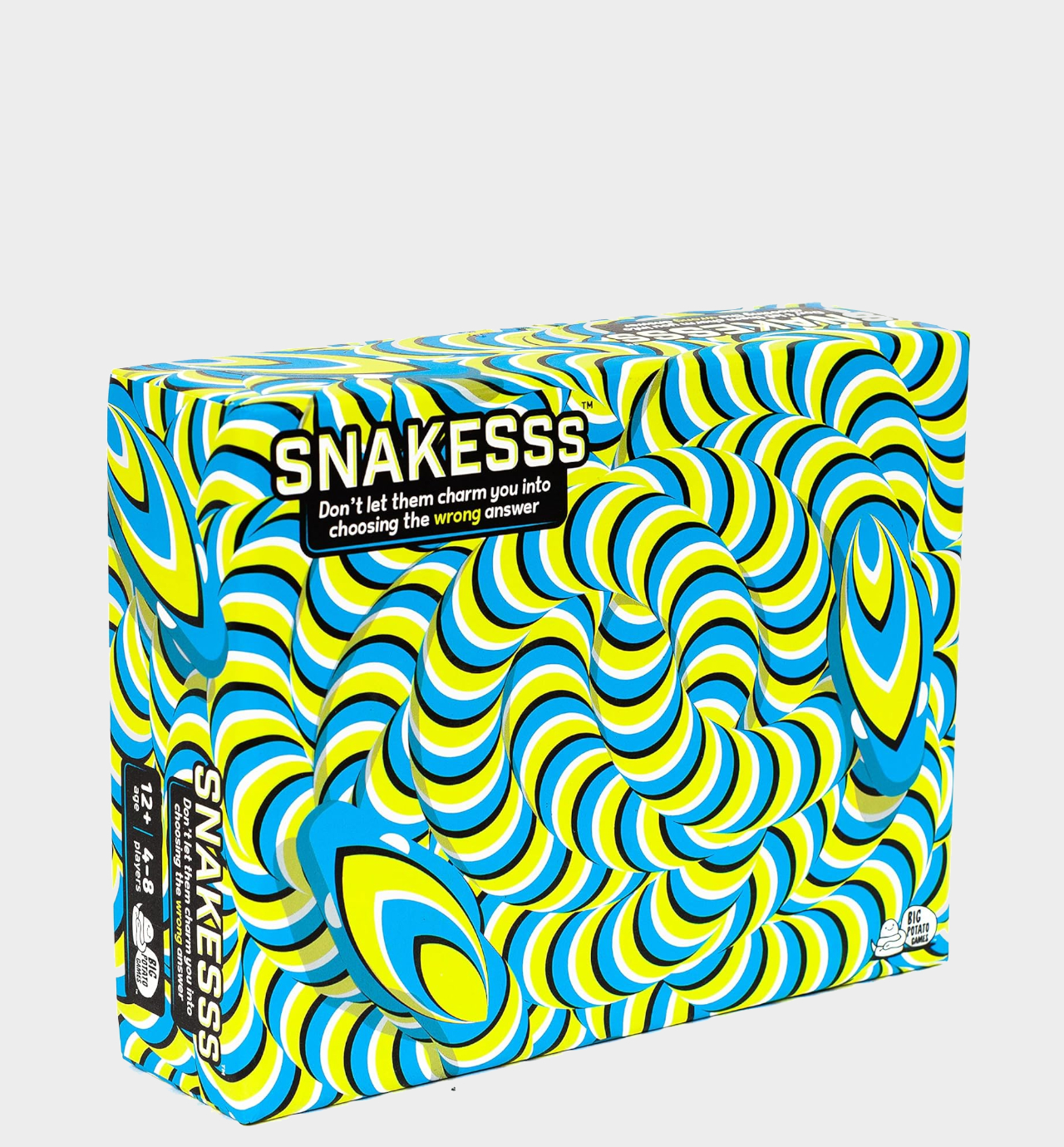
While this game still has you answering trivia questions, it throws a curveball by having secret 'snakes' amongst the players whose job it is to mislead everyone else and convince them the truth is anything but.
How to choose the best board games
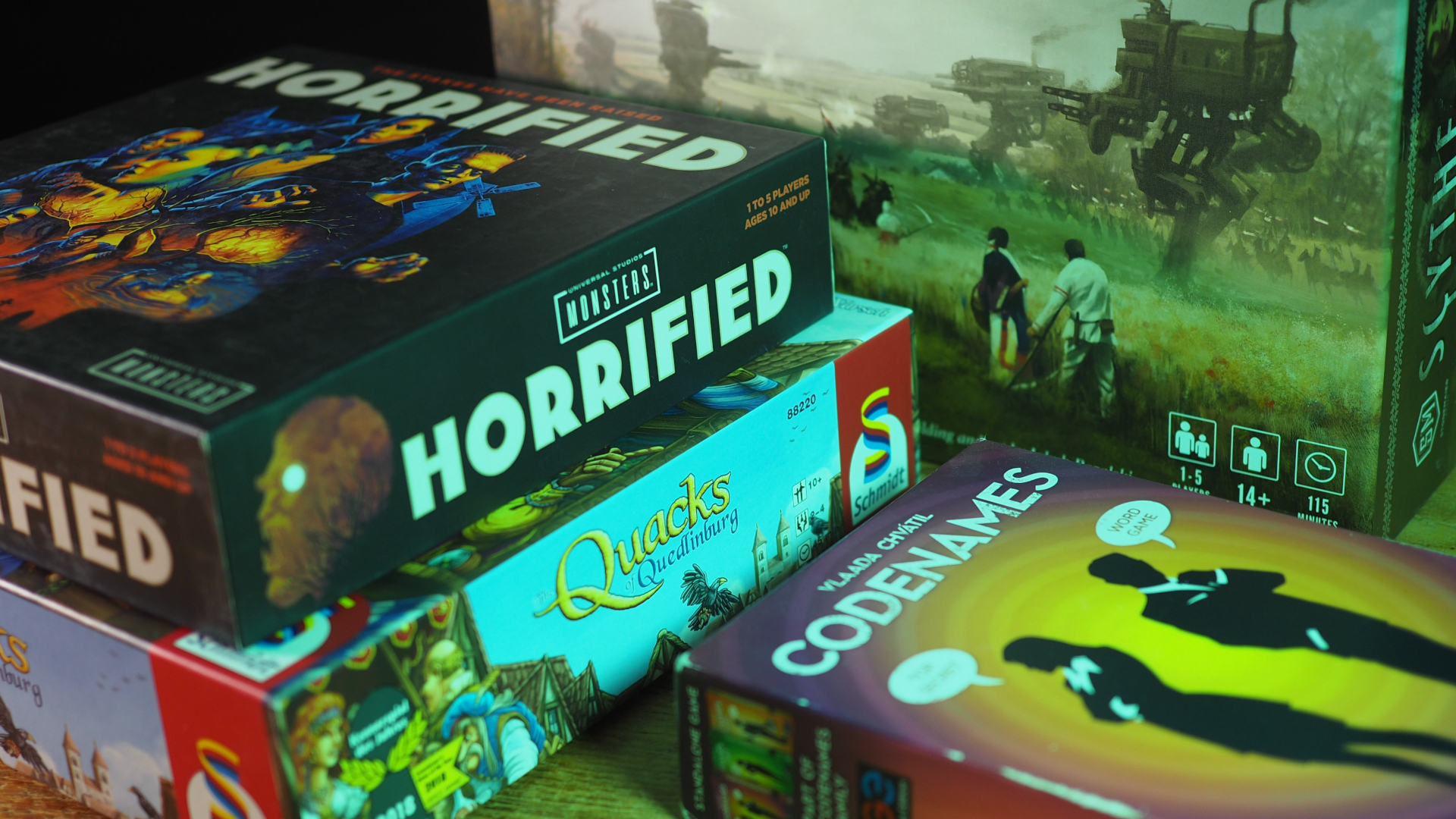
If you can't decide what you're in the mood for, or are feeling overwhelmed at the sheer amount of choice (you've got many types of board games to pick from, after all), there are a few questions you can ask yourself to narrow things down. Whenever someone asks about finding the best board games, our experts and I ask:
👨👩👦 How many players will there be?
It sounds obvious, but giving some thought to the number of people that'll be sitting around the table with you is crucial. Some games can only be played with two people, while others require a bigger crowd.
🕐 How much time are you willing to spend?
It's a simple query, but will really help you zero in on the experience for you. If you lack spare time and want something quick and easy to understand, you're better off sticking with party games from companies like Big Potato or entry-level hobby games such as Catan and Carcassonne. If you're willing to dedicate more, on the other hand, I'd point you in the direction of more complex strategies such as Wingspan or Life in Reterra.
🎲 What games do you like already?
If you're a fan of a particular style of game, trying to find something like it is a good way forward. Enjoy the easy-going nature of Herd Mentality? Pick up Color Brain next. Are you a fan of the high-fantasy HeroQuest? Try Frosthaven, or Descent: Legends of the Dark.
❓ Who are you buying for?
It's surprisingly helpful to think about who you'll be playing with. If you're mainly going to be going up against family or friends that don't like anything too complex, accessible 'family' titles like Ticket to Ride or Herd Mentality are going to be the way forward.
Are you trying to find a more in-depth game to play with your board-gaming friends, on the other hand? Go in the opposite direction - avoid family-focused products and consider 'hobby' games like Betrayal at House on the Hill, Disney Villainous, or Pandemic instead.
Longtime contributor and board game designer Katie Wickens has some advice as well. More specifically, she says that "board gaming is all about delighting your inner child – to do that you'll need to learn its language. Start with a theme. Something that brings out that childlike wonder is really important, because it'll give you something familiar, even nostalgic, to latch onto and fuel your immersion. Then you'll need to decide if you're all about playing solo, working collaboratively with others, or crushing your enemies at every turn. Some games will deliver you solitude, while others feed the team player in you, and some will feed your will to dominate, with the latter often landing somewhere on a sliding scale of relationship-endangerment.
"Your gaming group's needs should factor in too. There's no point presenting Grandma with an intensely strategic Eurogame when a simple game of snakes and ladders will do. Most importantly, think about what makes your brain light up. That could be collecting and managing resources, thinking tactically to outmaneuver your opponent, or even building something beautiful – the mechanics we mention will give you an idea of whether a game will speak to you. Remember: everyone games differently, and there's something out there for everyone."
How we test the best board games
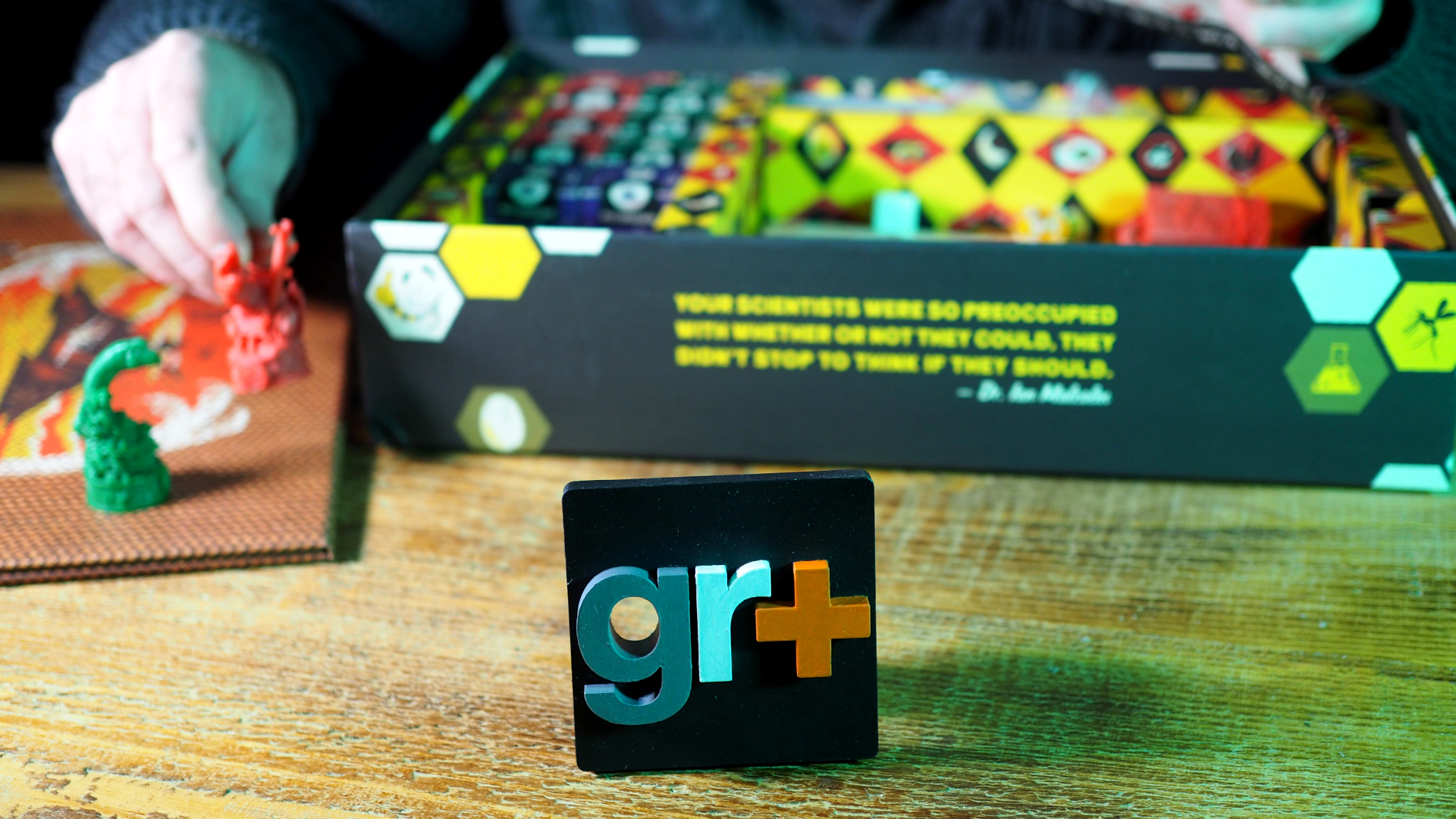
- Our team has written more than 100 tabletop game reviews
- We've spent years interviewing industry experts
- We've reported on board games for over six years
- We visit board game conventions & events each year
The way we test products is incredibly important to the GamesRadar+ team, and our experts (who have years of experience covering the industry) won't ever recommend anything unless they legitimately feel it's worth your time. If we don't think a product is one of the best board games, it doesn't get onto this page.
You can find more details in our dedicated 'how we test board games' feature, but the GamesRadar+ process involves our reviewers spending as much time playing and living with a game as possible, allowing us to go far beyond surface-level judgements. This helps them ascertain what it does well, what it fails at, and its overall longevity. We also run multiple sessions with different player counts, just to see how the experience differs.
When approaching the critique on this page, we use four distinct sections described below:
- Introduction: We discuss the 'elevator pitch' of a game (what does it do differently?) here, along with 'buy if/don't buy if' boxouts to help you decide if it's right for you at a glance.
- Features & design: A game's basic mechanics are discussed here. We also explore its art/components in this section.
- Gameplay: As the name would suggest, the majority of our review will focus on a game's mechanics. Is it fun? Is the core loop satisfying? Is the pacing off? We'll discuss everything we did and didn't like about gameplay here.
- Expert verdict: We ask our experts for their opinion on the game in question, to provide an alternate take.
We finish each recommendation with a ratings table that covers essential elements like setup, complexity, and the good old-fashioned question of whether gameplay is fun or not. It looks something like this, and features a score out of five for every category:
Category | Notes | Score |
|---|---|---|
Game mechanics | A breakdown of how good the game's systems are. | ?/5 |
Accessibility | Is the game easy to get into? We let you know here. | ?/5 |
Replayability | Our experts dig into the longevity of a game here. | ?/5 |
Setup and pack-down | Can you set the game up quickly, or is it a pain to put away? We'll give our verdict in this section. | ?/5 |
Component quality | Are the game's pieces going to last? We'll let you know. | ?/5 |
For a more in-depth examination of our process sitewide, be sure to see the GamesRadar+ review policy.
Recently tested
We never stop reviewing board games new and old; it's our job, and one we take very seriously. Plenty of games have hit our testing table recently, and as always, we score them out of five stars based on the individual criteria listed above. You can see our 15 most recent reviews in the following grid, complete with their ratings.
Best board games FAQ
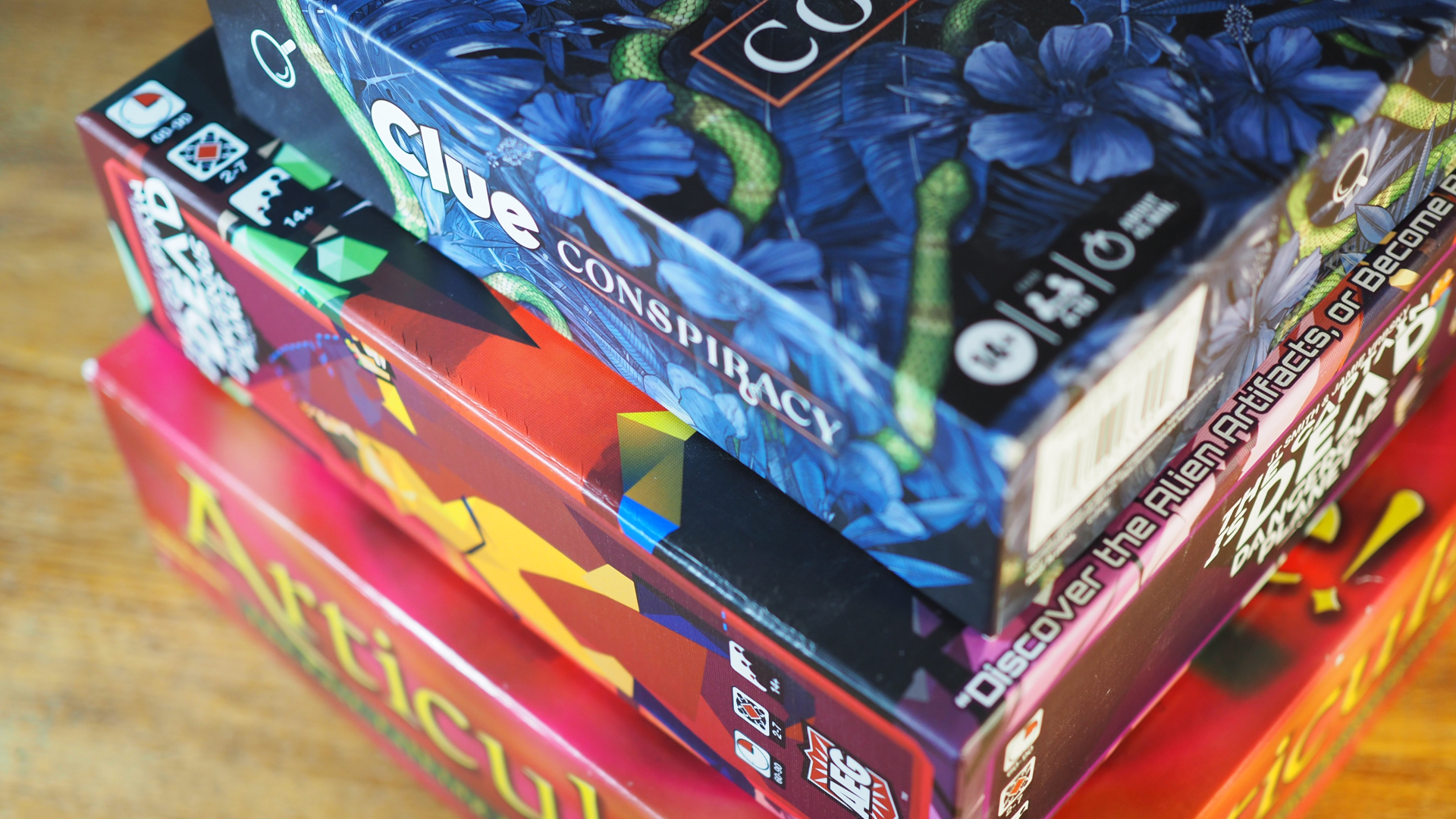
What is the most popular board game in 2025?
There have been plenty of board games to snatch up fans' attention over the past few months, but one has risen to the top of the pile: Fate of the Fellowship, by Pandemic designer Matt Leacock. I've seen nothing but positive gushing about this online thanks to its clever twist on a familiar formula, and if I had to pick one board game as the most popular of 2025, it'd be this. Indeed, Leacock himself said that it was "definitely the most thematically and mechanically rich game I’ve worked on" when we interviewed him earlier this year.
It's not alone, though. Earlier on in 2025, Wingspan spinoff Finspan made waves (no pun intended) too. Much like its dragon-themed predecessor that came out the year before, Finspan was unveiled by surprise and released in quick succession. Because of Wingspan's pedigree, along with an ocean-based theme fans had been asking for, that was enough to create a furore.
Similarly, narrative game Vantage has caused a ruckus - one which is well deserved, according to our in-depth Vantage review. In fact, we called it "a masterclass in narrative and sandbox gameplay."
Catan's new edition that is "modernizing" it for today's audience also got its fair share of attention at the start of the year. Seeing as Catan is one of the most influential games around, any changes to the formula are justifiably going to attract a spotlight.
Still, these answers are all based on what the community is interested in - not necessarily in terms of sales. So far as popularity by way of bestsellers goes, family-favorites such as Connect 4 come up trumps according to Amazon's list (followed by modern classics such as Codenames and Ticket to Ride). Sure, that's not a definitive guide. But seeing as Amazon is potentially the most popular retailer in the world, it's a decent temperature check. Similarly, it's true that this doesn't account for what customers thought of the games after they played them... but it's a starting point.
Of course, there's no way to discuss 'popular' board games without addressing the elephant (or should that be pawn?) in the room - chess. This ancient pastime has been going strong for longer than anyone can remember, and such staying power is reflected in annual sales. To be precise, chess has a habit of shifting around 3 million units each and every year. That's more than most of the best board games combined.
What is the #1 board game?
If you want to know what the number one board game in the world is, it largely depends on what you're judging that on. If you were looking for the best board games in terms of sales, it'd almost certainly be chess. This ancient pastime sells around three million units each and every year, making everything else on the market look pretty insignificant by comparison. Monopoly follows shortly afterward with more than 200 million copies sold across its 80-year lifespan, which isn't bad going by any stretch of the imagination.
If we were going by ratings, however, it'd be a very different story. Take a look at popular tabletop forums and you'll often find the likes of Brass: Birmingham or RPG epic Gloomhaven ranking highly. Indeed, our team has certainly rated Gloomhaven and its smaller prequel as highly as we can thanks to their incredibly high quality. Actually, 'legacy' mechanics such as those seen in the latter (where the consequences for your actions carry over from session to session) are often a big hit with players.
So, what do we think? In the opinion of the GamesRadar+ team, we believe it depends on the kind of game you're looking for - the answer varies based on whether you'd like a co-op experience, strategy, or something else entirely. As luck would have it, we've listed what we think are the best board games in each category on this very page... Here's a quick rundown of the best board games in 2025:
Best overall: Catan
Best co-op: Pandemic
Best for adults: Fate of the Fellowship
Best 2-player: Sky Team
Best roleplaying: Gloomhaven: Jaws of the Lion
Best party: Codenames
Best strategy: Root
Best horror: Betrayal at House on the Hill
Best classic: Twilight Imperium
Best for families: Ticket to Ride
Best for kids: King of Tokyo
Best trivia: Articulate
Which board games should I look forward to in 2025?
The tabletop gaming world never sits still, and new products are landing on shelves every single month. (It feels like there's a steady avalanche, in fact.) Because there's so much to sift through, the GamesRadar+ team and I have rounded up a few board games we're looking forward to in particular this year. If you put anything on your wishlist over the next few months, we'd suggest making it these entries.
Viking Route | View at Kickstarter
We were very taken with this Viking-themed co-op game delighted us when we had a go at this year's UK Games Expo, so it went onto our wishlist immediately. You should put it on yours too, because it has an ingenious new mechanic using magnets that decides where your longhship goes next. Good forward-planning is essential as a result, providing a fresh challenge I've certainly not seen before now.
📅 Release date: October 2025
Flamecraft Duels | View at Kickstarter
It's not entirely clear when this spin-off will hit shelves (it's suggesting a December 2025 release date at the time of writing), but Flamecraft Duels is worth watching out for anyway. It's all kinds of cozy cottage-core, so is perfect for a quiet games night at home.
📅 Release date: December 2025
Builders of Baldur's Gate | View at Wizkids
Considering how in the zeitgeist Baldur's Gate is, this city-building spin-off focusing on the city is one we've got our eye on. You'll spend your time building your best version of the D&D metropolis.
📅 Release date: Q3 2025
Feya's Swamp | View at Fractal Juegos
There's a good amount of chatter surrounding this handsome economics game. Thanks to the enticing mix of trade and exploration, we can see why.
📅 Release date: TBC 2025
The Witcher: Path of Destiny | View at Gamefound
This narrative-based game caught our eye because it's a blend of the classic short stories from Geralt's past fed through the world of CD Projekt Red's games. If you're a fan of choose-your-own or story-heavy experiences with a gritty twist, this should be on your wishlist.
📅 Release date: October 2025
What are the best board games to come out in 2025 so far?
We're closing in on the final months of 2025, so I can now say with confidence that it's been a damn good year for the best board games. Despite the US-China tariff situation rocking the boat in a significant way, some fantastic titles have hit shelves in the past 12 months. Here are some of our favorites.
Battle of Hoth | View at Miniature Market
One of the biggest games in 2025 was this intense, tactical recreation of the opening battle in Empire Strikes Back. It's based on the Command & Color system and features 17 different scenarios to work through, which netted it a good score in our Star Wars: Battle of Hoth review.
Horrified: Dungeons & Dragons | View at Zatu
I have a lot of time for the Horrified franchise, and for my money, it's comfortably one of the best co-op series out there. Although previous spin-offs focusing on American Monsters and Greek Myth were fun, this is the one I've been most excited about. I'm a massive D&D fan, and I think it has some of the best monsters in all of fantasy, so the combination is a match made in heaven... something proven by its high score in our Horrified: Dungeons & Dragons review.
Gwent: The Legendary Card Game | View at Hachette
This adaptation of the popular Witcher card game impressed us when we saw it in person at the UK Games Expo, and we then came away very impressed by the head-to-head card battler during our Gwent: The Legendary Card Game review.
Fate of the Fellowship | View at Asmodee
This Lord of the Rings adaptation has lit something of a fire under tabletop fans, and it's probably the game I've seen the most buzz about this year by a wide margin. That's because it's made by Matt Leacock, creator of the Pandemic franchise, and uses those same mechanics. Because Pandemic is a stone-cold classic, Fate of the Fellowship feels worthy of all the attention. Find out more in our full review.
Vantage | View at Stonemaier Games
This is one of 2025's other hugely anticipated games. It crash-lands you on an alien world that is yours to explore, and that kind of freedom is intoxicating. There are plenty of secrets to uncover too, so beware of spoilers! Get the lowdown in our review.
Finspan | View at Amazon
The announcement of Wingspan's underwater spinoff took many of us by surprise, but the idea just makes sense. It takes the same mechanics and applies it to the ocean (albeit with different depths of water instead of unique habitats like its predecessor), so what's not to like? This has been pitched as a more beginner-friendly game than Wingspan or the more complex Wyrmspan, and that makes it the perfect introduction.
The Sandcastles of Burgundy | View at Ravensburger
This utterly adorable children's game (which adapts the beloved Castles of Burgundy) has charmed us every single time we've seen it. A must-have if you're getting your kids into board gaming.
Galactic Cruise | View at Gamefound
We keep seeing industry buzz about this sci-fi game, and it's just come off the back of a very successful crowdfunding campaign. We'll be waiting a hot minute for it to arrive at retail as a result, but it'll be well worth a look when it does.
Timber Town | View at Hachette
Because this builds on the mechanics of Life in Reterra, Carcassonne, and more, this new game can't come soon enough for the GamesRadar+ team. Your aim is to snatch up tiles as they 'float' downriver, and these are used to build a village for beavers. We singled this out as one to watch when we visited the UK Games Expo 2025.
Super Boss Monster | View at Brotherwise
I've had a soft spot for the Boss Monster franchise ever since my older brother brought the original card game home over a decade ago. This 'ultimate' edition combines the dungeon-building the series is known for with a larger town map, and it's backwards compatible with other Boss Monster releases. That makes it the perfect collection for longtime fans or those who've never tried it.
Flip 7 | View at The OP
Despite being a simple idea, Flip 7 has taken the industry by storm. Anyone can get involved in this family-friendly game about pushing your luck, and the tension involved (along with a chance to sabotage rivals) helps it stick with you even after you've finished playing.
Dune: Imperium - Bloodlines | View at Dire Wolf Digital
As an expansion to the excellent Dune: Imperium Uprising, Bloodlines takes things to the next level with game-changing tech tiles and new Leaders to master. As mentioned by contributor Samantha Nelson in her review, fans should "make it a default part of your games."
Azul Duel | View at Amazon
Seeing as puzzle classic Azul is so beloved, any two-player version was going to garner a lot of attention. This is a much more streamlined experience that caters specifically to two players, so it's perfect for travel or couples.
The Fellowship of the Ring: Trick Taking Game | View at Amazon
There was a lot of excited buzz surrounding this beautifully-illustrated card game earlier in 2025, and it's a novel spin on the trick taking concept thanks to co-op gameplay. I managed to see it in person at the London Toy Fair early this year and walked away impressed, so I recommend putting it on your wishlist now if it isn't already.
Everdell Duo | View at Amazon
Everdell is the sort of game you need a few people to get the most out of, and that's not always practical. As such, this two-player version leapt onto our radar because it condenses those concepts into a more bitesize form.
Arydia: The Paths We Dare Tread | View at Far Off Games
Here's an enormous, open-world RPG to keep us all busy. Having been in the works for years after a successful Kickstarter, and it promises epic co-op adventures featuring 60+ pre-painted miniatures, 40+ hours of play, and around 300 map cards. Contributor Katie Wickens was full of praise for it in her review, saying that it "manages to give everyone somethings D&D can't match."
Critter Kitchen | View at Cardboard Alchemy
We're suckers for cozy games like this, so the spiritual successor to Flamecraft caught our attention right away. Your aim is to gather ingredients for an almighty meal your restaurant's going to make, all to impress a celebrity critic. It's a cute concept with some light but satisfying competition.
The Last of Us: Escape the Dark | View at Themeborne
This gritty, grungy spin on Escape the Dark Castle focuses on tough choices, emphasizes narrative, and shines a spotlight on teamwork. That made it an early standout of 2025, particularly thanks to that stunning monochrome art style.
Metal Gear Solid: The Board Game | View at CMON
It took a very long time to get to this point, but the adaptation of Hideo Kojima's classic video game finally arrived early in 2025. It was made by the very talented designer of the stealth epic Specter Ops, so Solid Snake hasn't ever been better.
Where can I buy cheap board games?
We spend a lot of our time looking for good board game deals each week, and we've built up a list of go-to retailers that have proven to be consistently reliable. You can find these below.
US
- Amazon: Best for variety
- Target: Gets exclusive products
- Walmart: For family classics
- Miniature Market: For hobby games
UK
- Amazon: Best fovr variety
- Magic Madhouse: Surprisingly good offers
- Zatu: Deals on hobby games
- Argos: Good for family games
- Very: Family game deals
- John Lewis: Solid deals on all kinds
Eager for more recommendations? If you want something to play at your next game night, don't miss the best D&D books.
Weekly digests, tales from the communities you love, and more

I've been writing about games in one form or another since 2012, and now manage GamesRadar+'s tabletop gaming and toy coverage. You'll find my grubby paws on everything from board game reviews to the latest Lego news.
